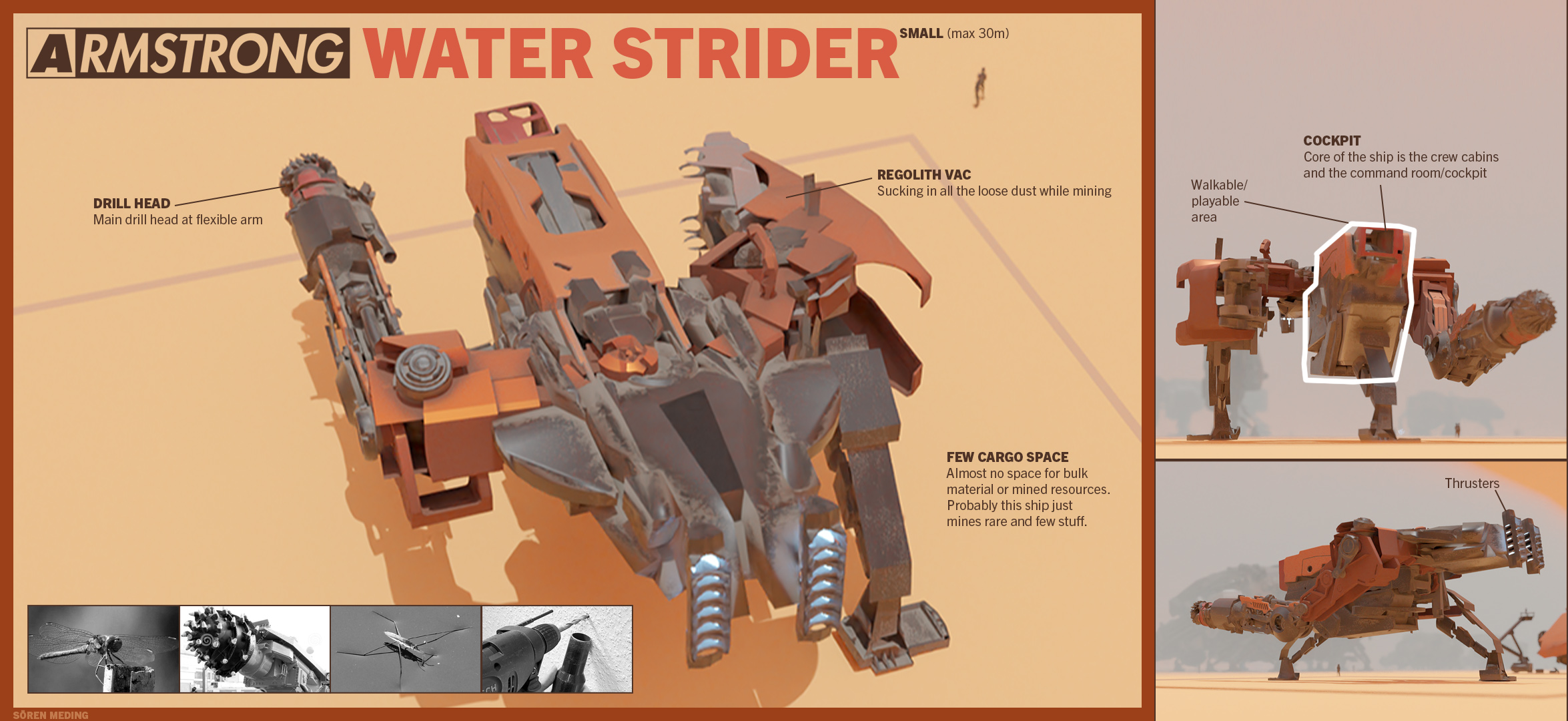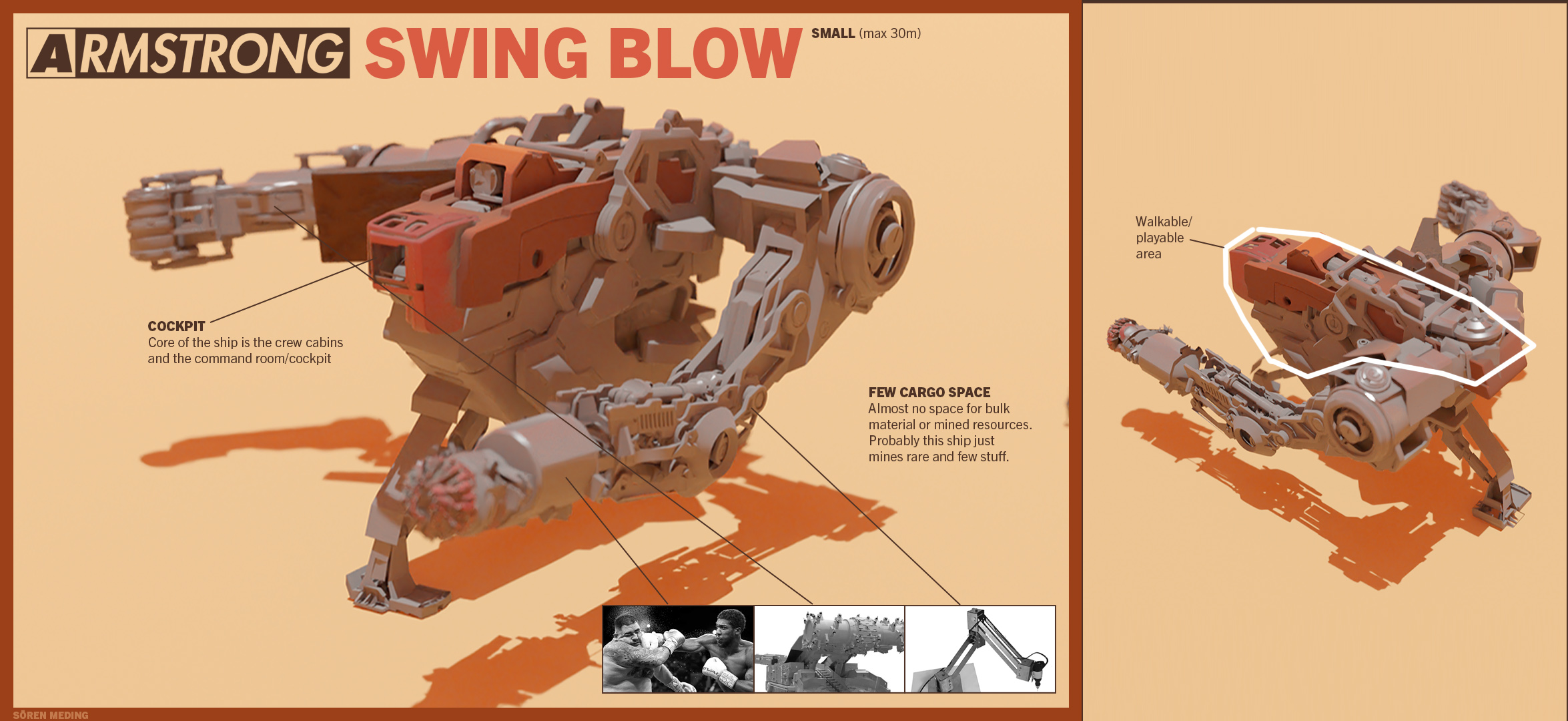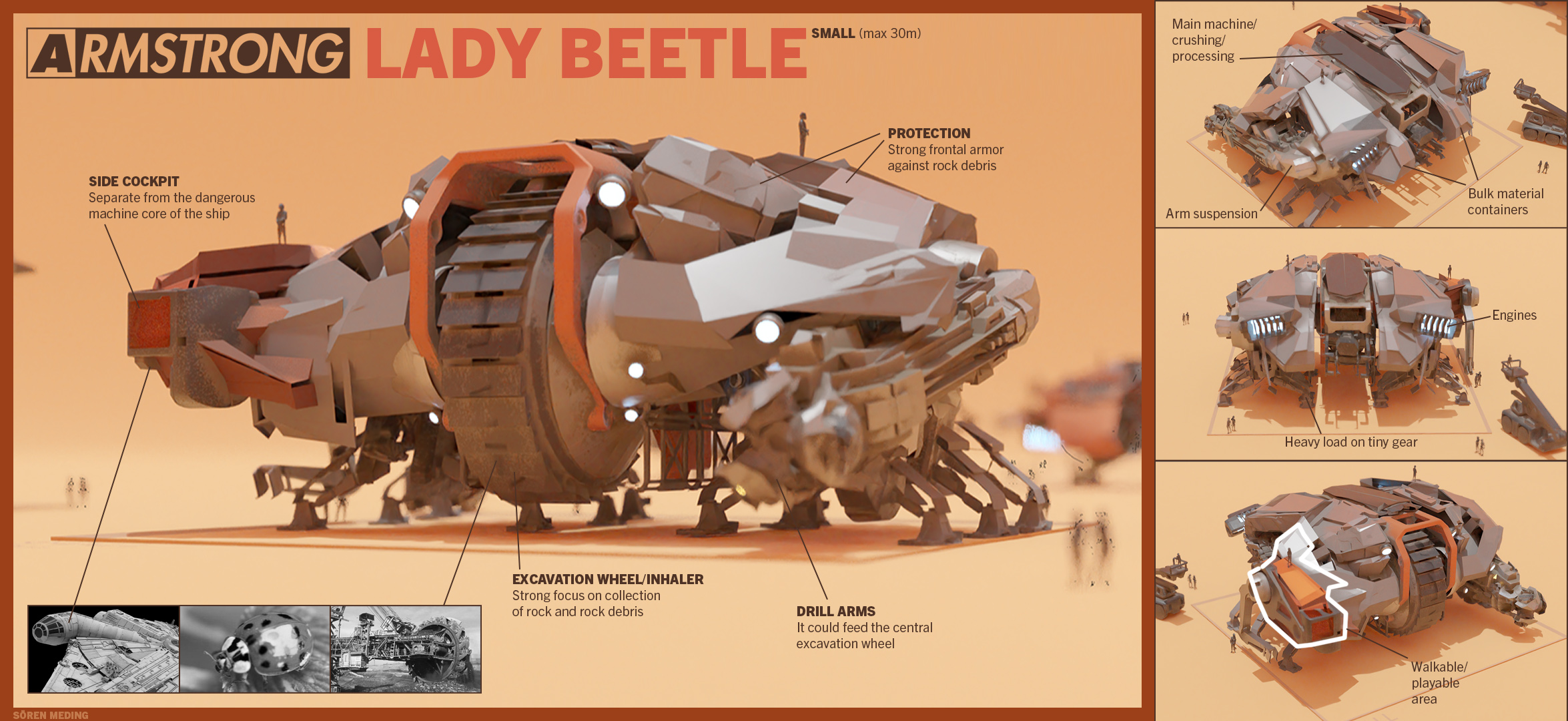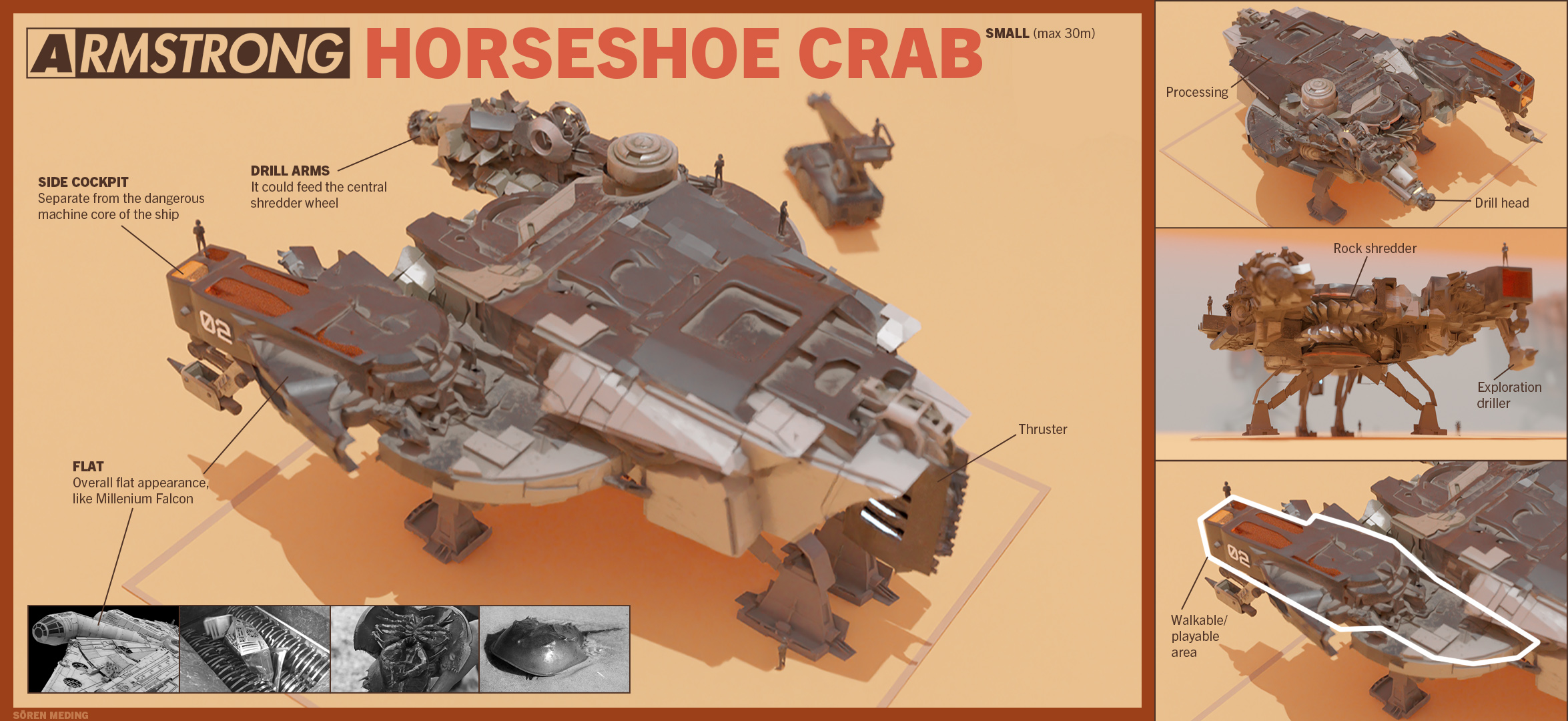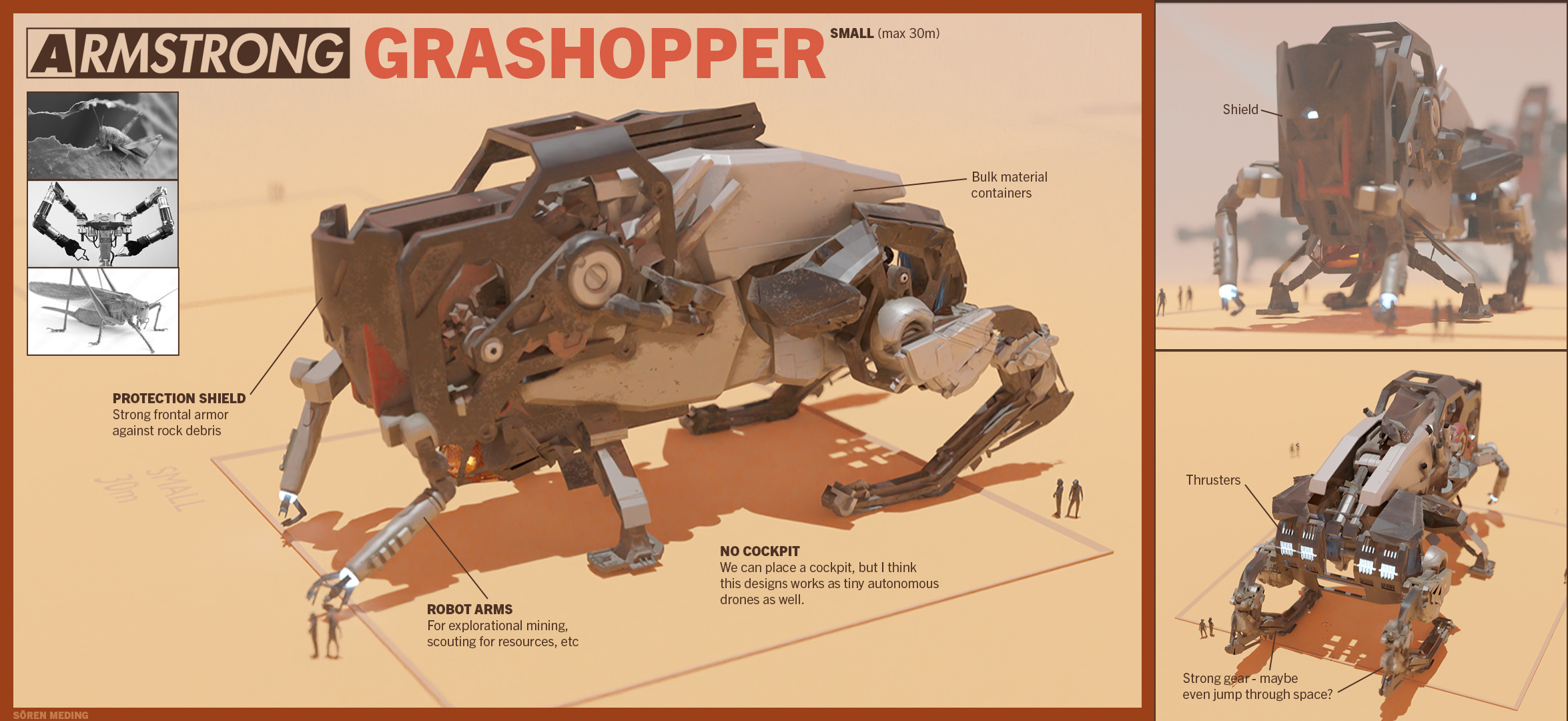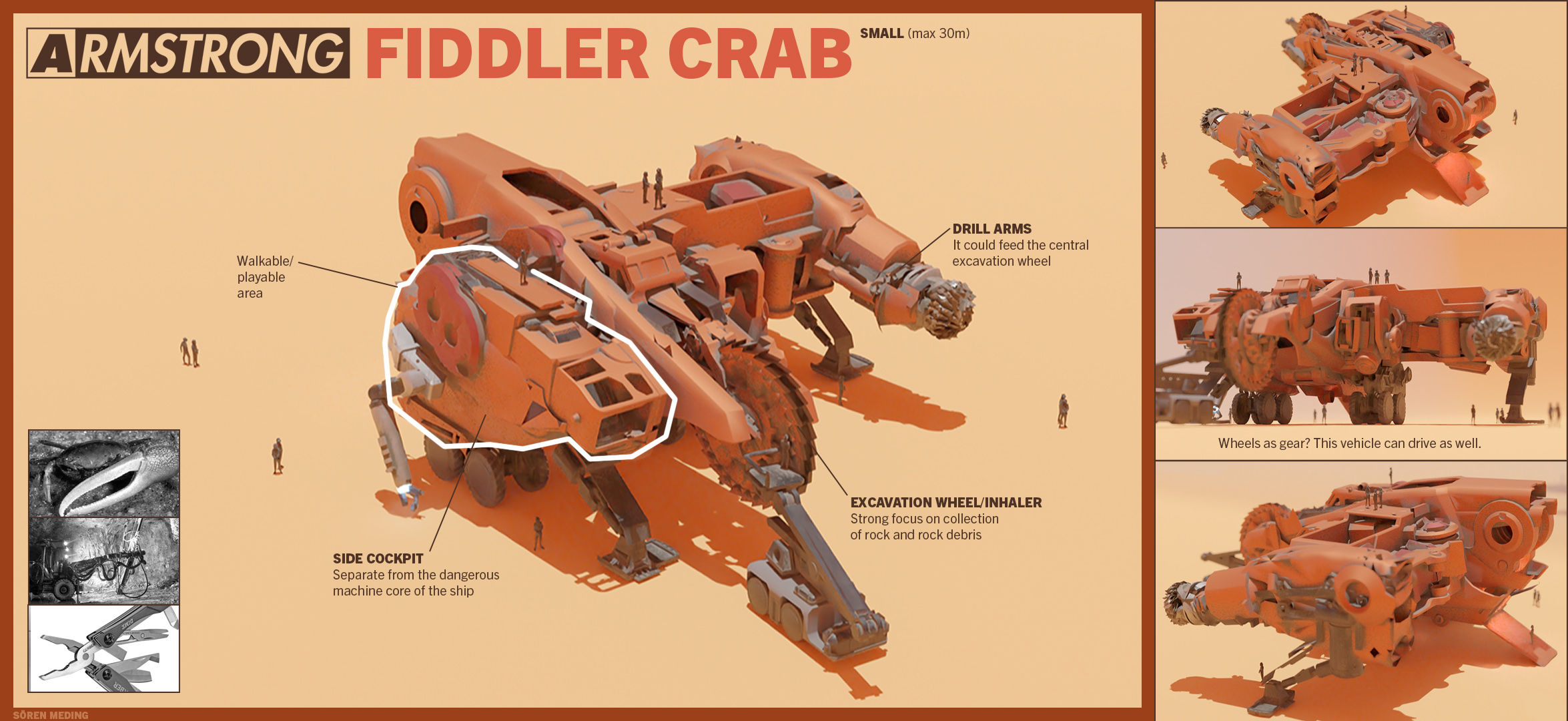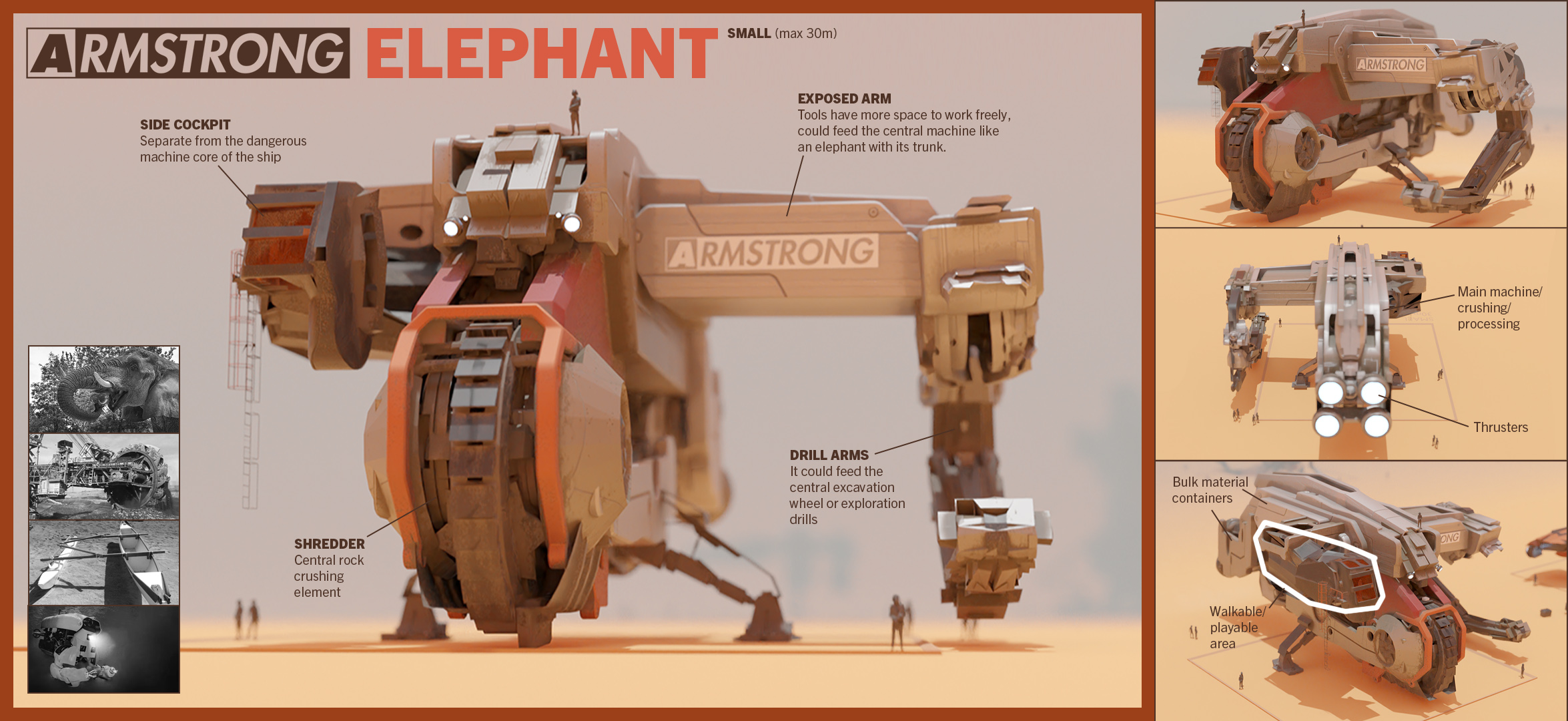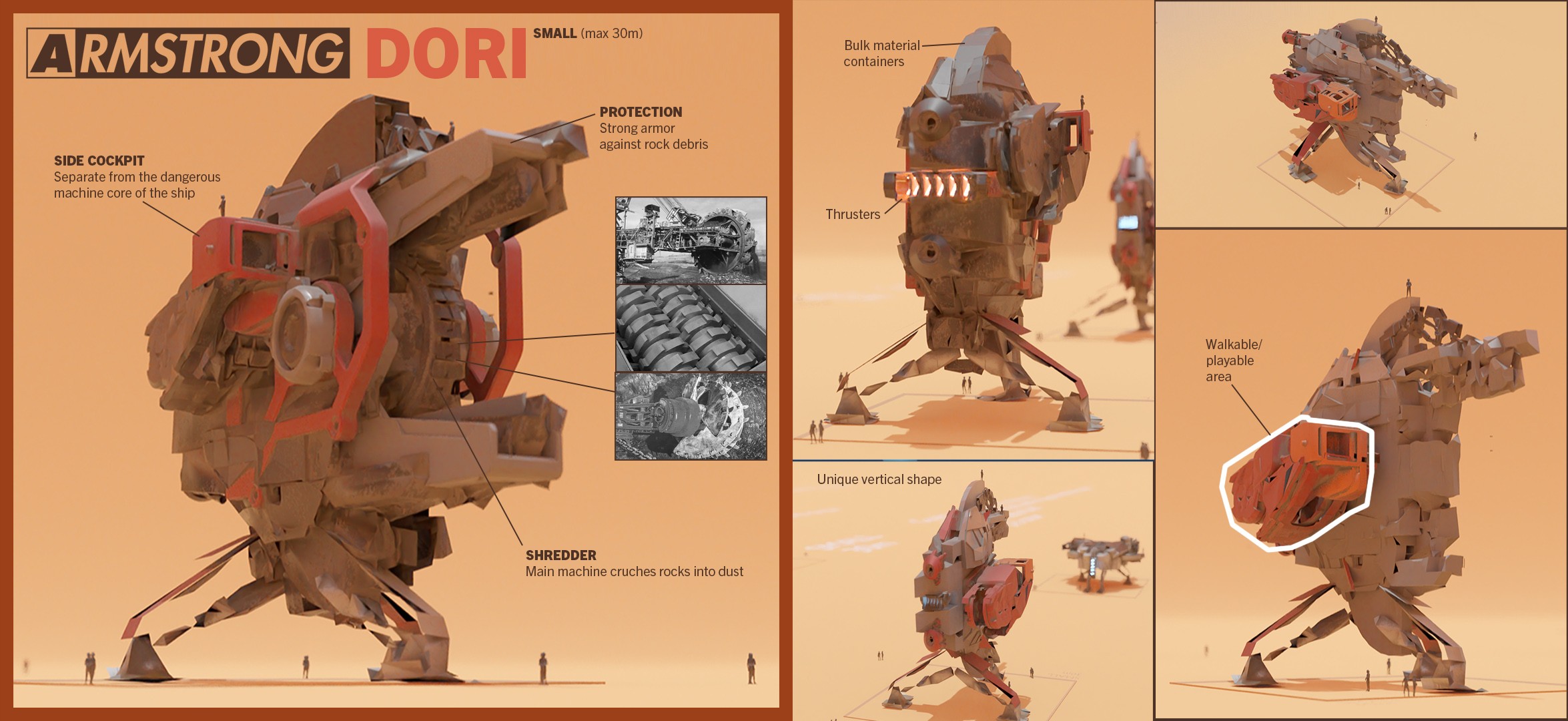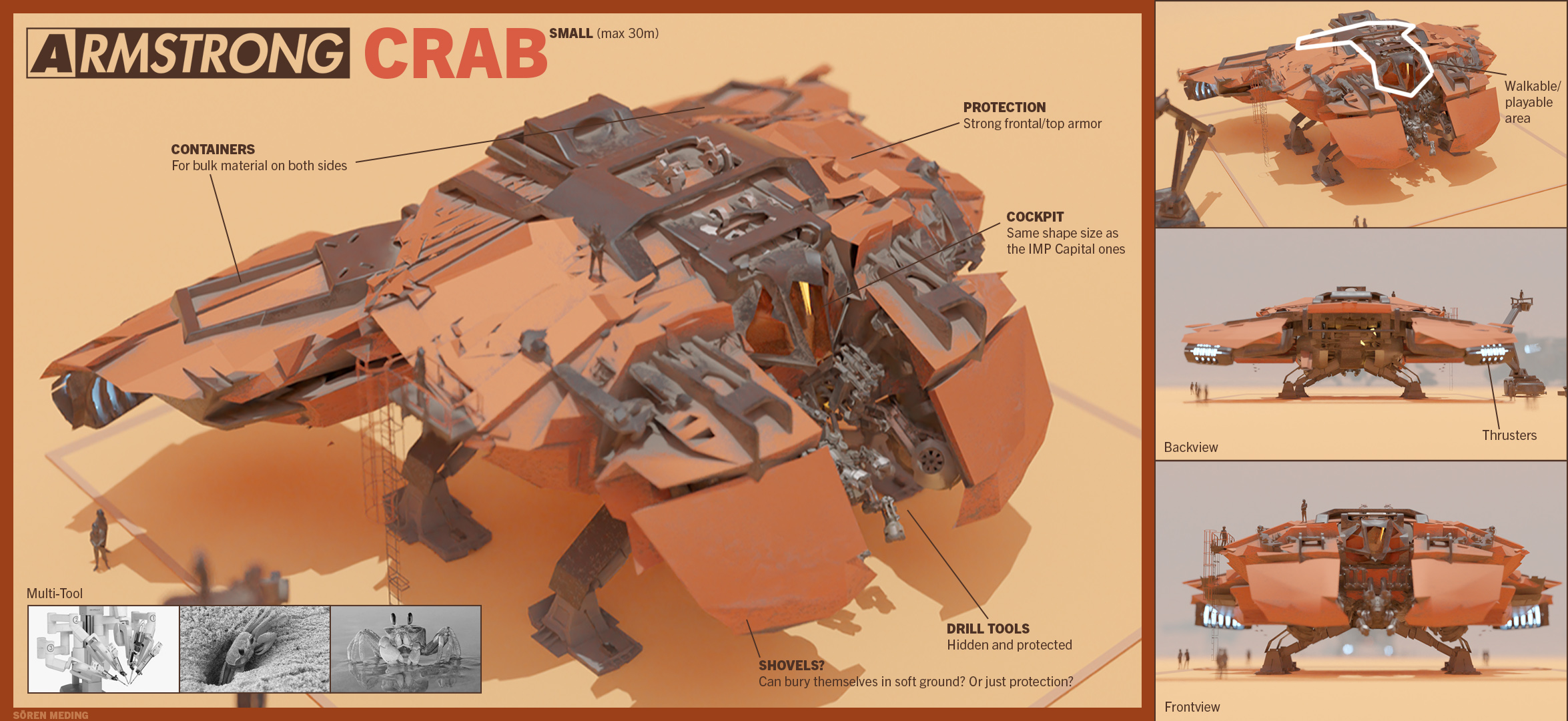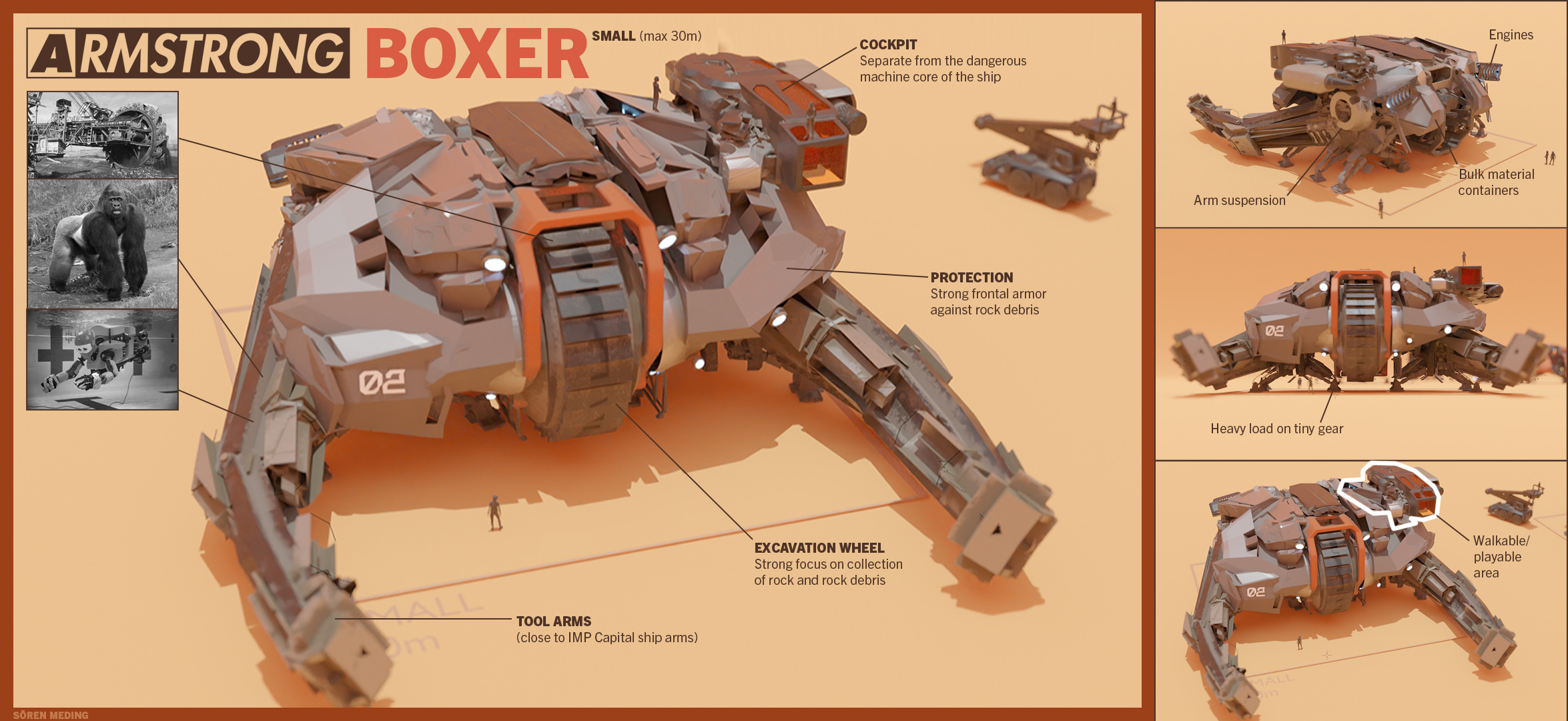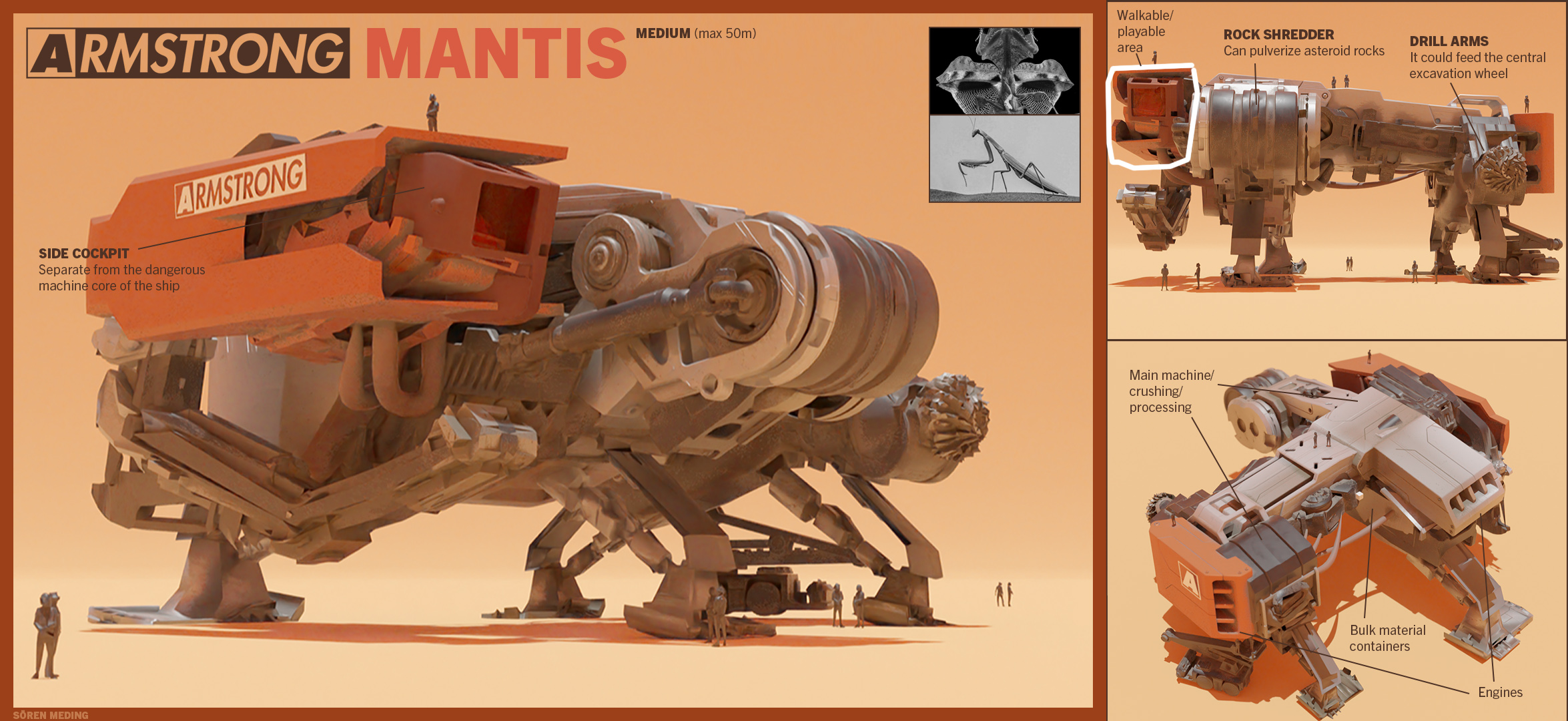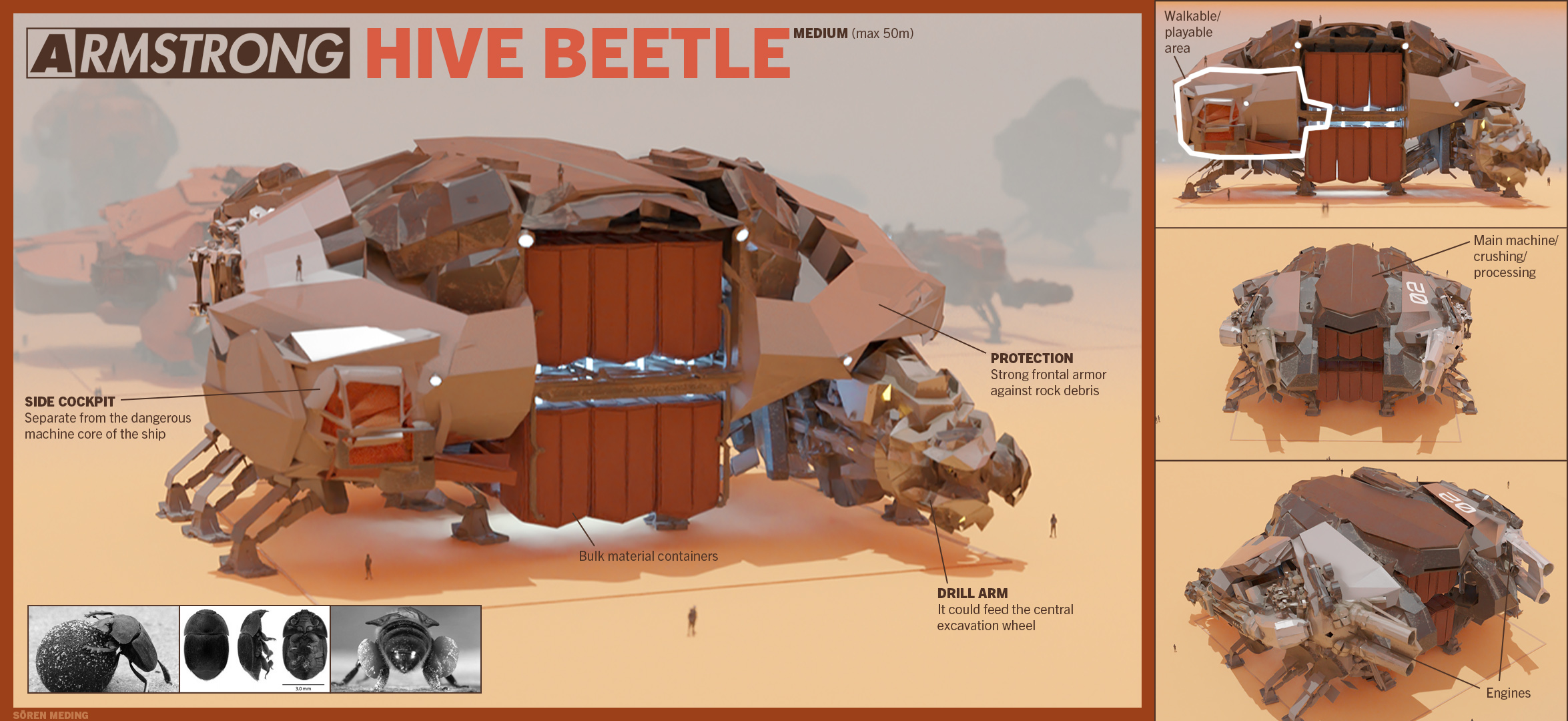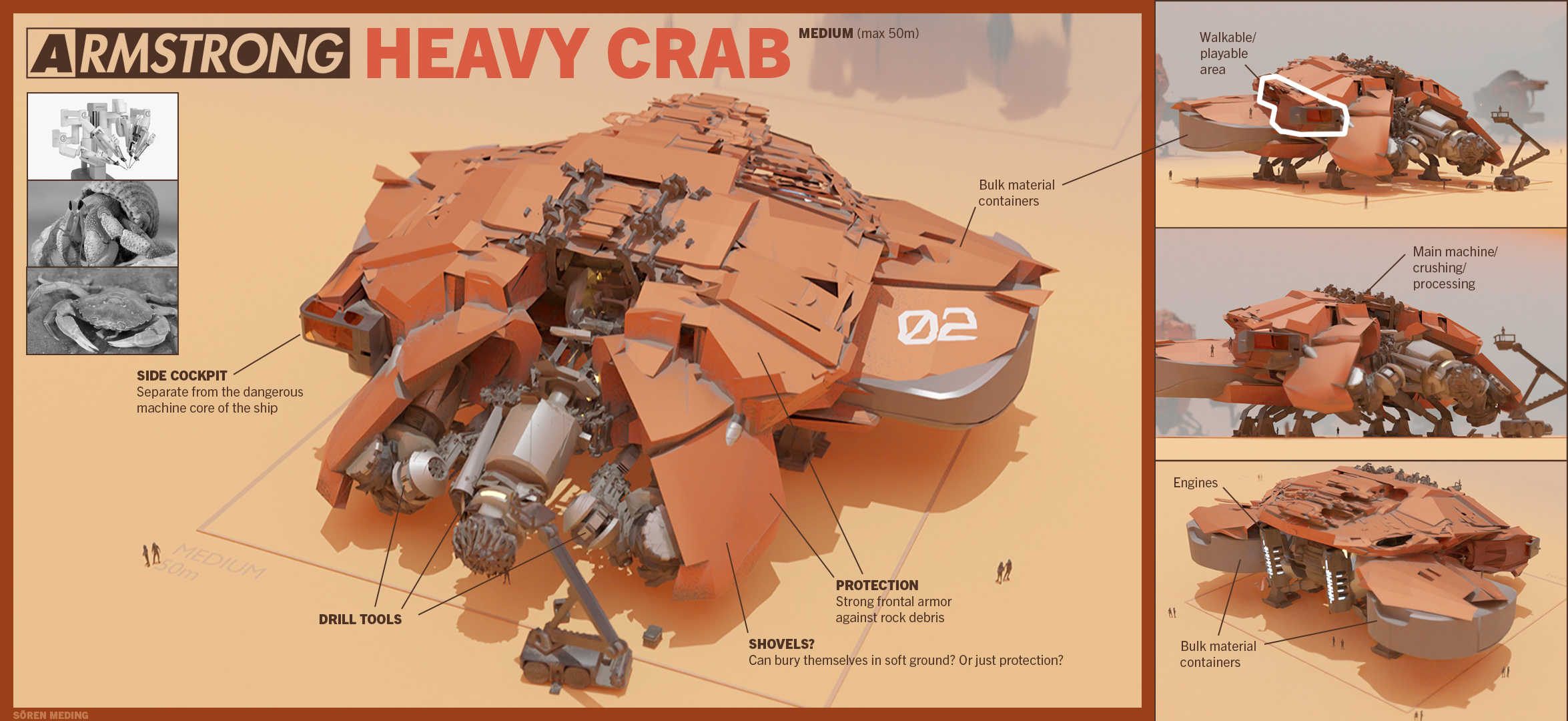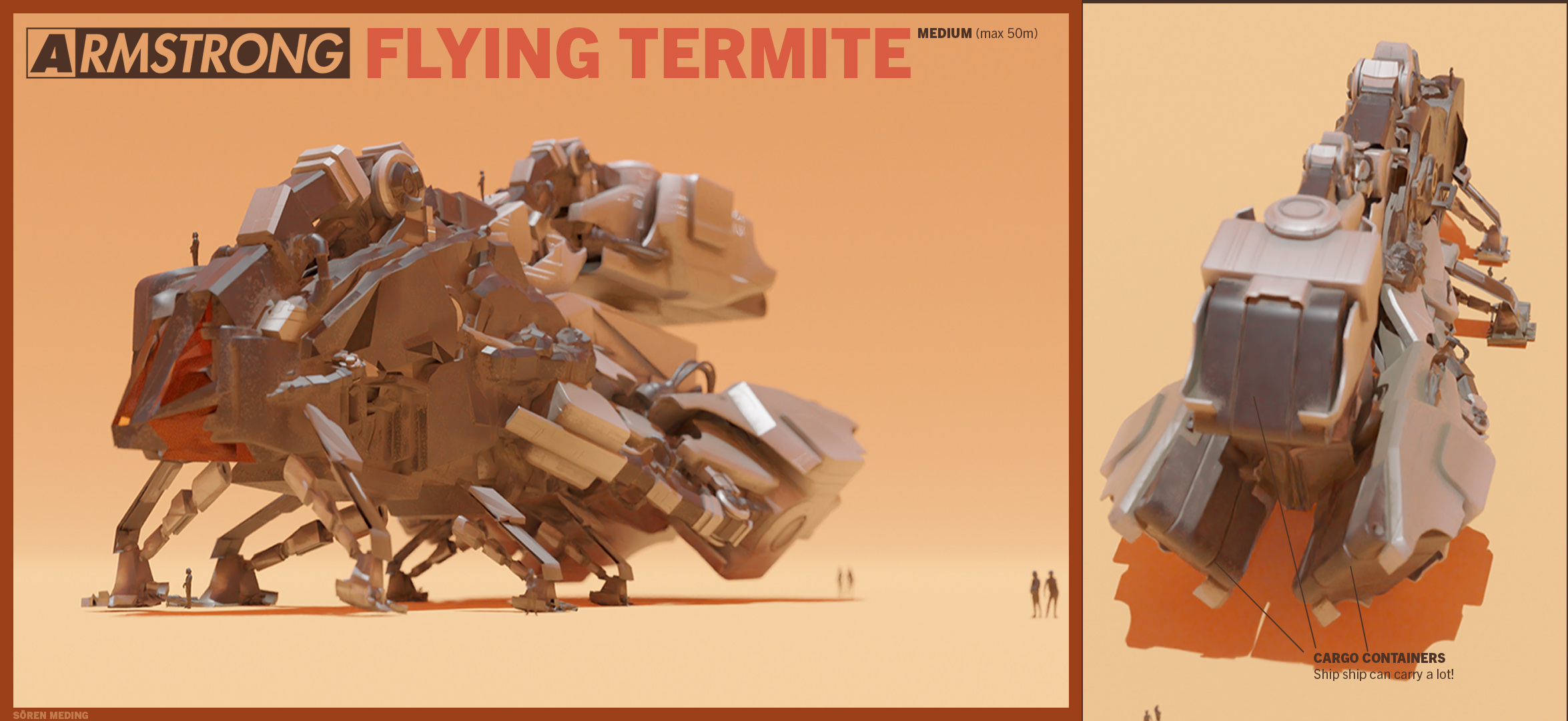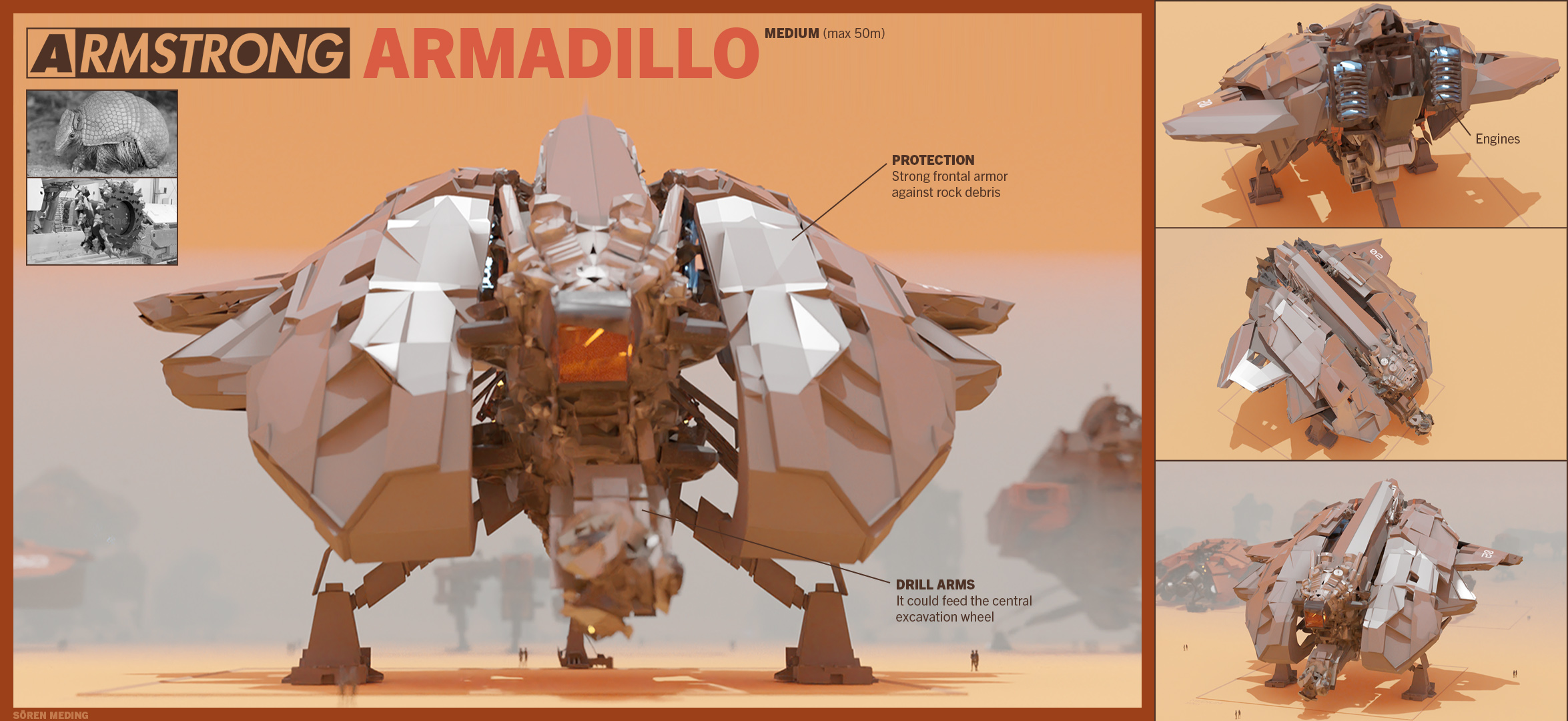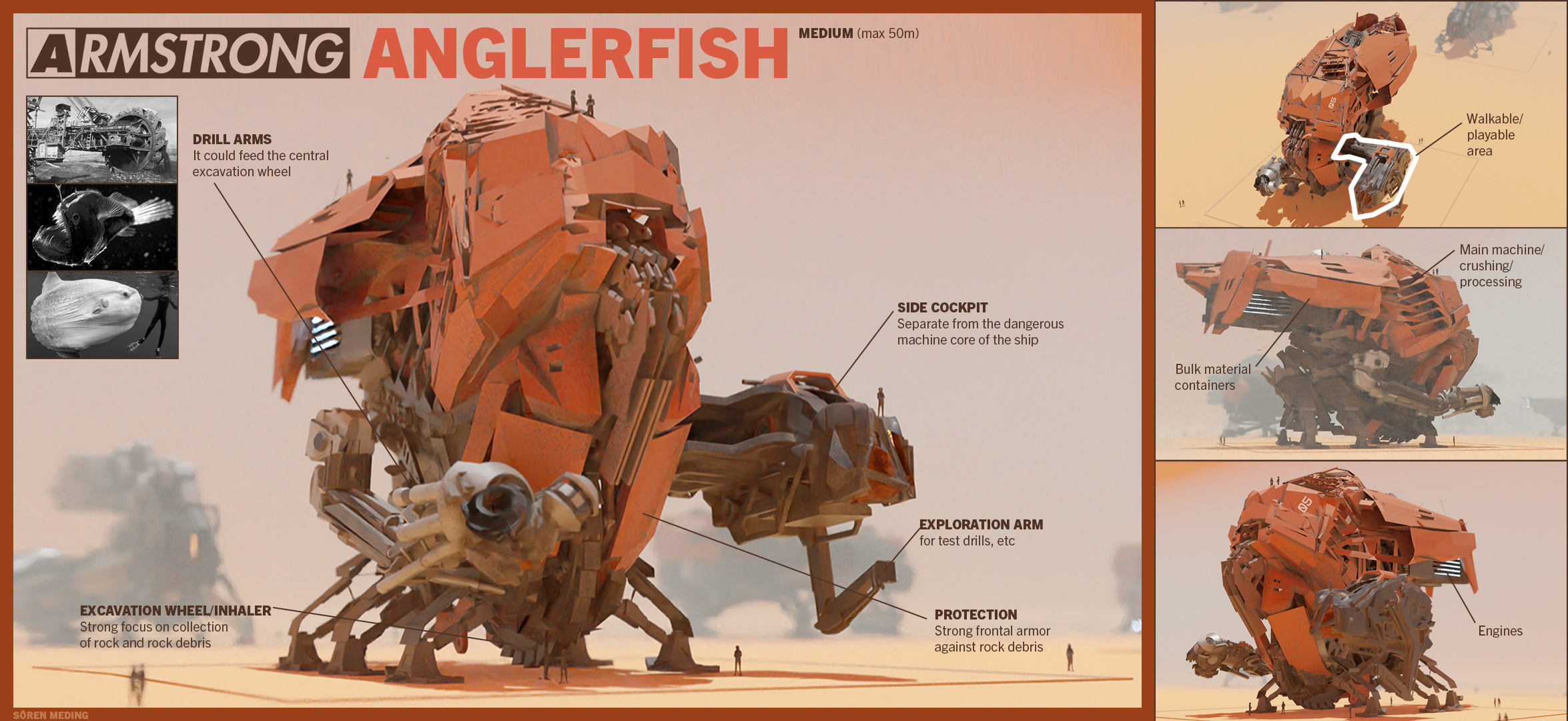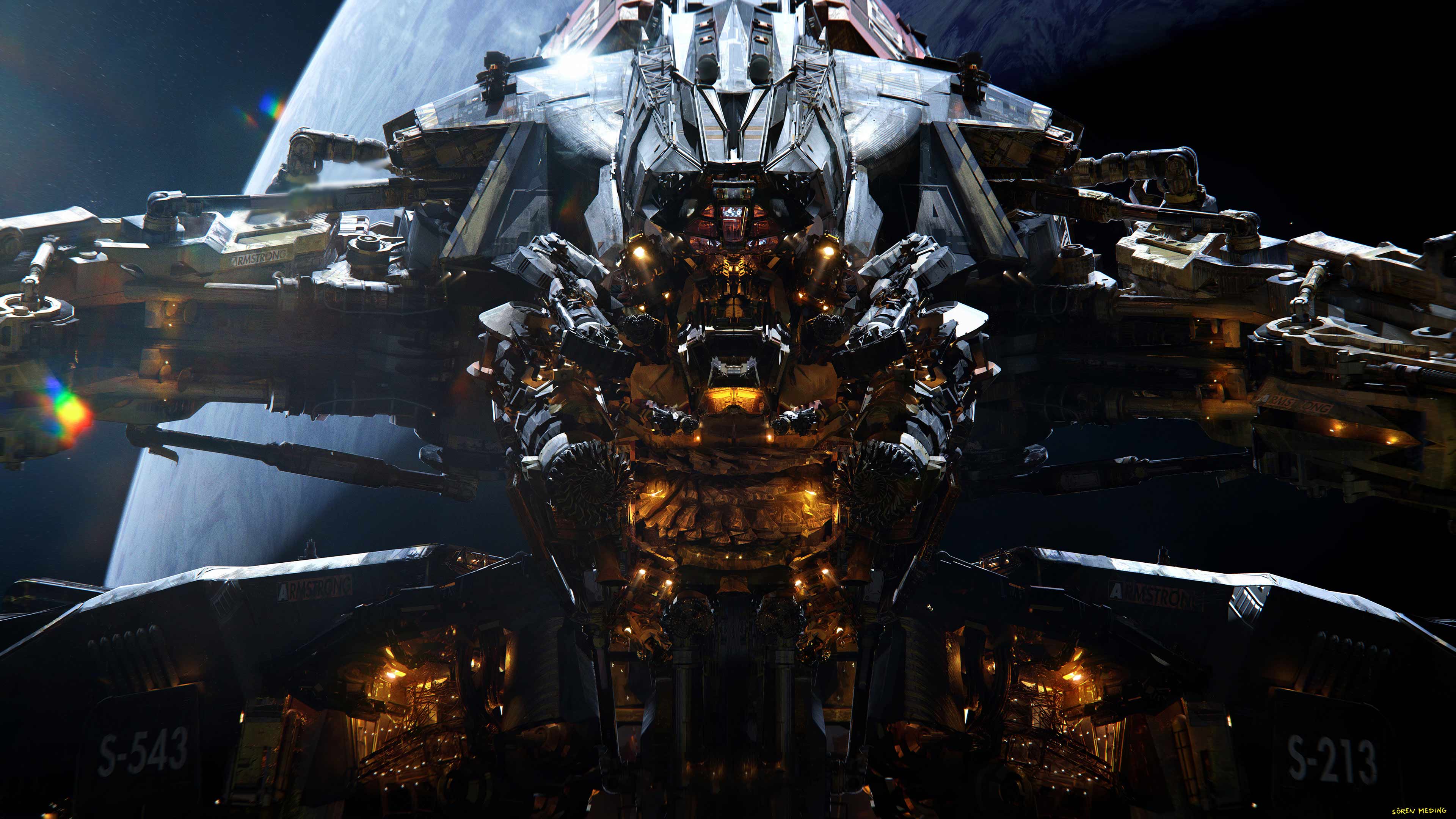
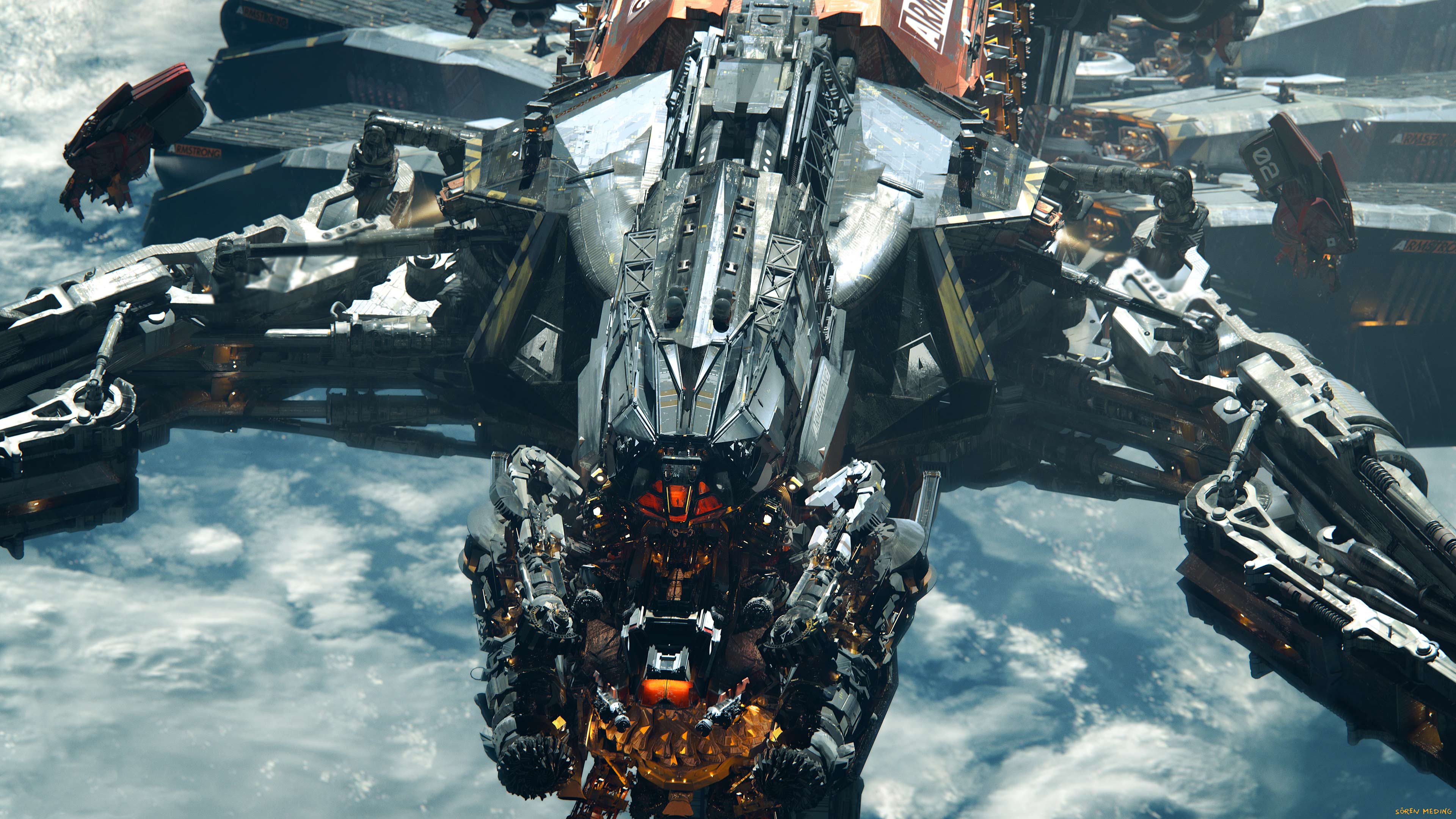

Disclaimer
This is just a small glimpse into a project that spanned several months. There’s far too much to show it all, but I’ve tried to highlight the most important moments in the development process. I hope it’s interesting for everyone, whether you’re a beginner, a junior, a senior, or even from a different field, there’s hopefully something here for you to take away.
Star Atlas is still in development.
Image on the right: a screenshot from my screenshot/picdump folder. I always keep this kind of logbook, for my own motivation and because it’s easy to forget so much so quickly. It’s a great place for nostalgia and a handy resource for illustrating my articles.
Research
Before diving into the design phase, I began, as always, with thorough research, focusing especially on asteroid mining, both in science fiction and in current real-world studies. I wanted something original and unique. In most video games, asteroid mining is reduced to UI overlays, a few clicks, and energy beams doing the work. I wanted to go in a different direction.
While games like Hardspace: Shipbreaker focus on dismantling ships, this concept is about real mining. Mining, in this vision, should feel like work, engaging and hands-on, almost like a series of mini-games: first scouting asteroid locations, positioning your ship, analyzing resource distribution, and then deciding on the right strategy to extract them. That thoughtful process is what makes the difference.
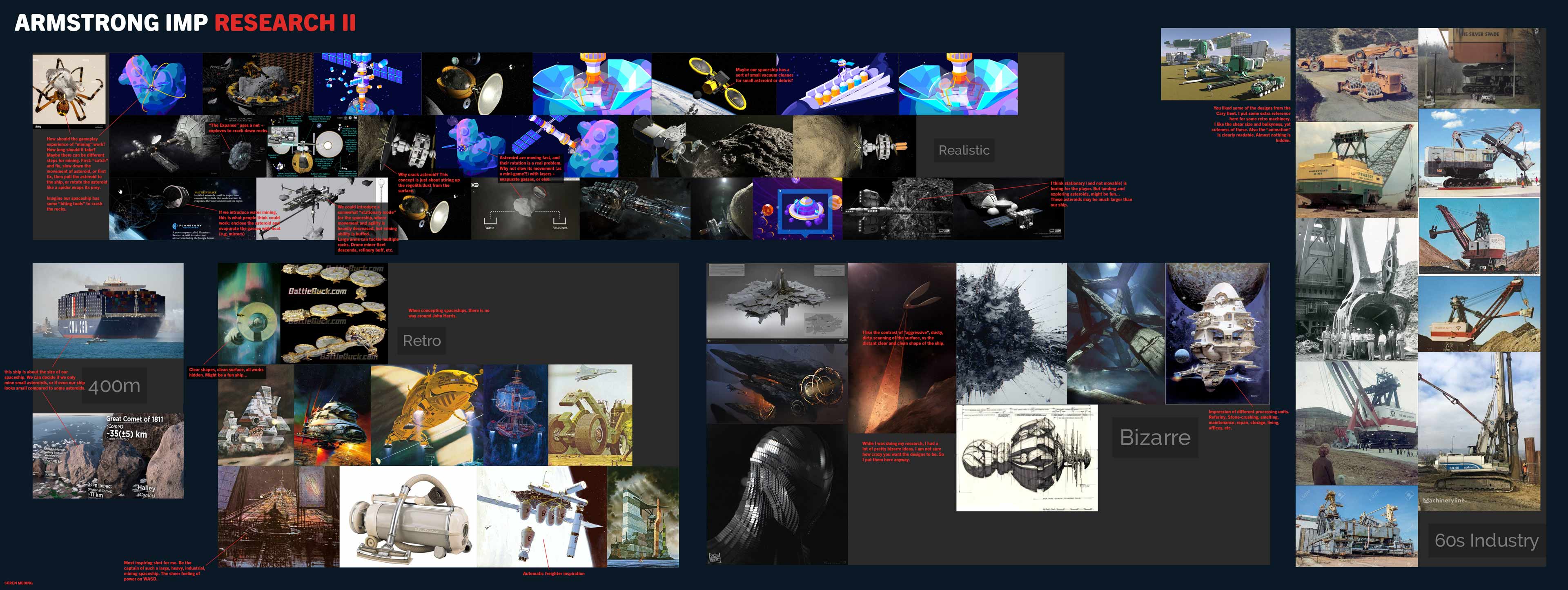
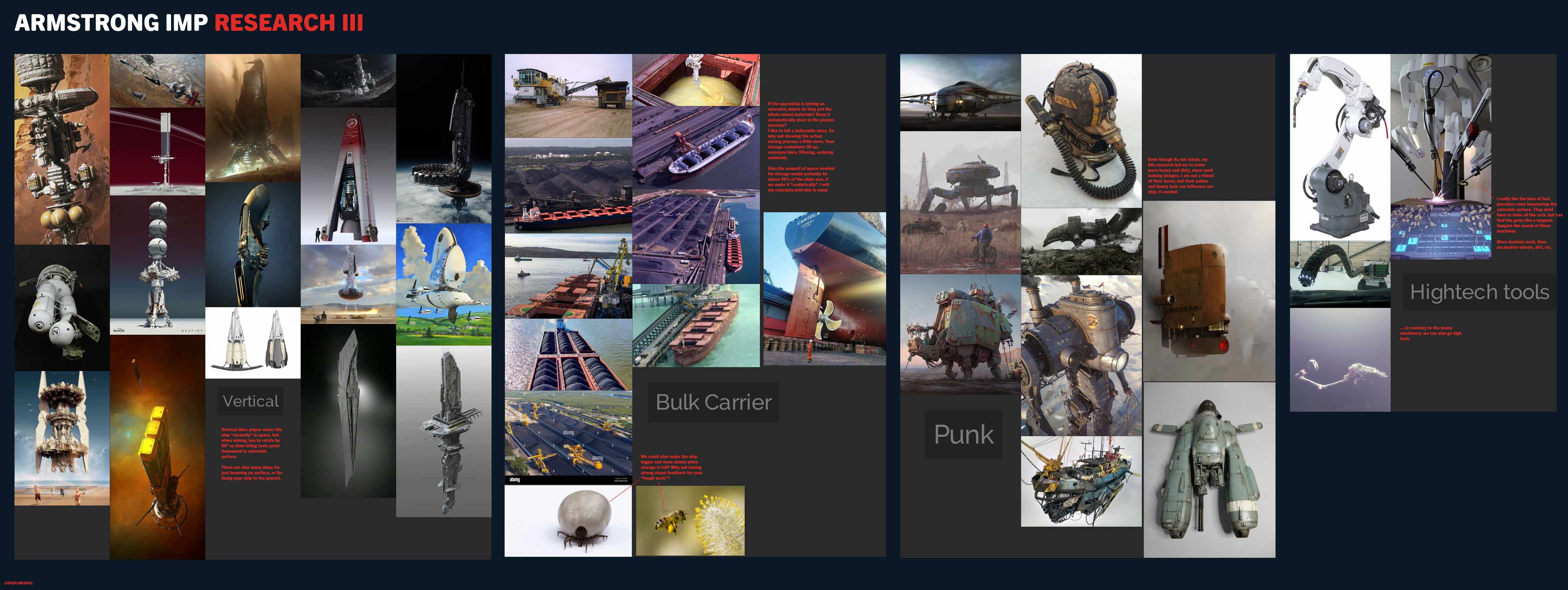
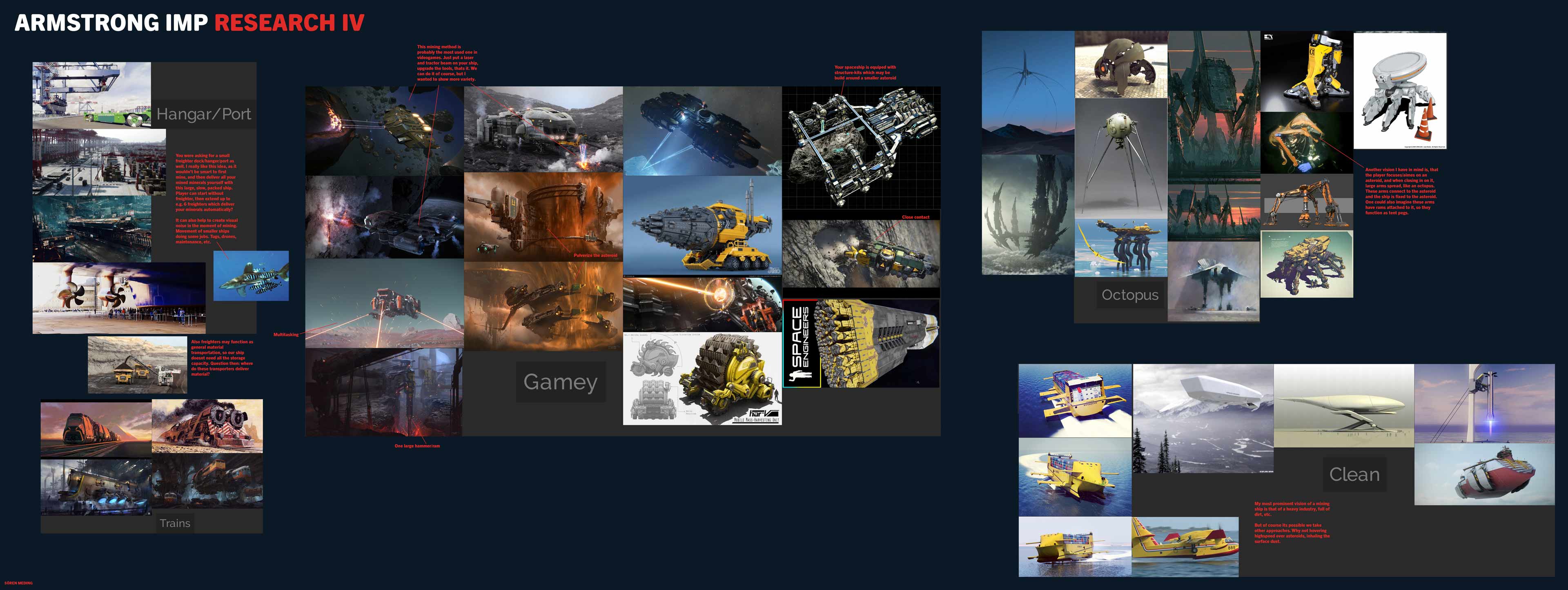
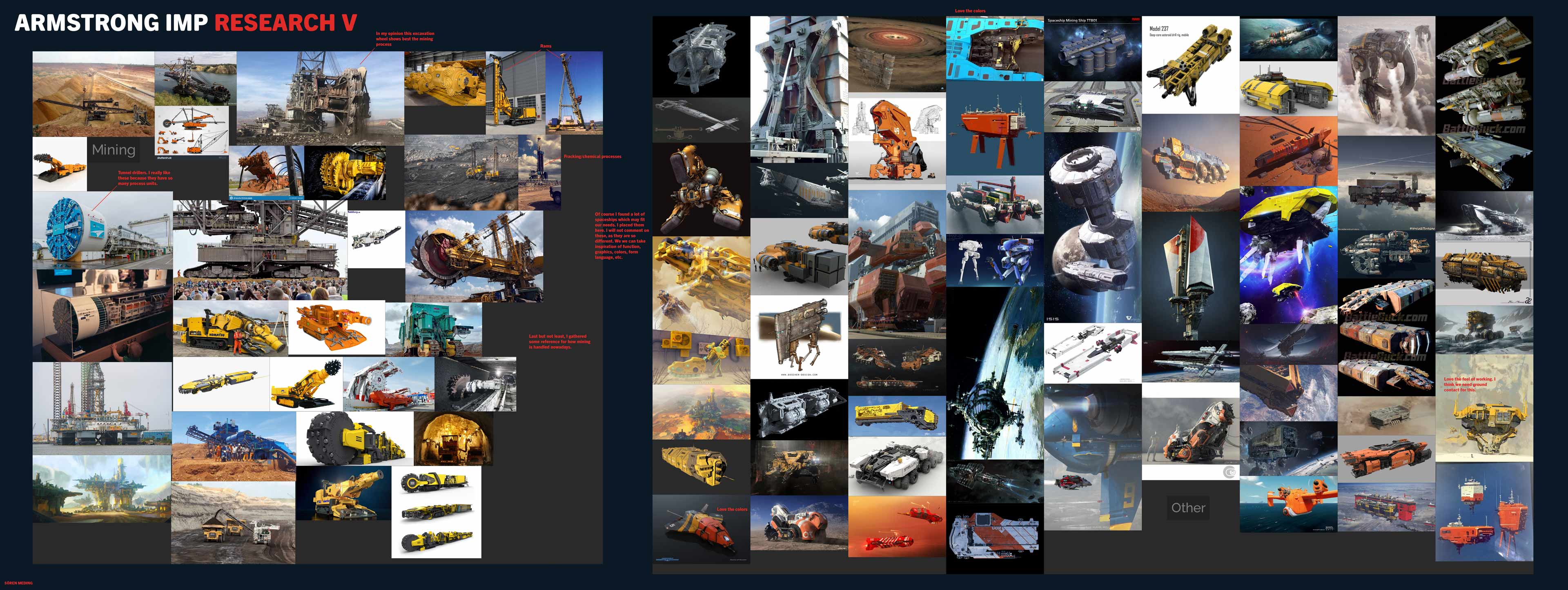
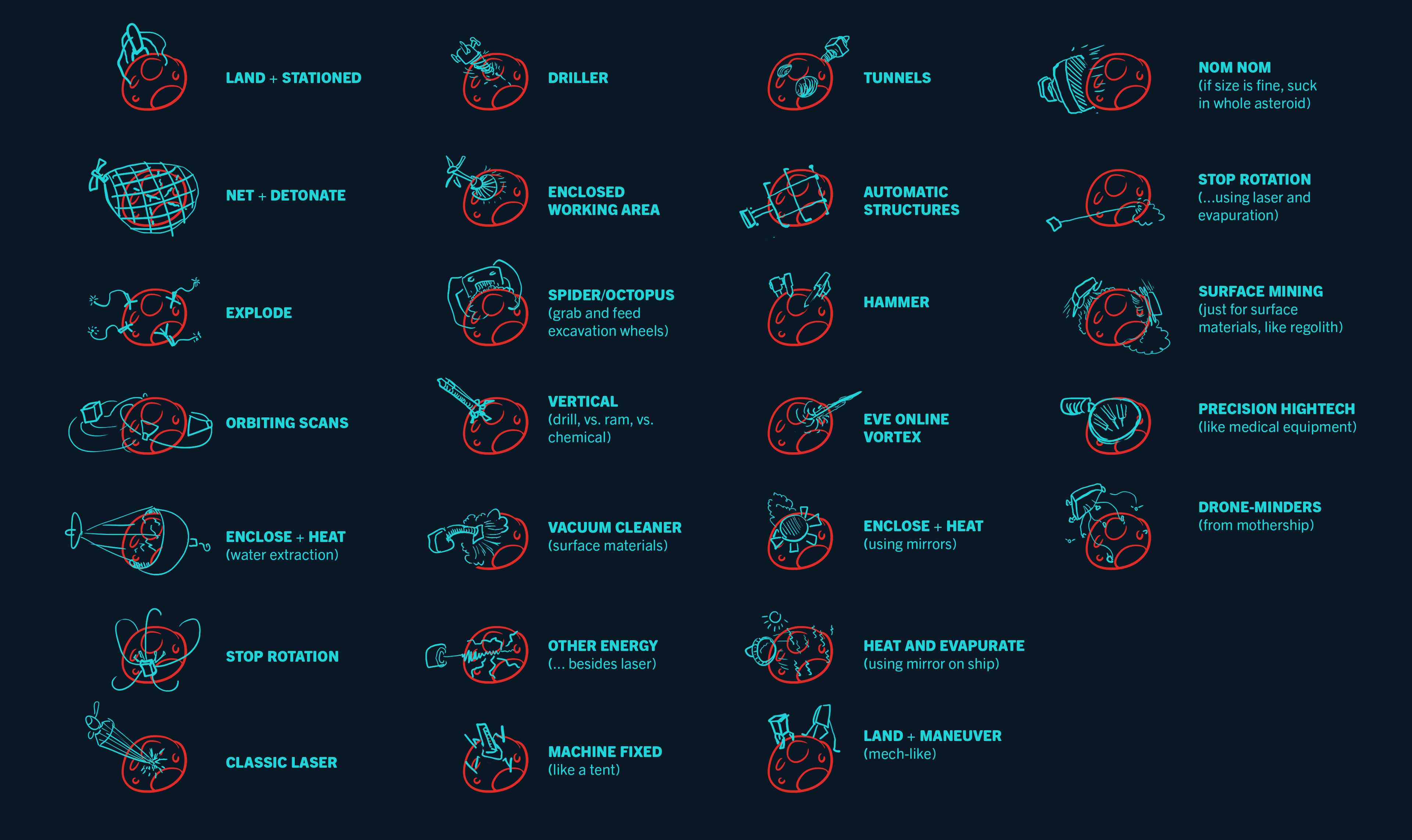
Workshop: How to mine an asteroid?
I created a workshop document for the client (snippet shown on the left) to help us align on a shared visual language and refine the direction together. The goal: to define the most unique and compelling method of asteroid mining. All prior research flowed into this step.
After that, I created a custom kitbash set using selected meshes. Jumping into VR with Gravity Sketch, I explored a range of early concepts, some of which are shown below.
(We went on with the “Spider/Octopus” idea.)
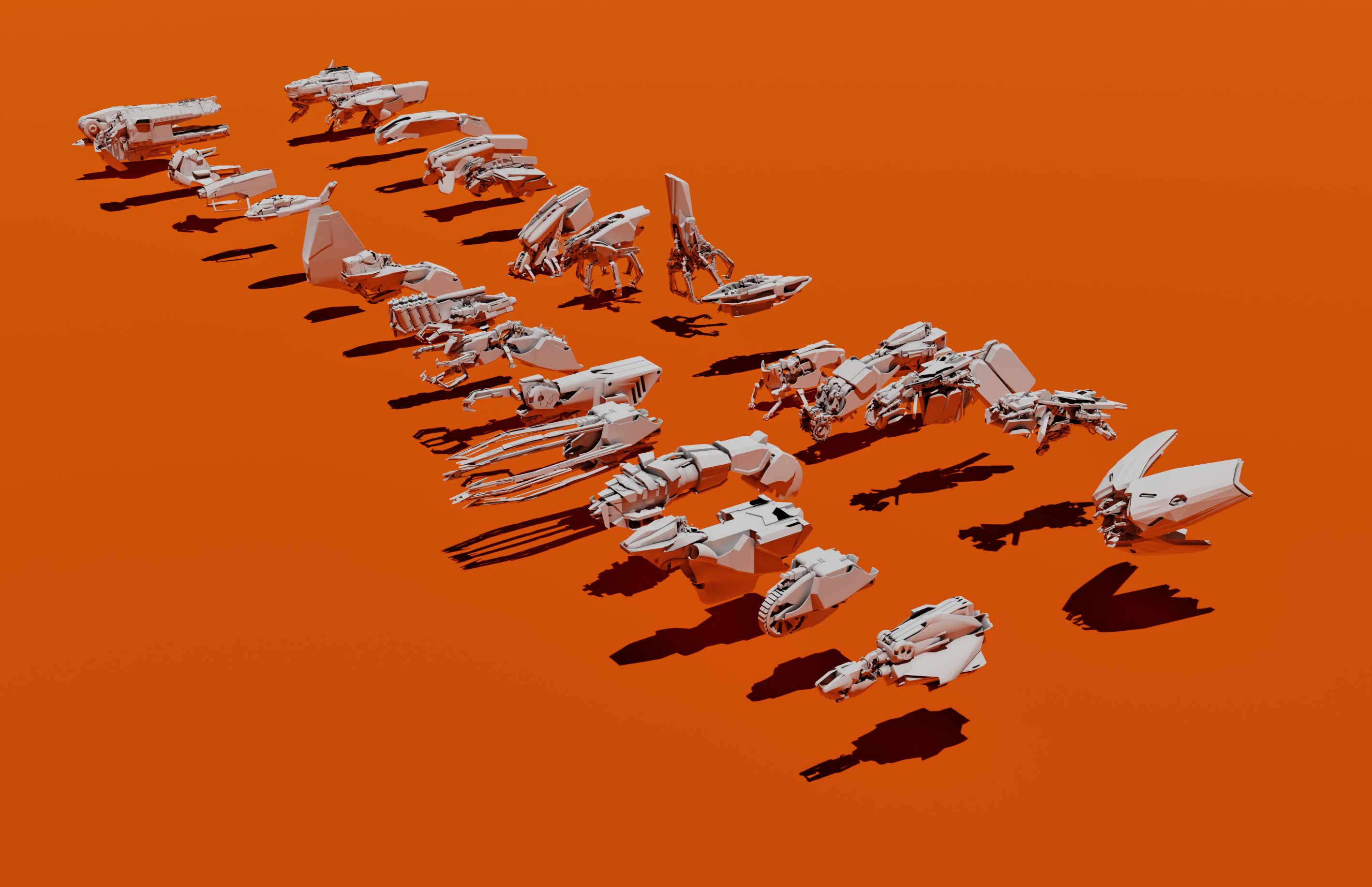
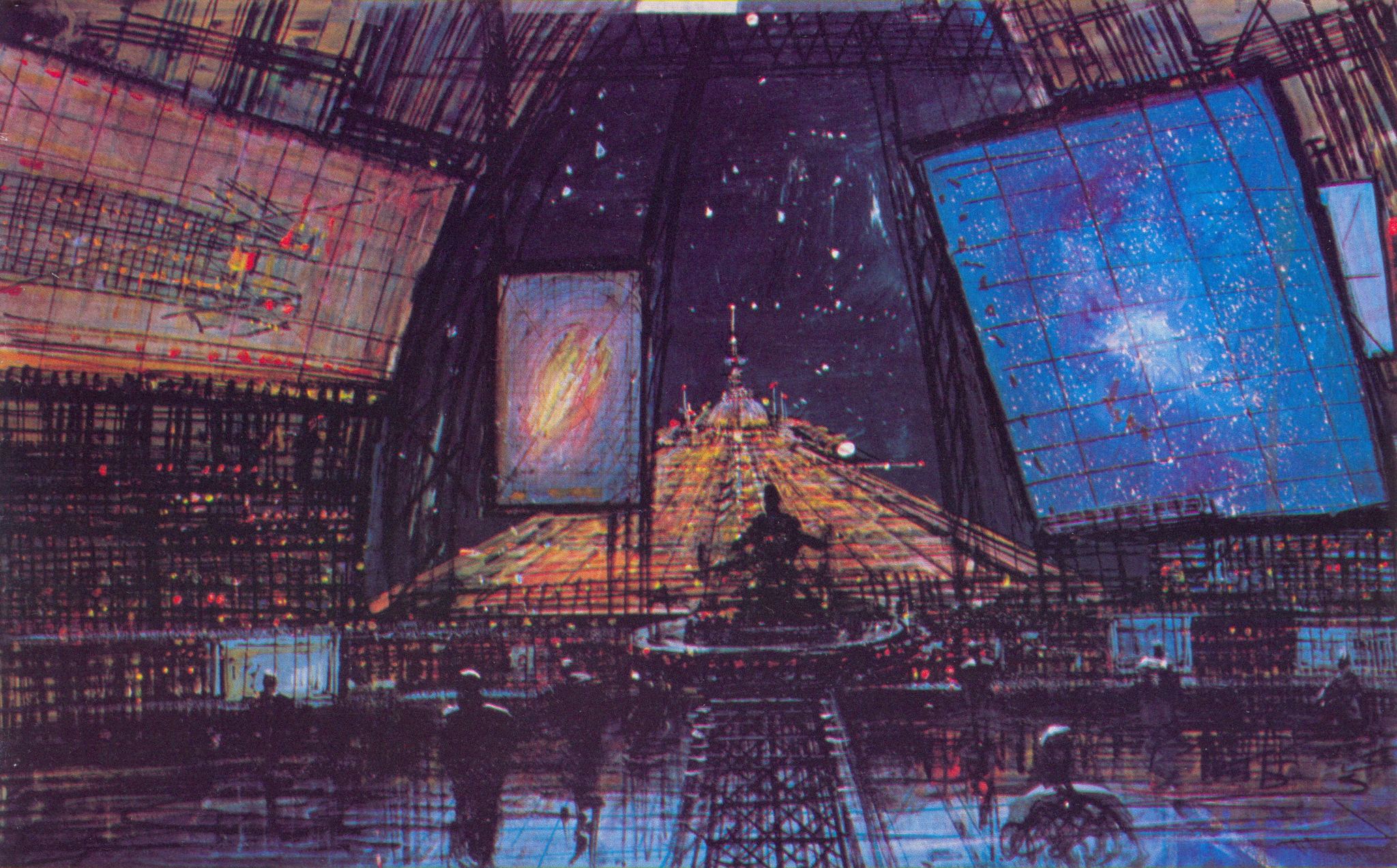
Shape-Sketching in VR
My primary inspiration for the entire vessel is captured in the image above by Peter Ellenshaw. To me, it brilliantly conveys the feeling of a lone captain guiding their ship through the vastness of space, using heavy, deliberate levers, while carrying the weight of responsibility for their crew. It evokes the same solitude and focus as a sea captain on the ocean. I later tried to carry this atmosphere into the interior layout of the ship’s bridge.
On the left, you can see my first steps. With my head full of ideas from the research and workshop, I was ready to start shaping things. Throwing together forms in VR (using Gravity Sketch) was a fun and playful way to kick things off.
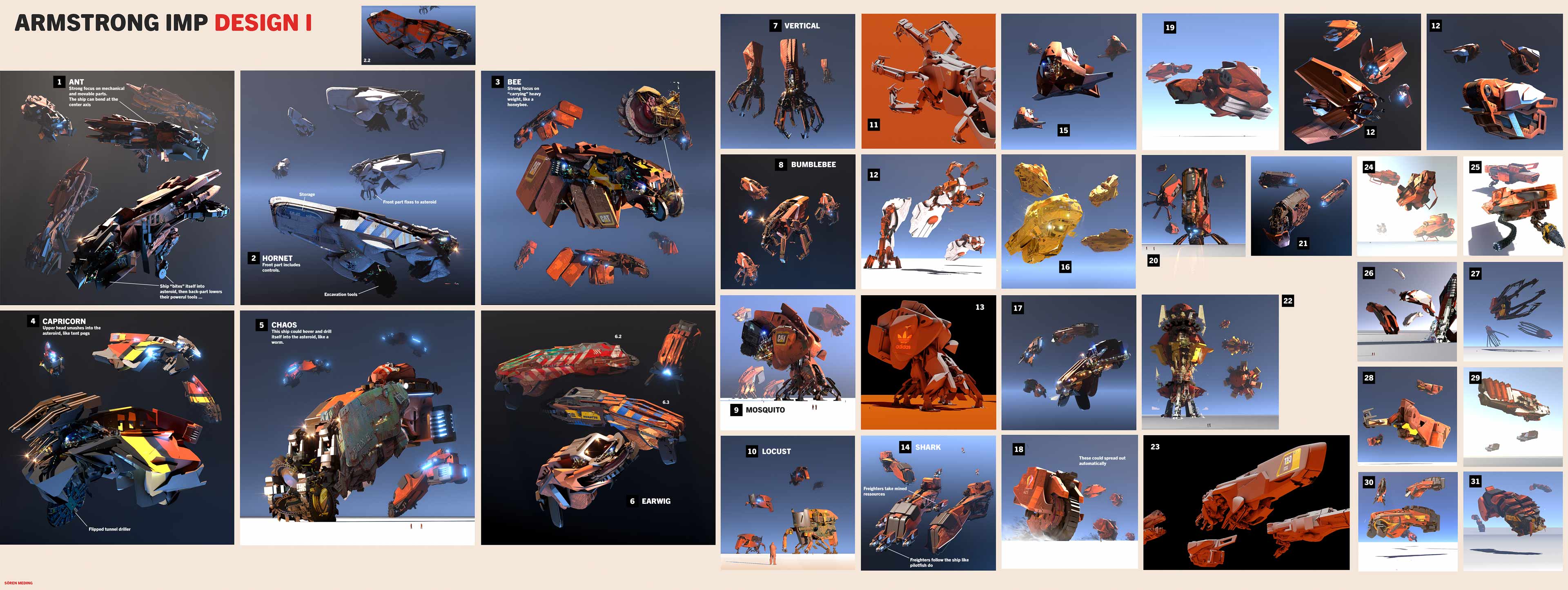
Later on, I refined a few designs, added some color, made a presentation sheet, and yes, gave them names! Naming your designs helps people connect with them more deeply, not just through shape, but through story. It’s a simple way to make your work more memorable, for both the viewer and the client.
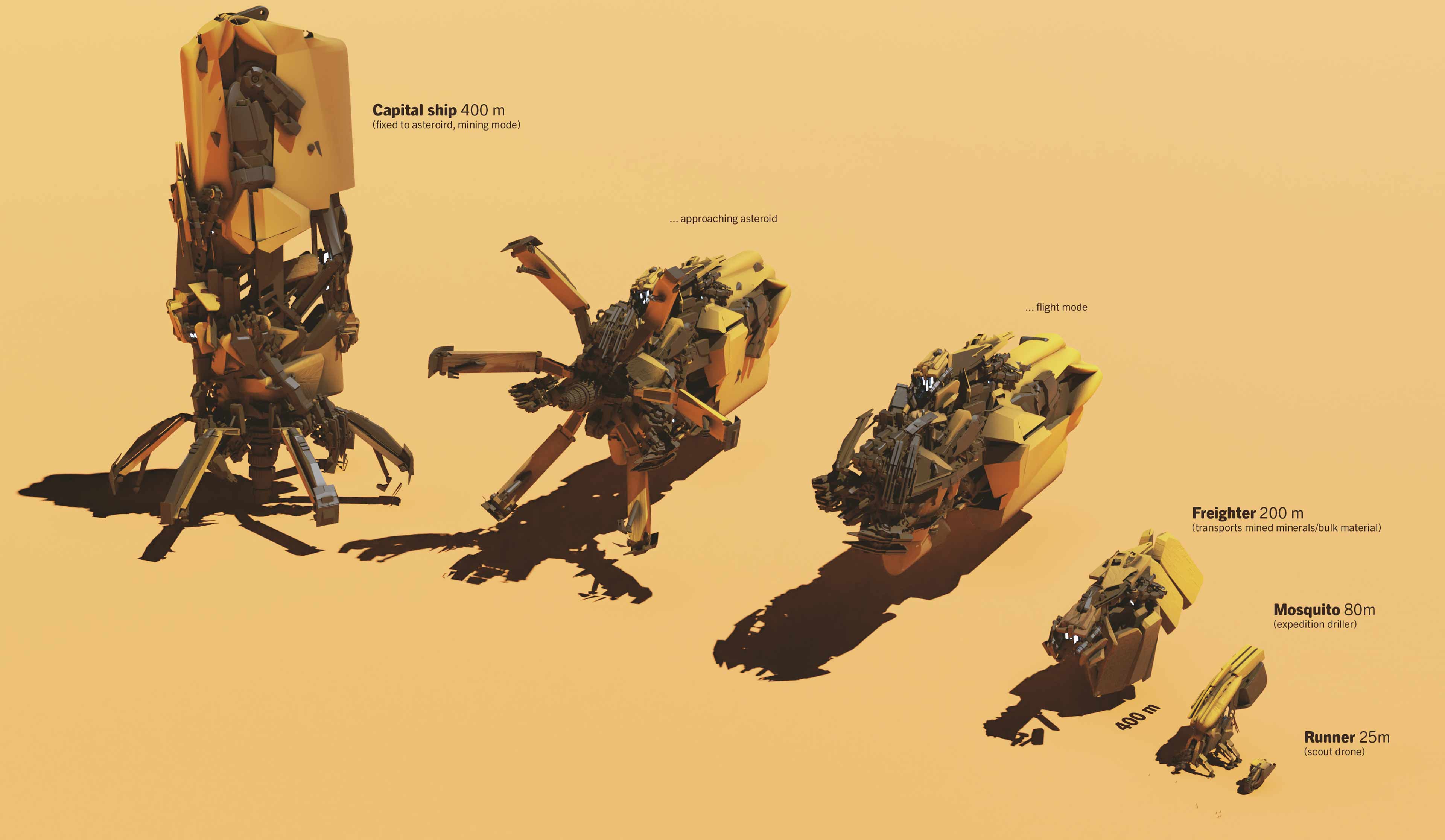
To wrap up this first batch of designs, I came up with the idea of an entire fleet, different ships, each with its own task. Whether the player controls them directly, or they’re flown by NPCs or automated drones alongside you, it’s all adding up to the bigger picture. One standout concept from early on was the “Mosquitos”, which later got an entire chapter (below).
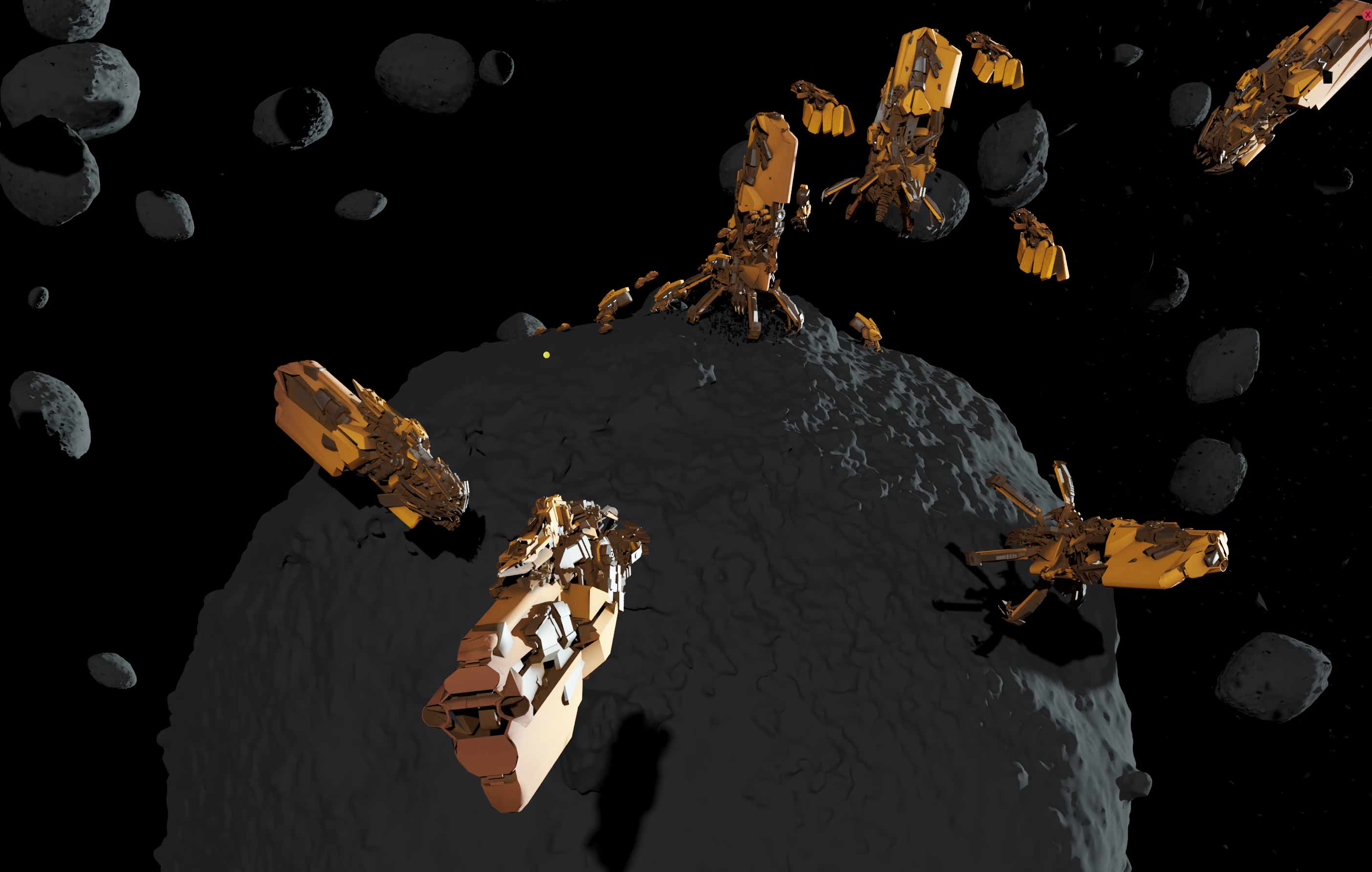

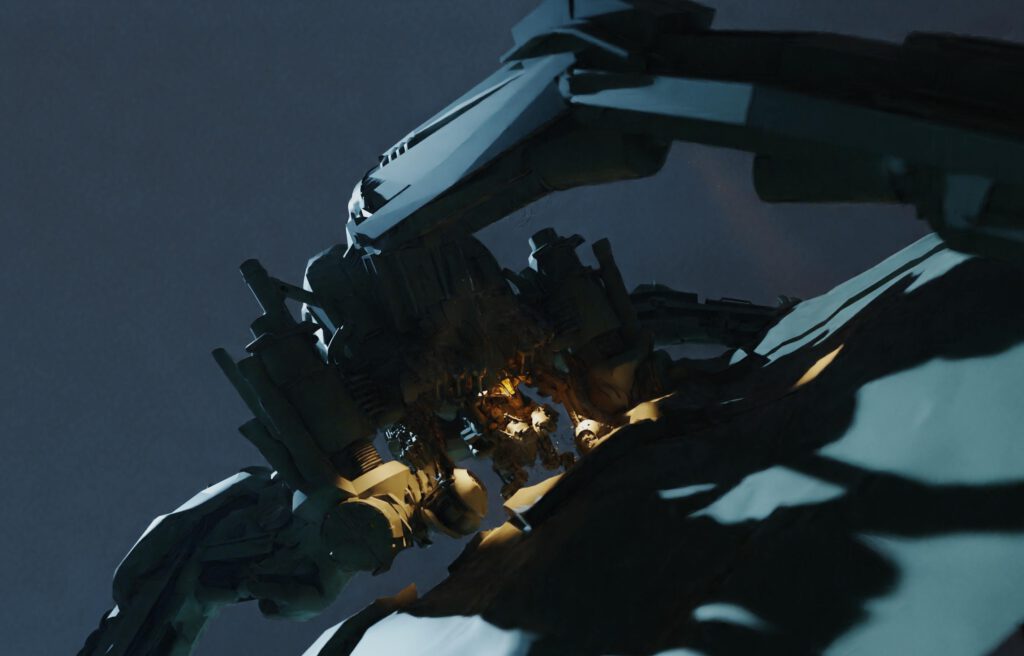
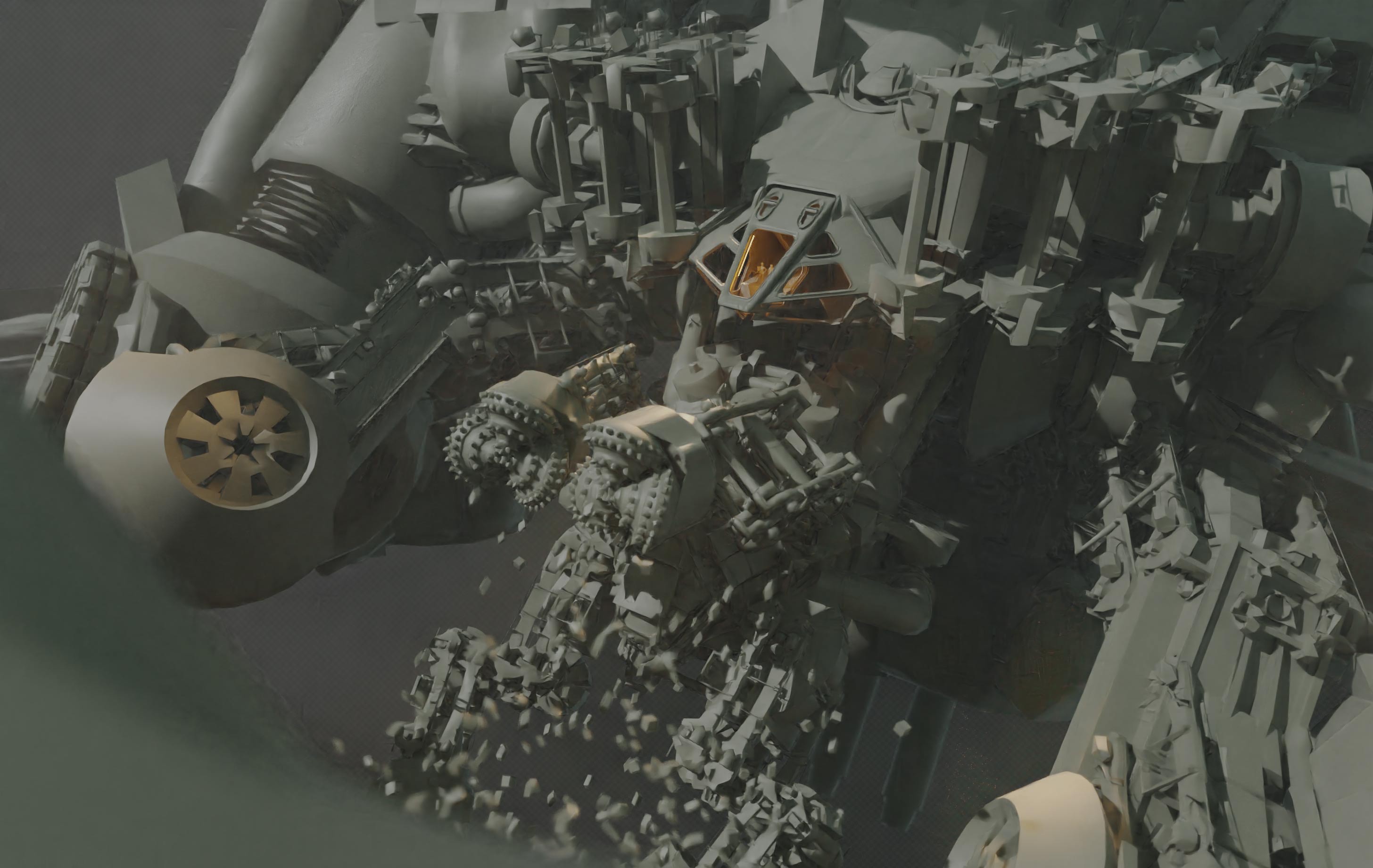
Mood Matters
Once the main direction was settled (e.g. choosing the Spider/Octopus mining method), I could start creating the first atmospheric shots. One idea really stood out: a huge, powerful ship, with big, bulky “arms” (inspired by the name Armstrong), breaking the asteroid apart using sheer force. Smaller tools would then carry the crushed material inside the ship, where it gets processed, packed, and prepared for transport.
The shape and power of the machine, somewhat reminiscent of an animal, like a crab, was emphasized even more by placing the cockpit at the front.
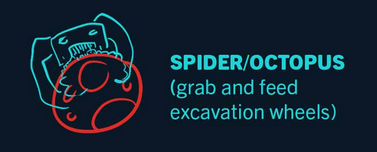
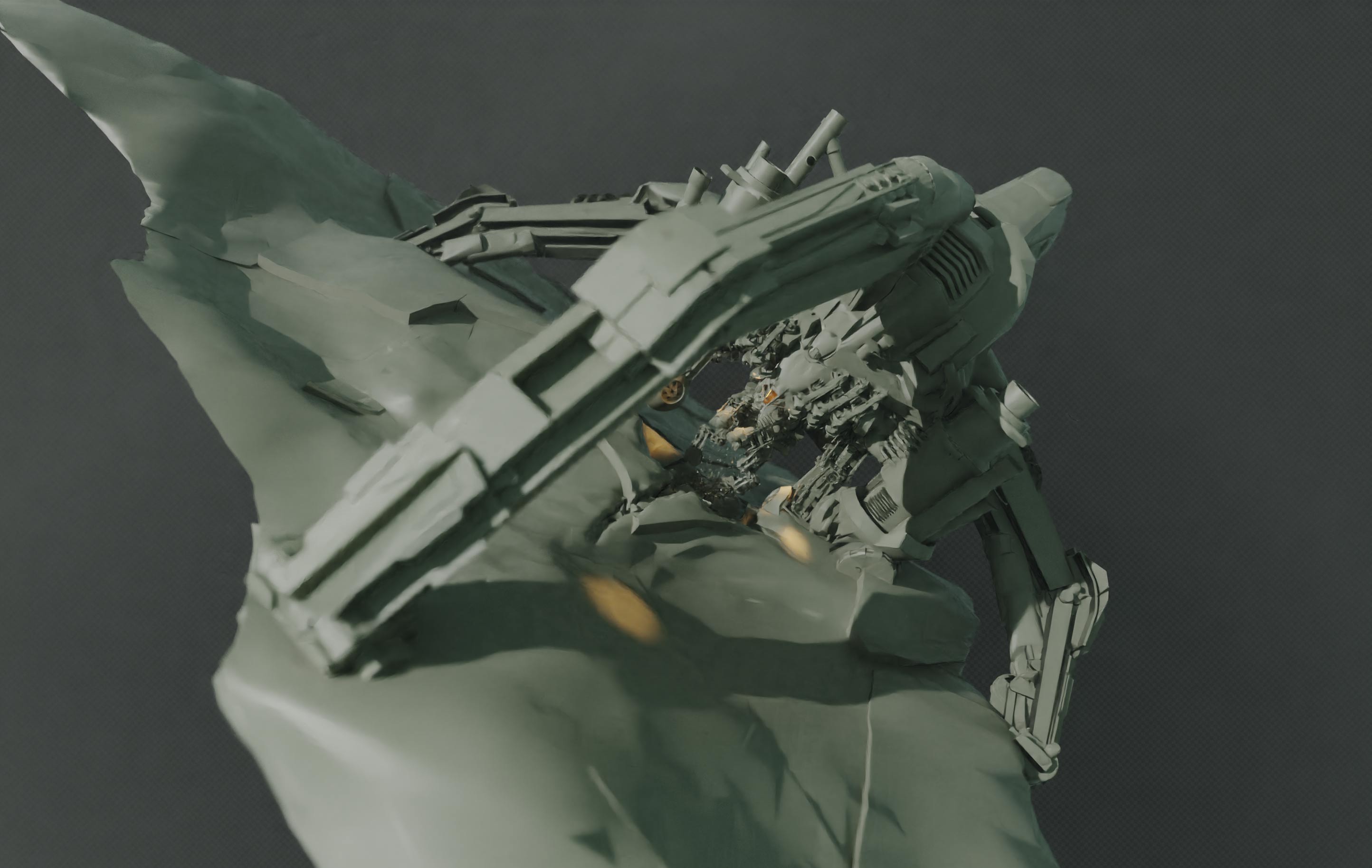
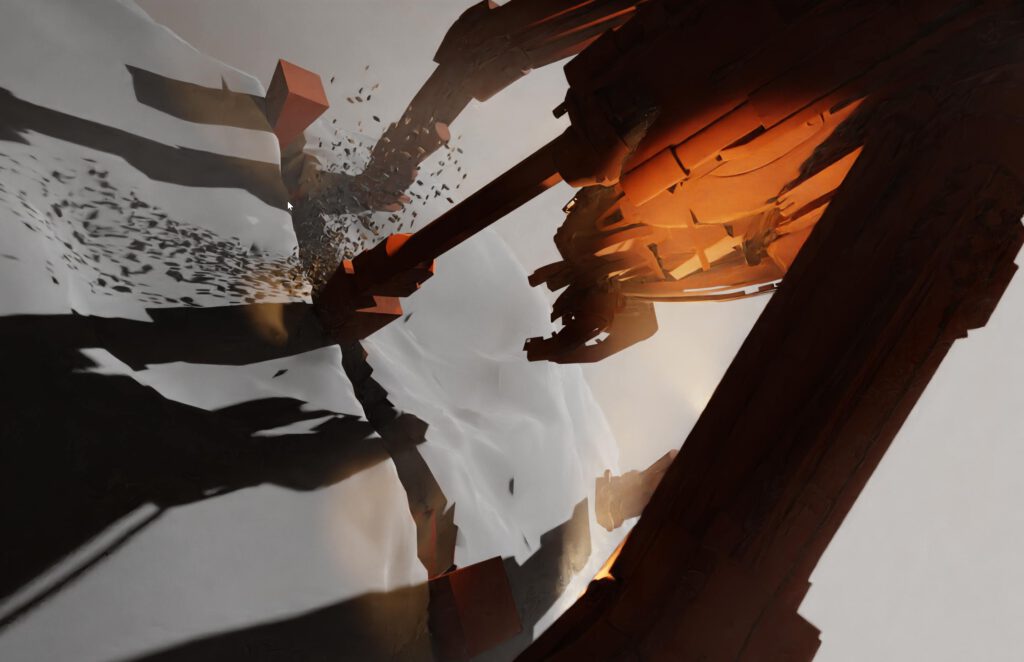
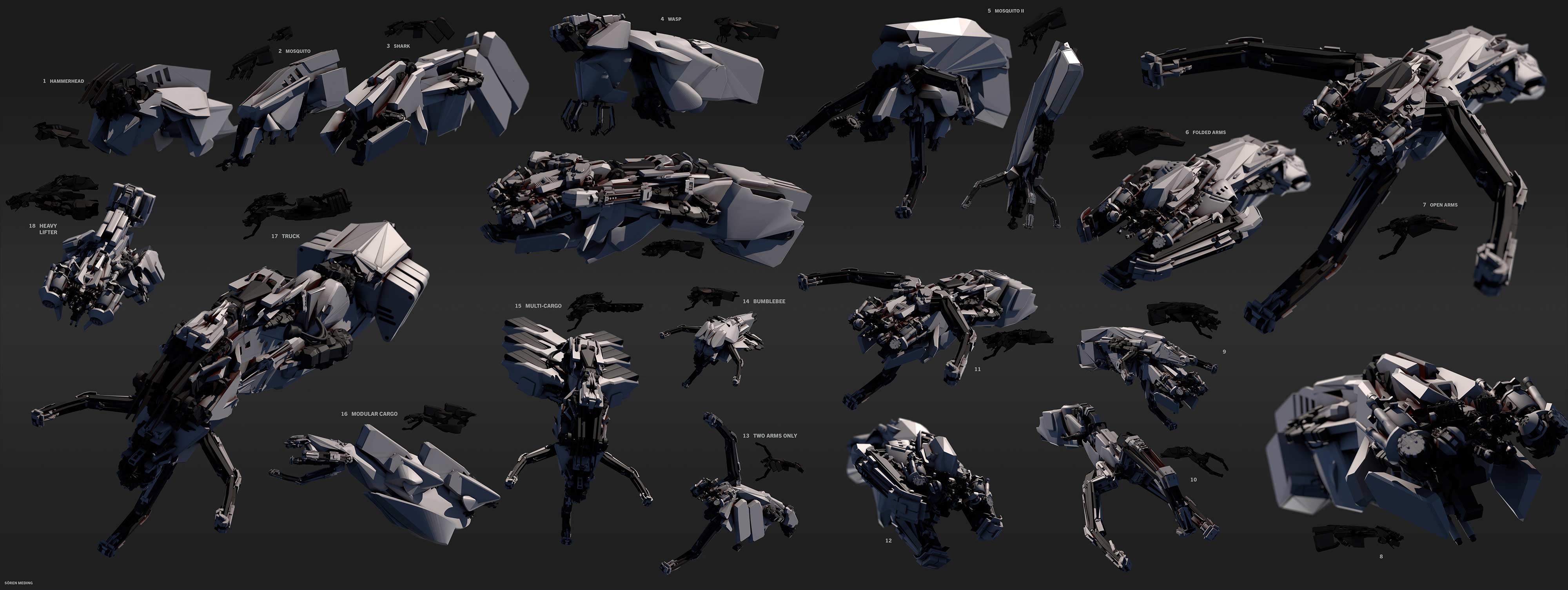
Locking in the Form
After exploring different shapes, this design stood out as our favorite. We liked the insectoid style and the modular look. It feels like a ship where you could easily attach, remove, or rearrange parts, almost like a toy made to be customized.
The design gives off a strong sense of raw power from every angle, which we really liked.
The smaller “additionals” were also well received, like the freighters that automatically transport the mined material. They add depth to the world and are great for environmental storytelling. Then there are the “Mosquitos”: small scout ships that players might launch with a button press, or even fly themselves.
You can also see that the design thinking continues inside the ship. To give the ship real logic and believability, we needed to understand what’s happening inside, how it works, what goes where, and why.
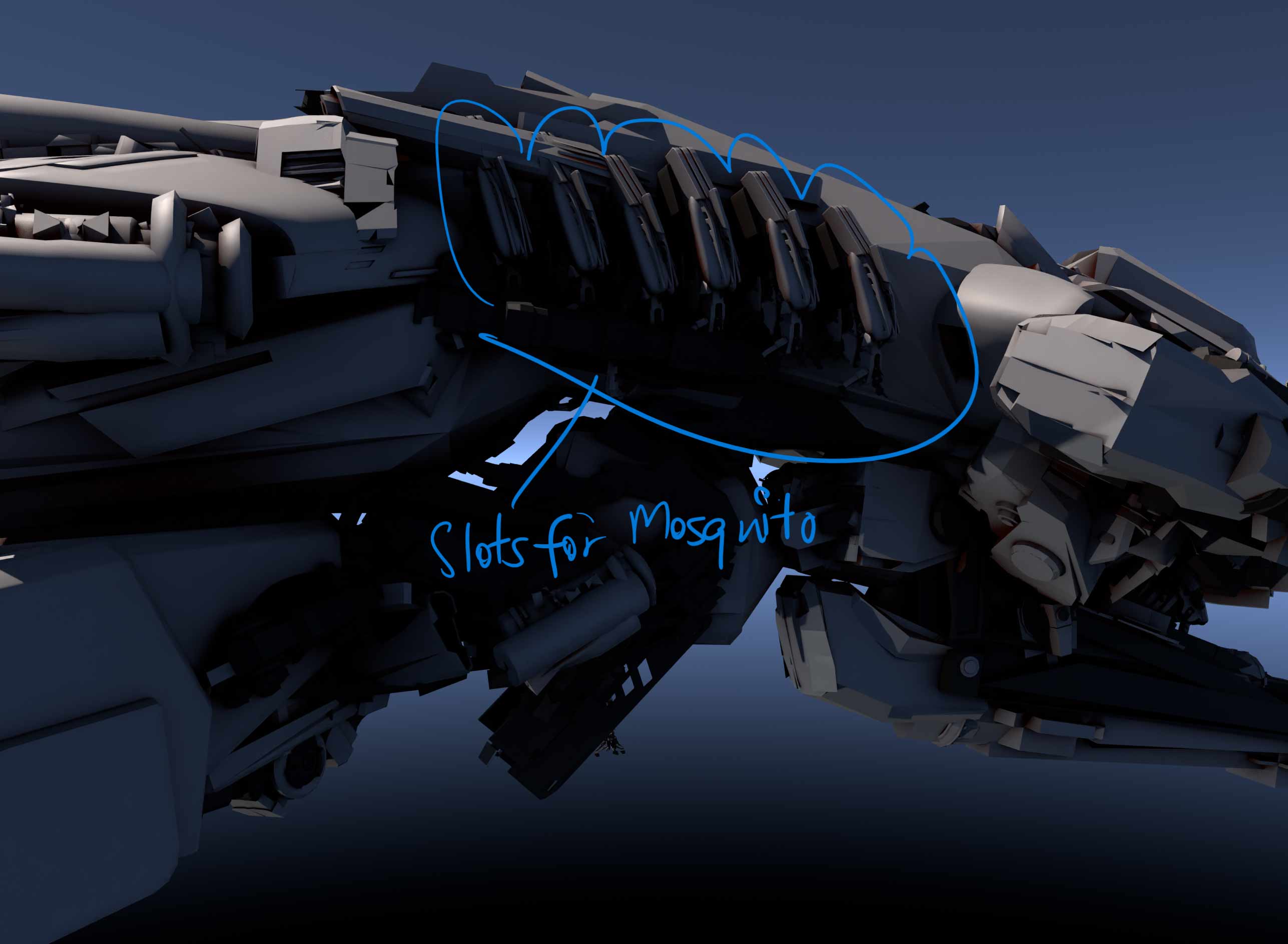
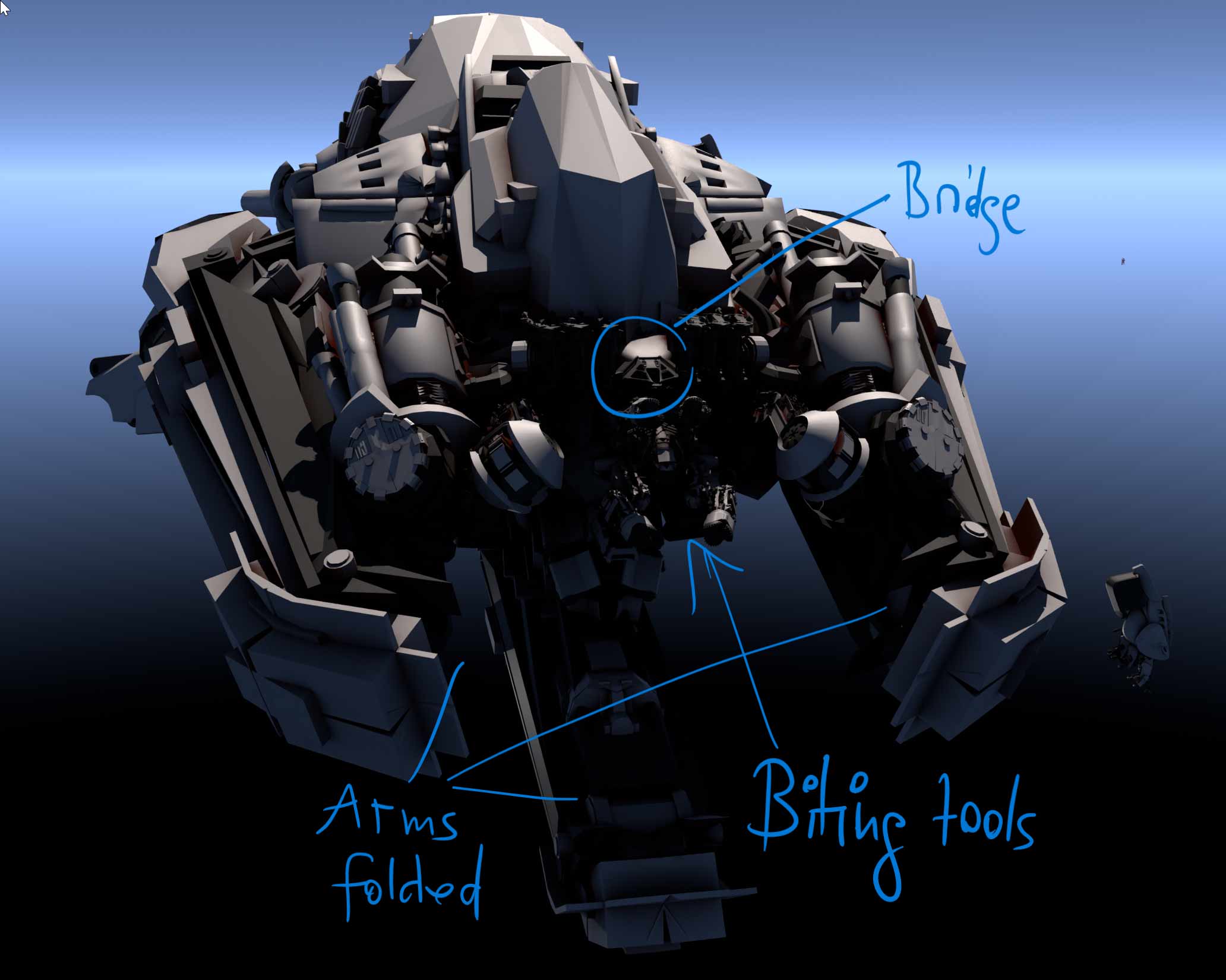
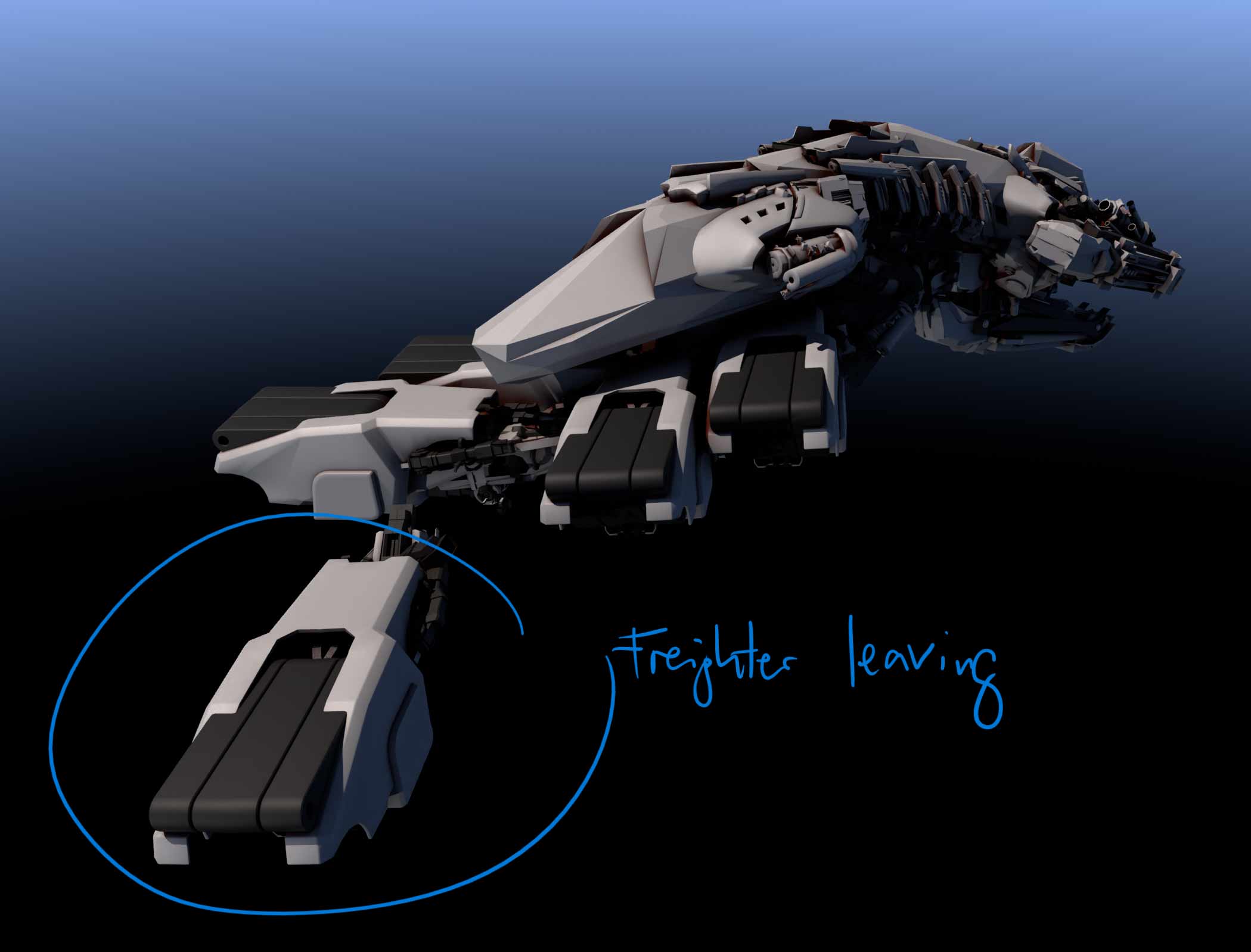
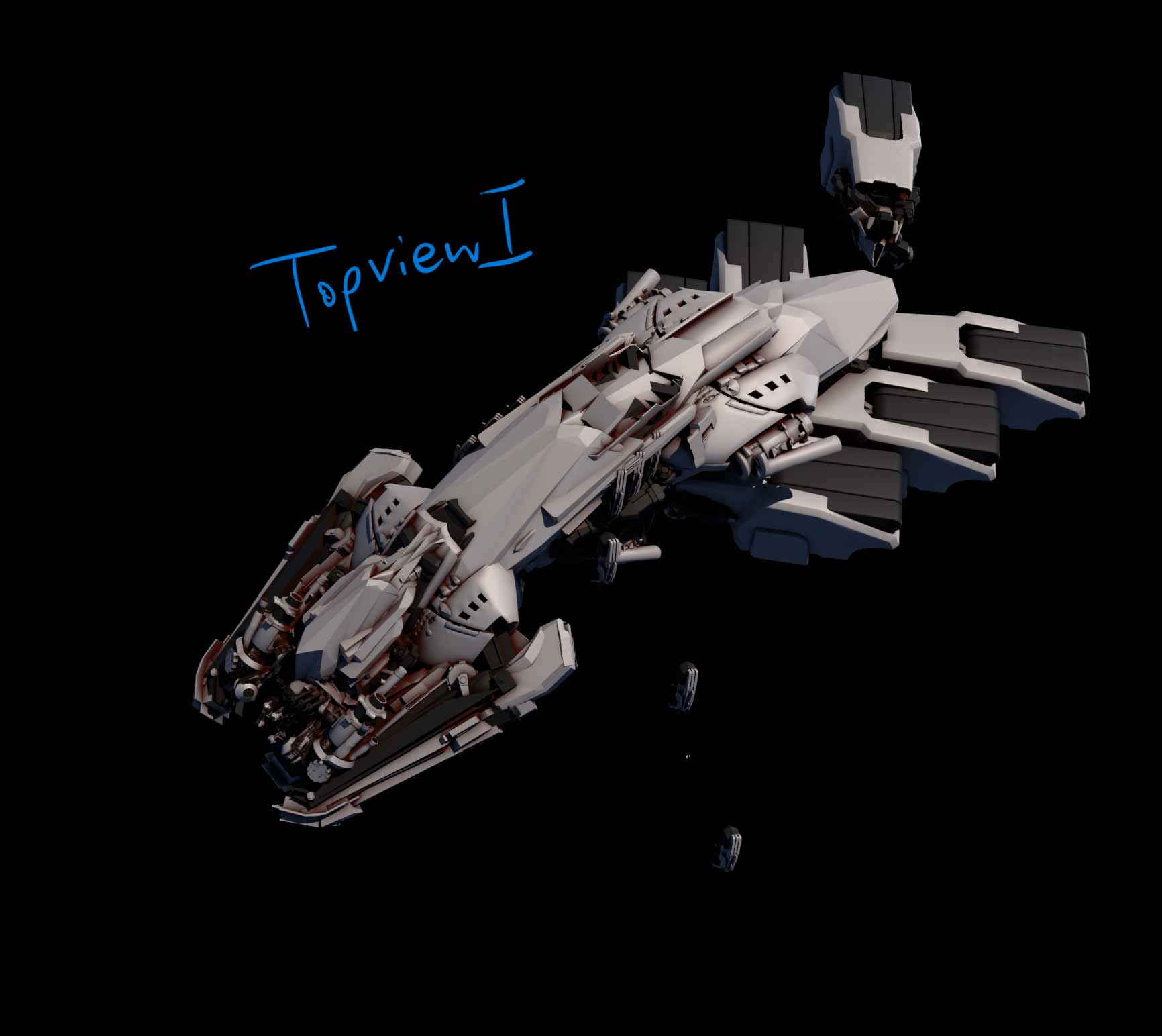
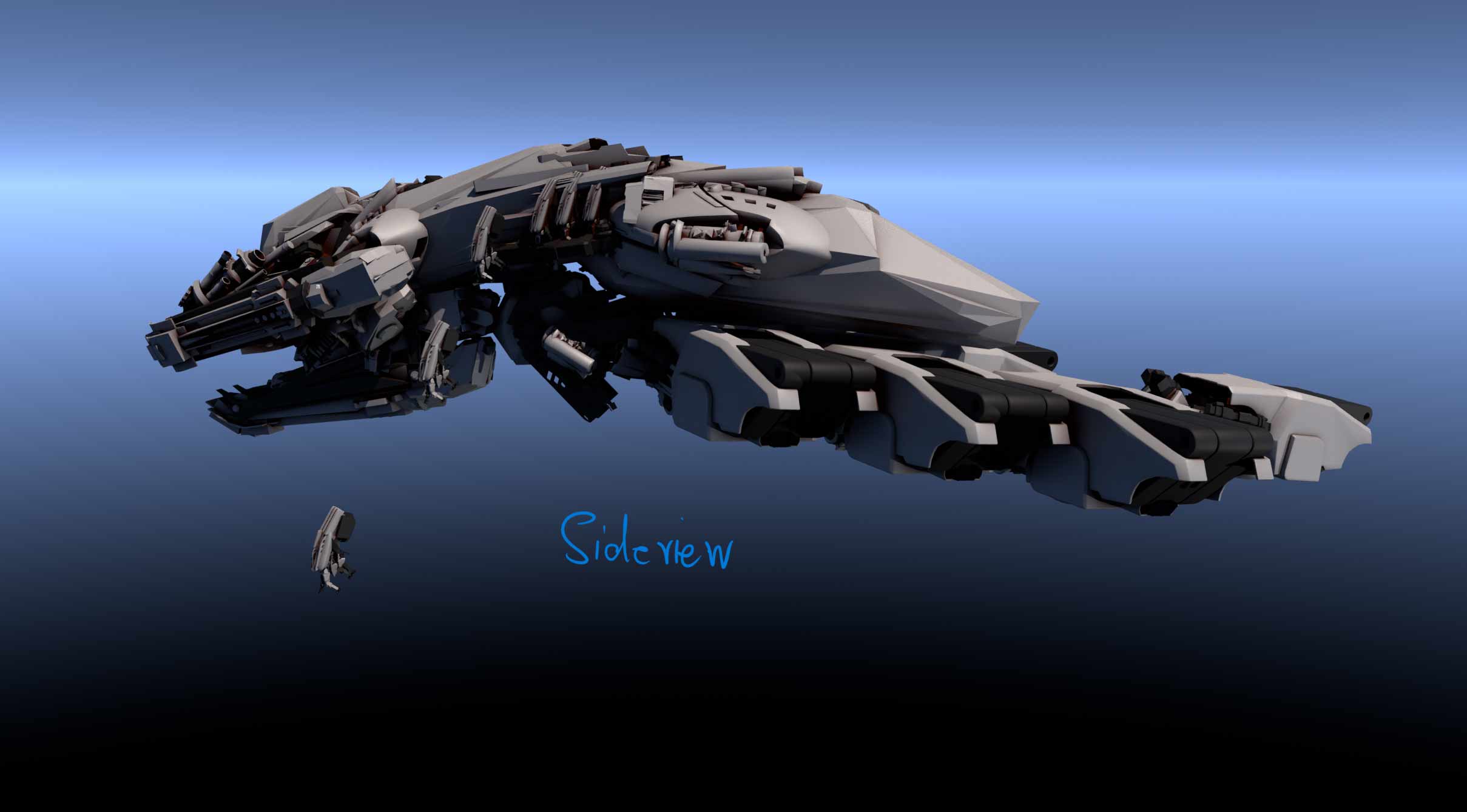
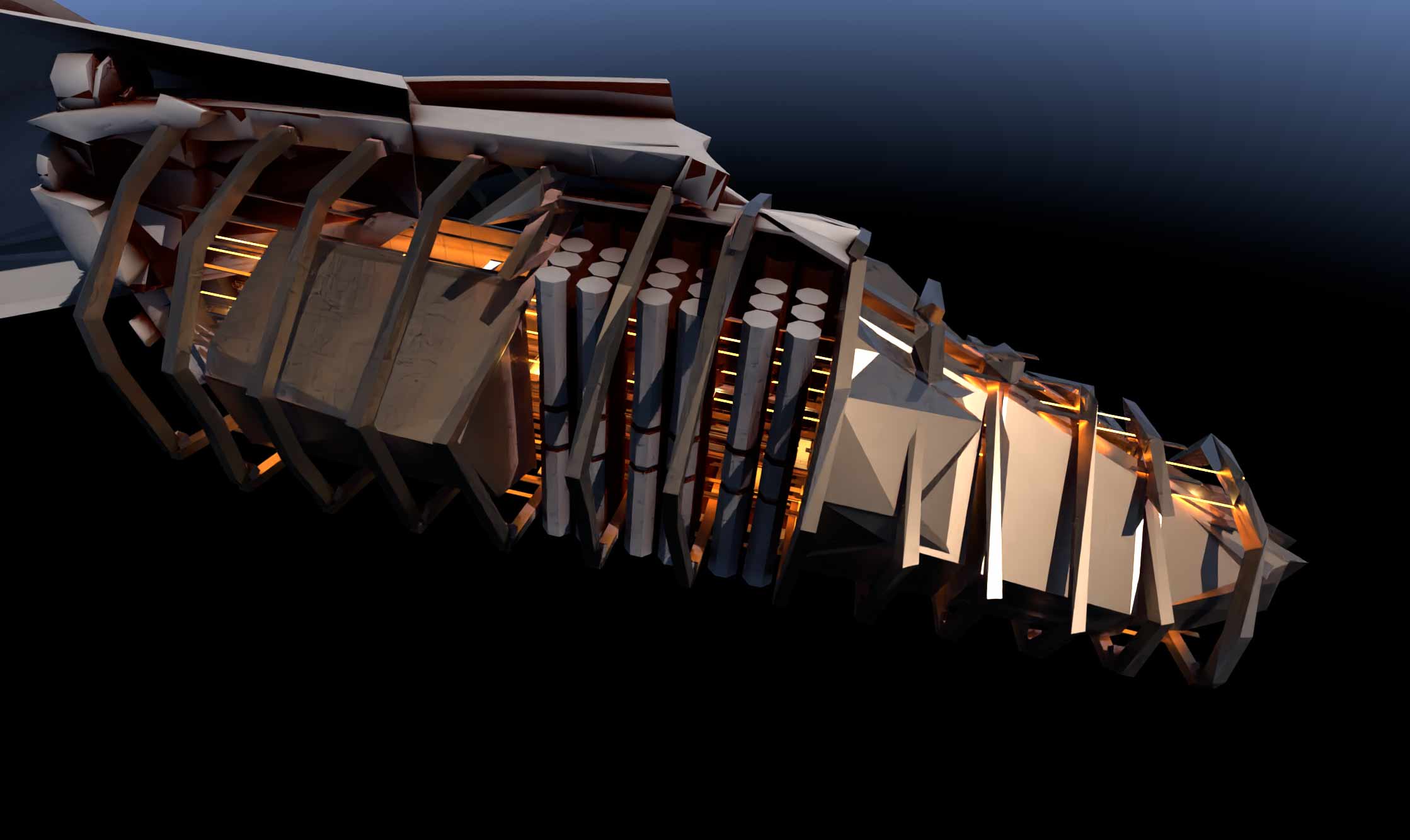
Armstrong Branding
I’m actually a trained graphic designer, so every now and then, even as a concept designer, you get the chance to create a logo. In this case, I intentionally aimed for something rough and clunky. Have you ever seen B2B logos from big industrial companies? That vibe.
In the end, we went with a bold “A” for Armstrong, kept in a fairly classic style, no sci-fi fonts. More important than the shape was the color code: orange/yellow stands for logistics and mining. Just think of the color of a giant Caterpillar mining vehicle.
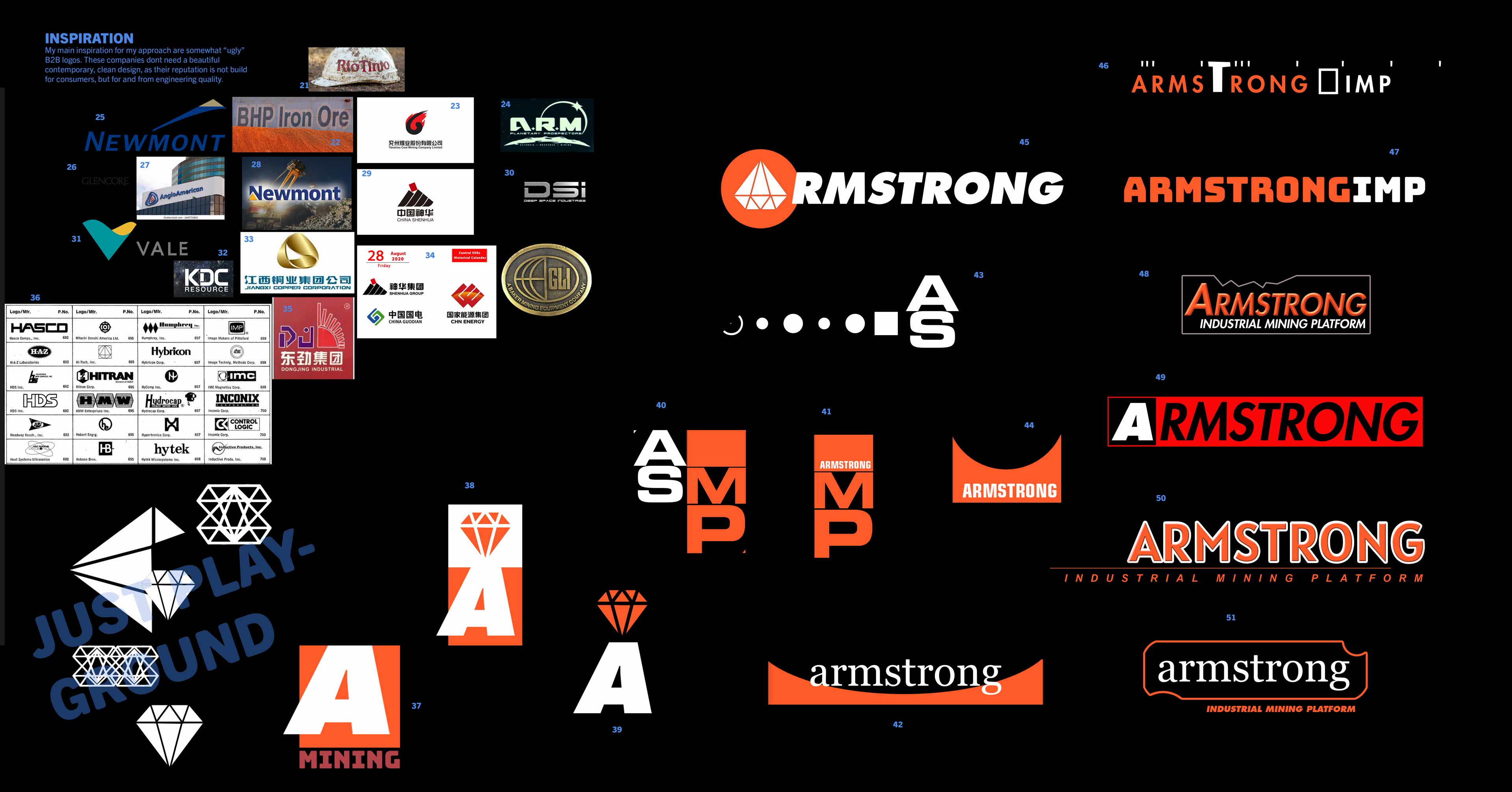
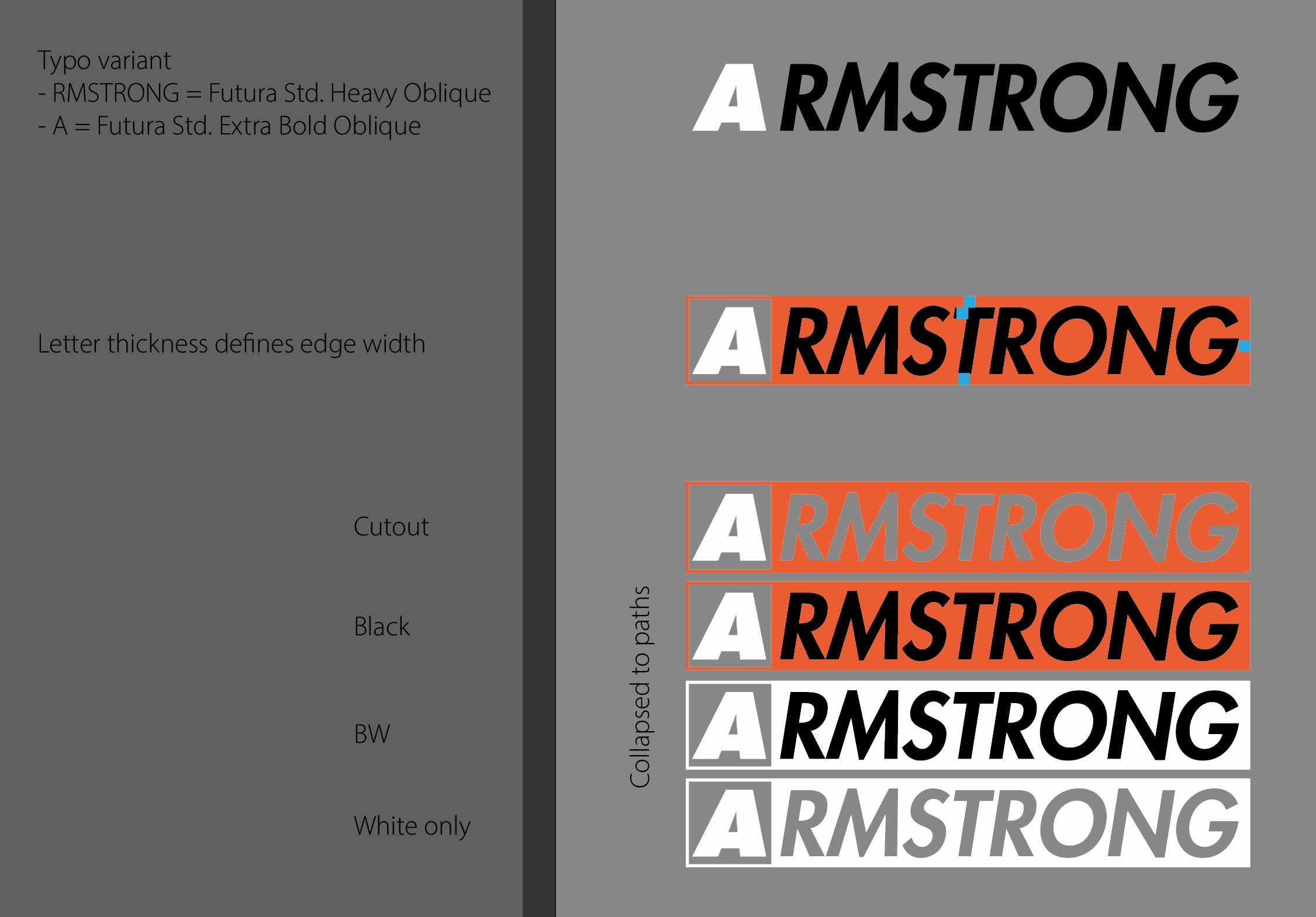
Inspired by Today, Not Sci-Fi
I had a clear vision in mind while designing, but at some point, you need to put it into images so others can follow along. Early on, I realized I wanted to move away from classic sci-fi design and lean into something more grounded, drawing inspiration from real-world industries like oil rigs, heavy machinery, cargo ships, and blast furnaces. That raw, industrial feel isn’t something you often see in games, so I shared these references throughout the process with the client as often as possible.
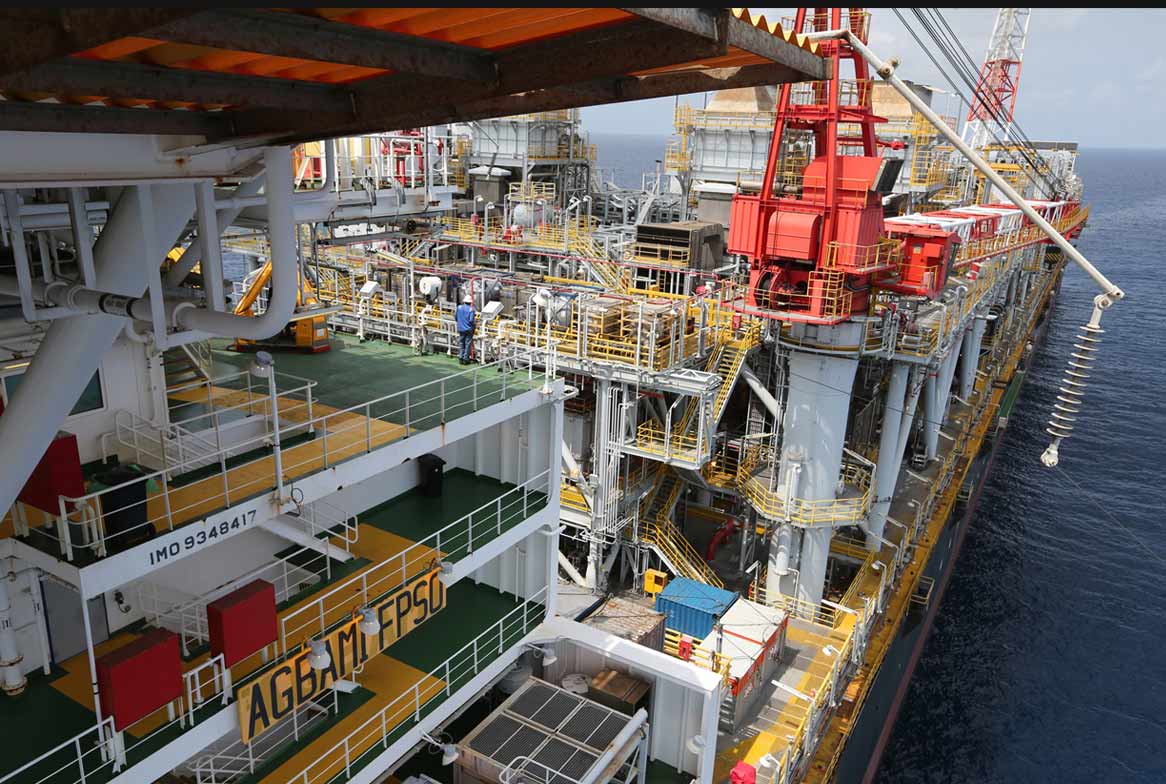
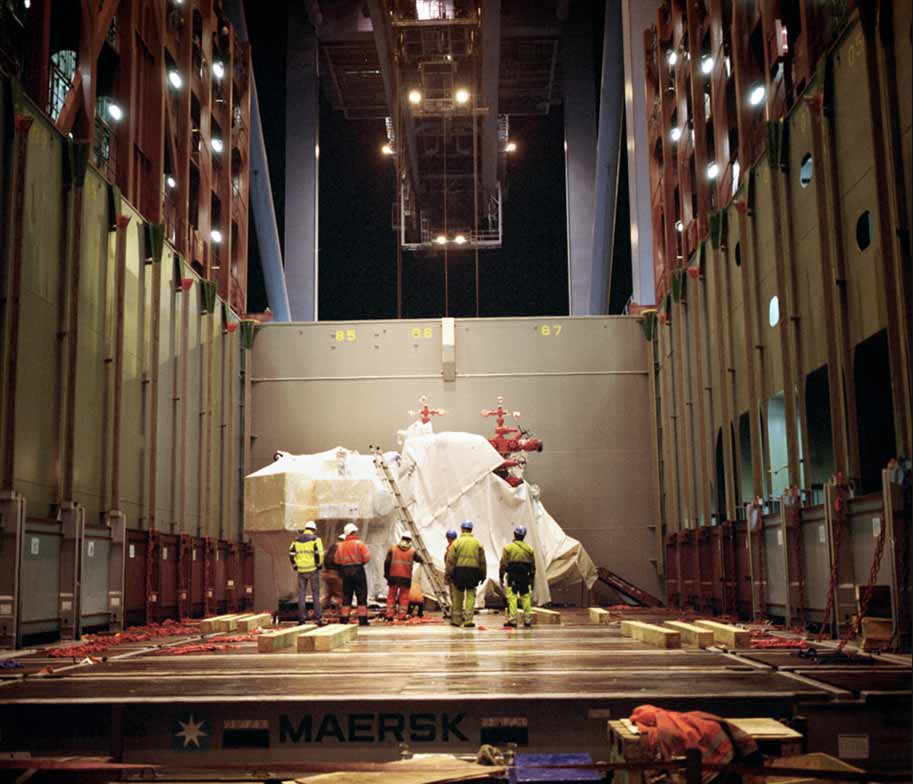
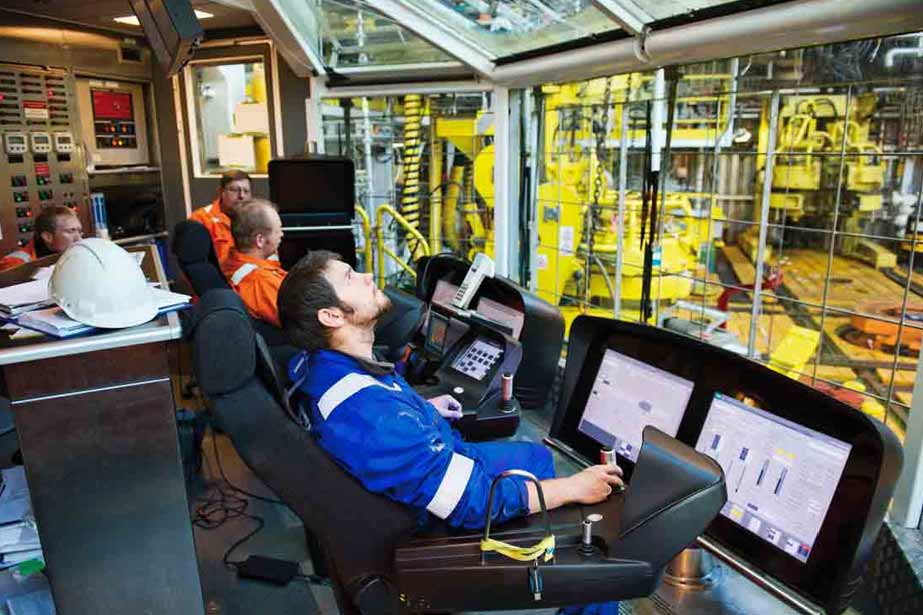
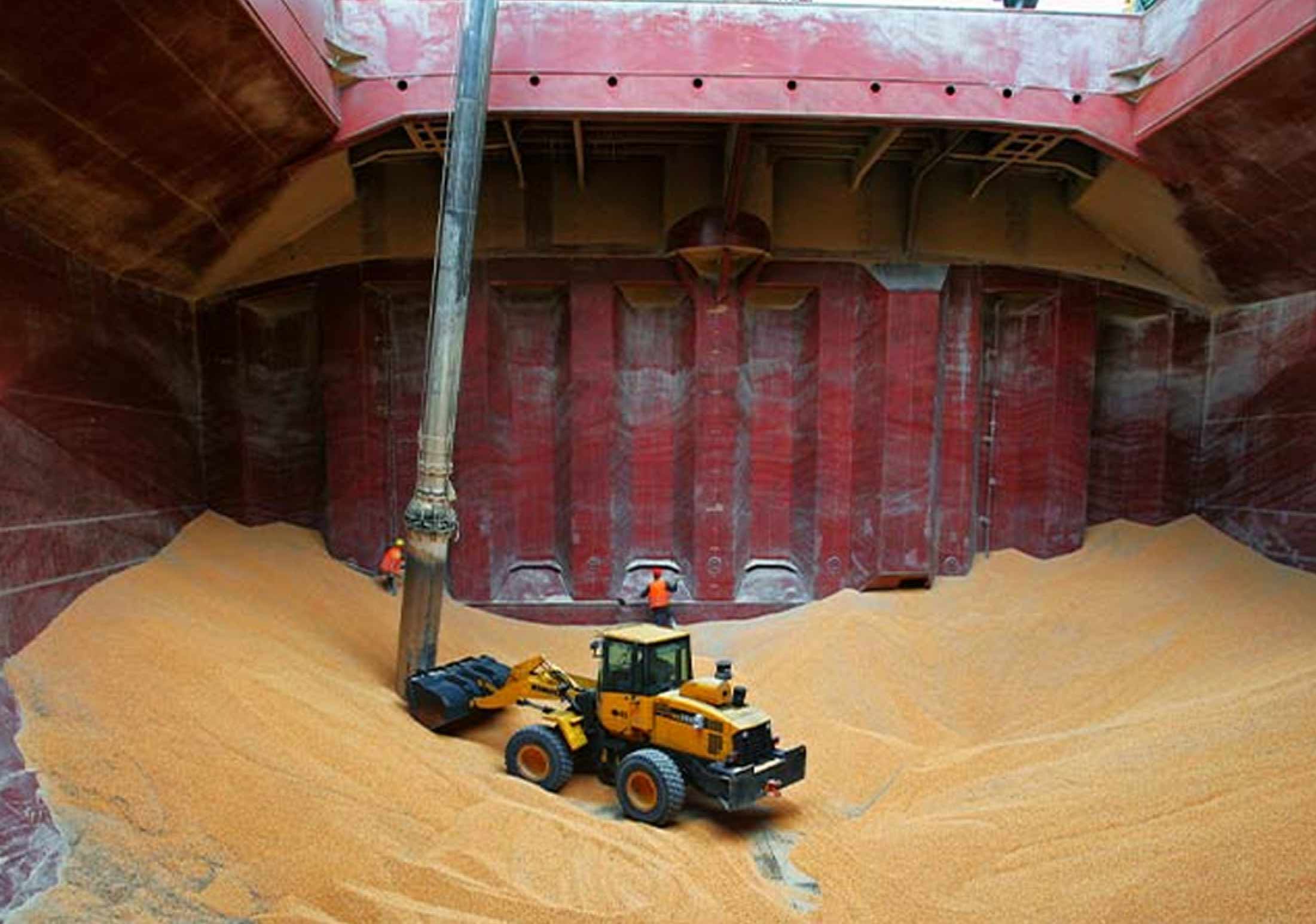
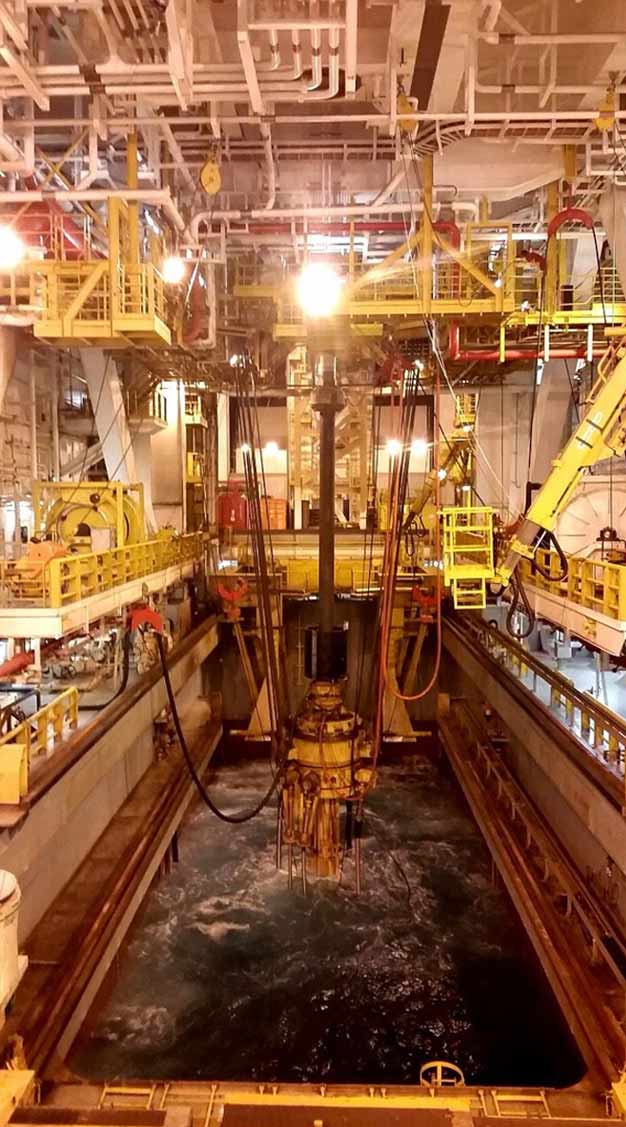
How many rooms should there be, really?
Of course, my job wasn’t to create a detailed CAD drawing of every pipe and cable, but it definitely helps to think through where everything is. Knowing the layout early on makes a big difference later in level design, especially when you want players to feel grounded in a specific part of the ship.
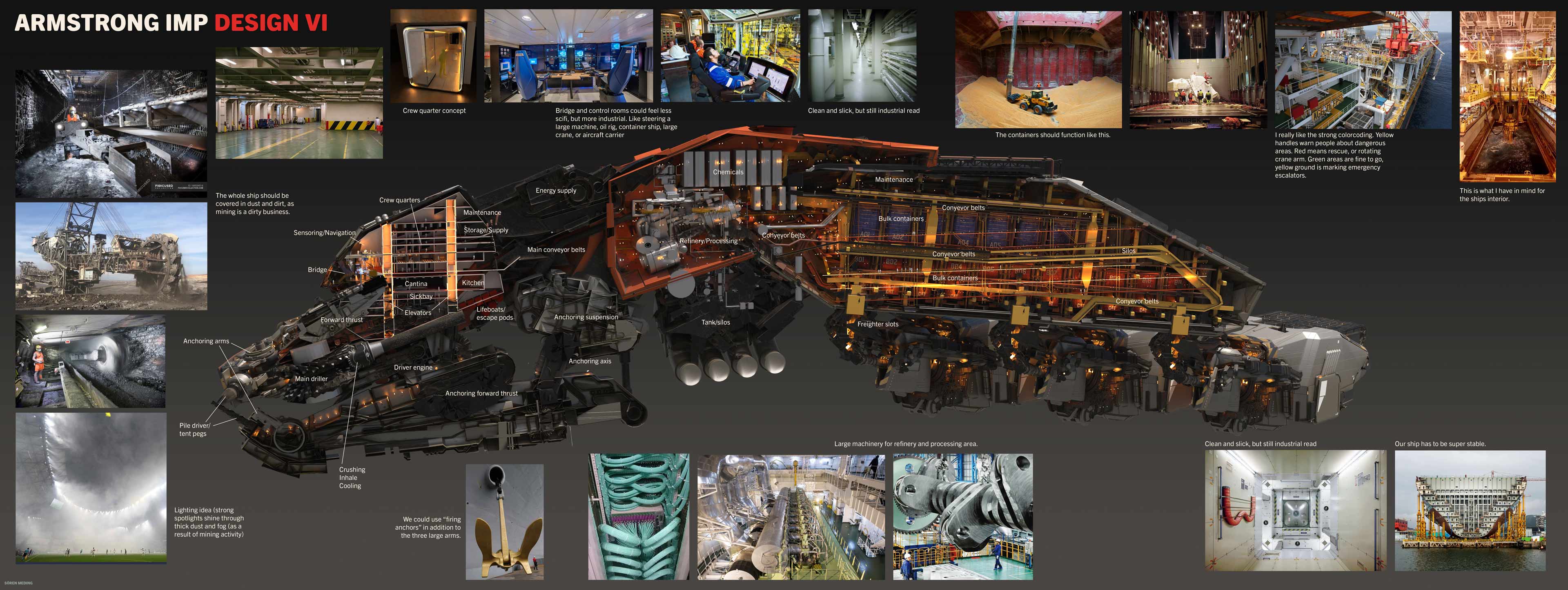
Blender Flythrough & Walkable UE5 Demo
In the Blender video to the left, you can get a sense of the ship’s massive scale, it’s truly colossal. To highlight this even more, I also created a playable UE5 demo that lets you explore parts of the ship up close. Unfortunately, the demo was only shared internally. But just to give you an idea: walking through the entire ship, from the front, past cabins, decks, the bridge, crew quarters, the refinery, and the huge bulk material storage tanks, all the way to the exit, takes six (!) full minutes.
Final Concepts
After many hours of work, the ship finally came together. Here are the final concept designs.
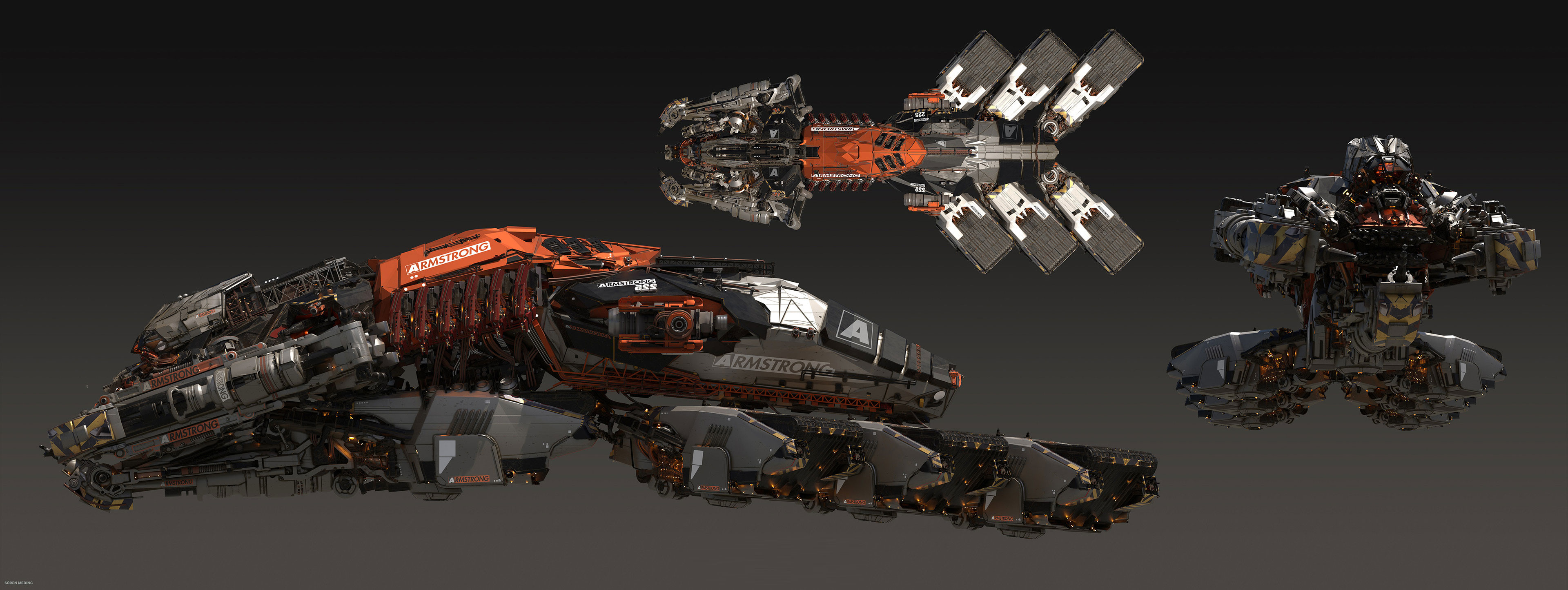
Gameplay mechnics around the Mosquito
Many questions remain unanswered: How do you dock with a rotating asteroid? What happens to the debris that’s blasted away? This sheet offers a few game mechanic ideas for the Mosquito.
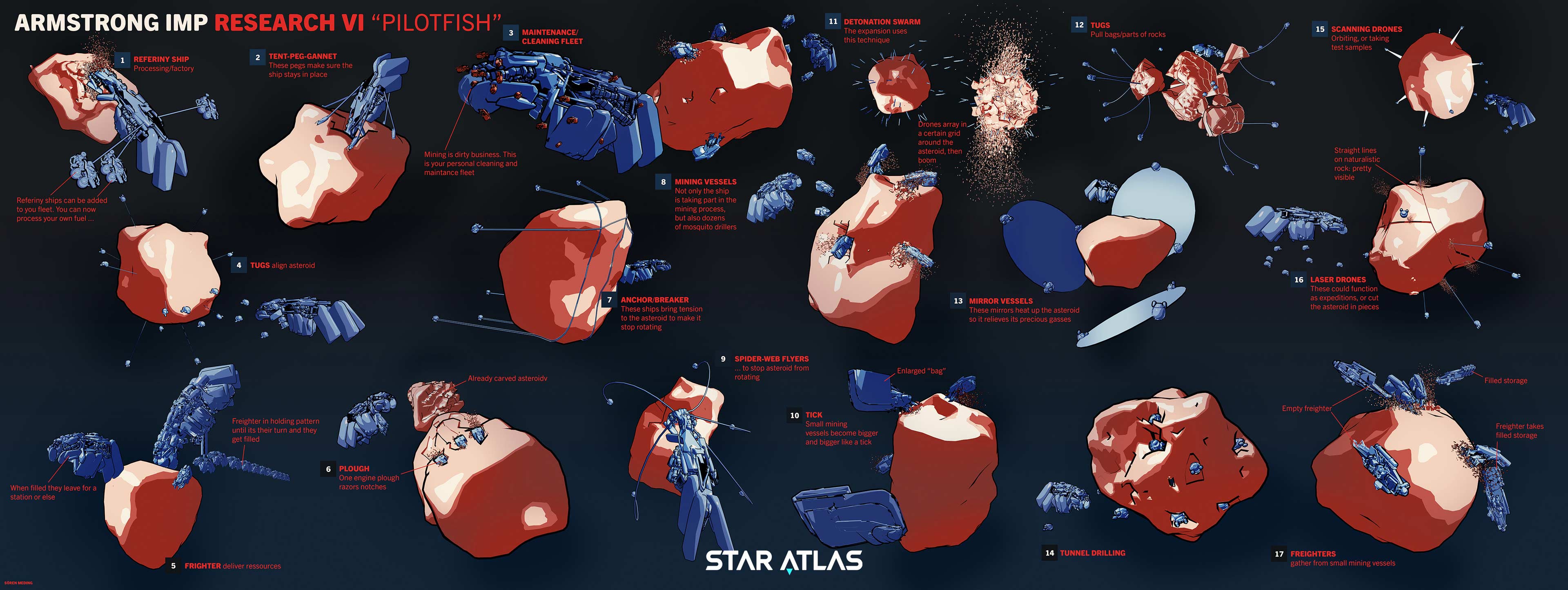
So… Just How Big Are Asteroids?
Some are truly massive, several kilometers in diameter. (Fact check: Yes, many asteroids are several kilometers wide; for example, Ceres is about 940 km across, and Vesta is around 525 km.)
Do we mine the entire asteroid? Do we break it into smaller pieces? Or are there different materials with varying levels of difficulty to extract?
Worksheets like this are primarily intended for game design, serving as a foundation for discussion and further development.
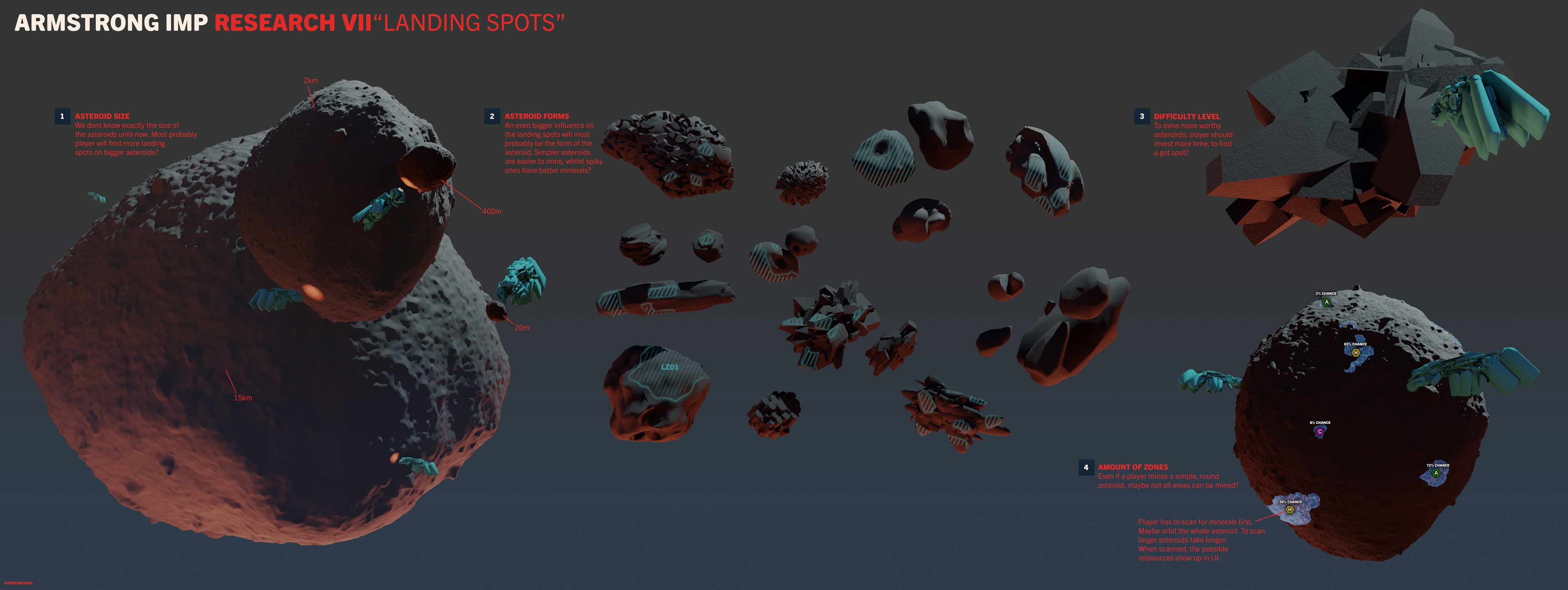
Finding the Right Image to Tell the Story
With the ship design complete, it was exciting to finally see it in action. This phase was a lot of fun, full of creative possibilities. After many days of work, I placed the ship in scenes and began exploring different camera angles to find the best shots. Here’s a quick glimpse of some unfinished tests that still helped shape the overall concept.
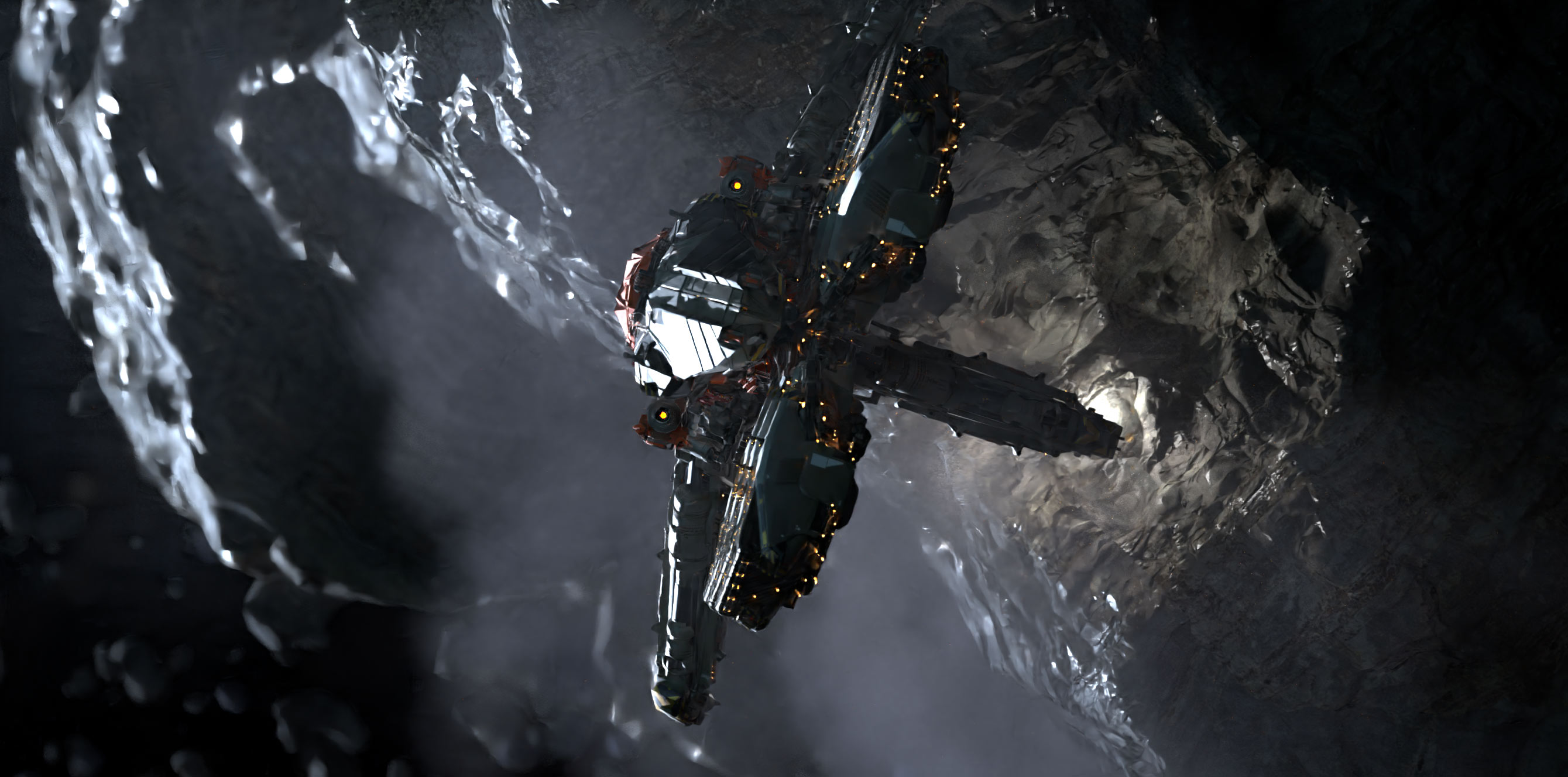
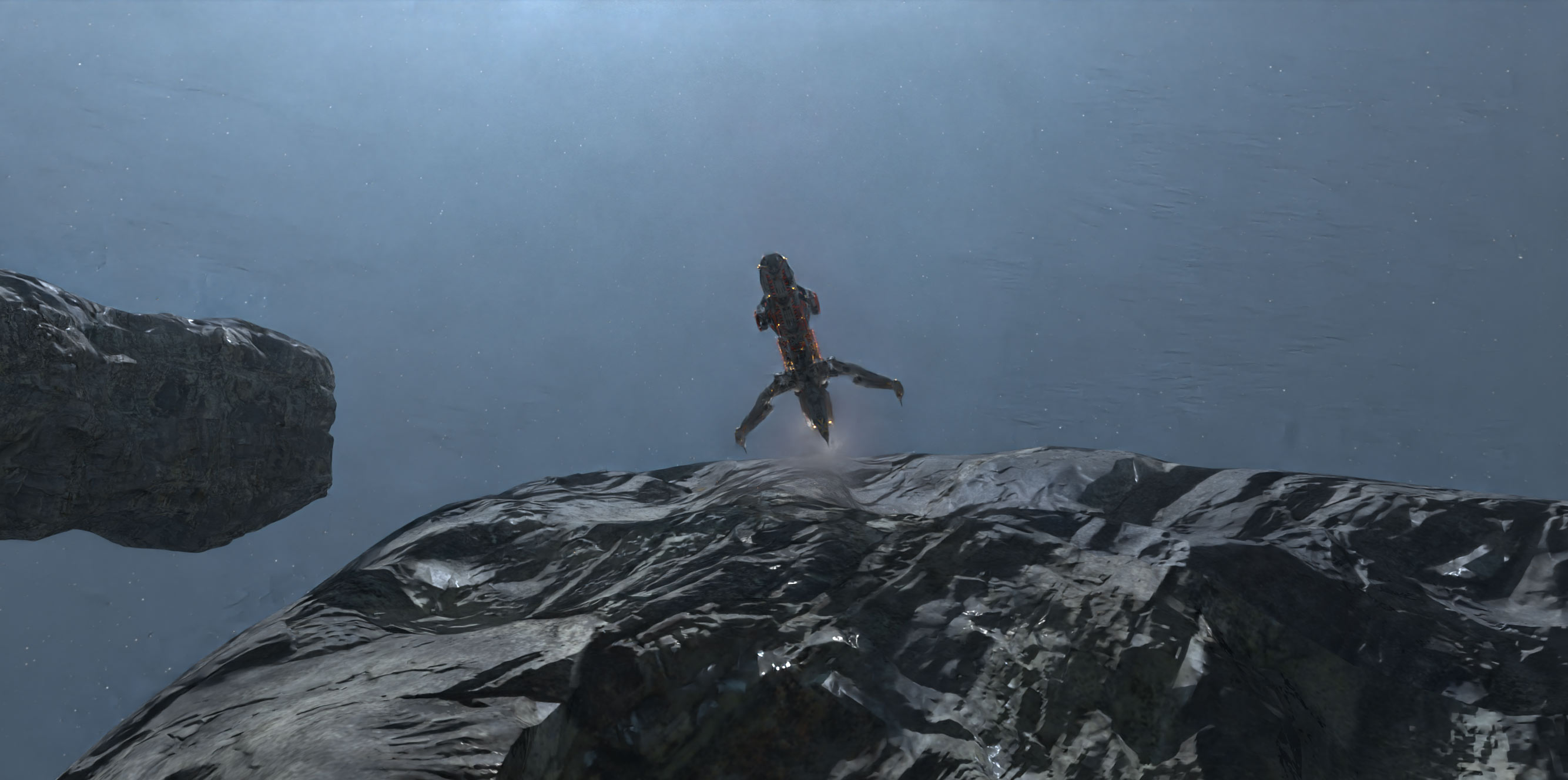
The vessel moves slowly, navigating past massive asteroids. As it goes, it scans them for rare and valuable resources. Its movement is careful, like a drone approaching a shipwreck. The main focus here is exploration.
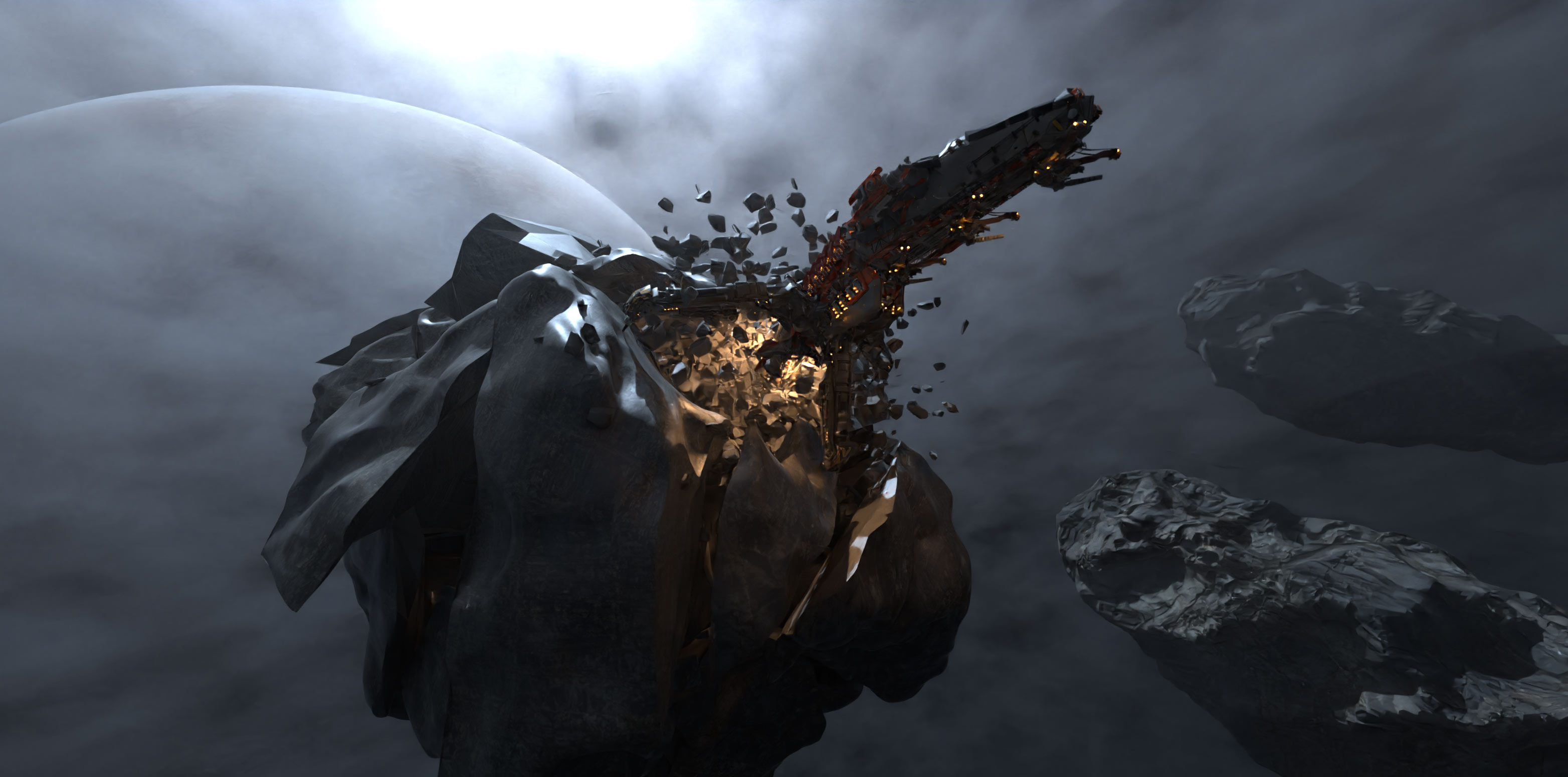
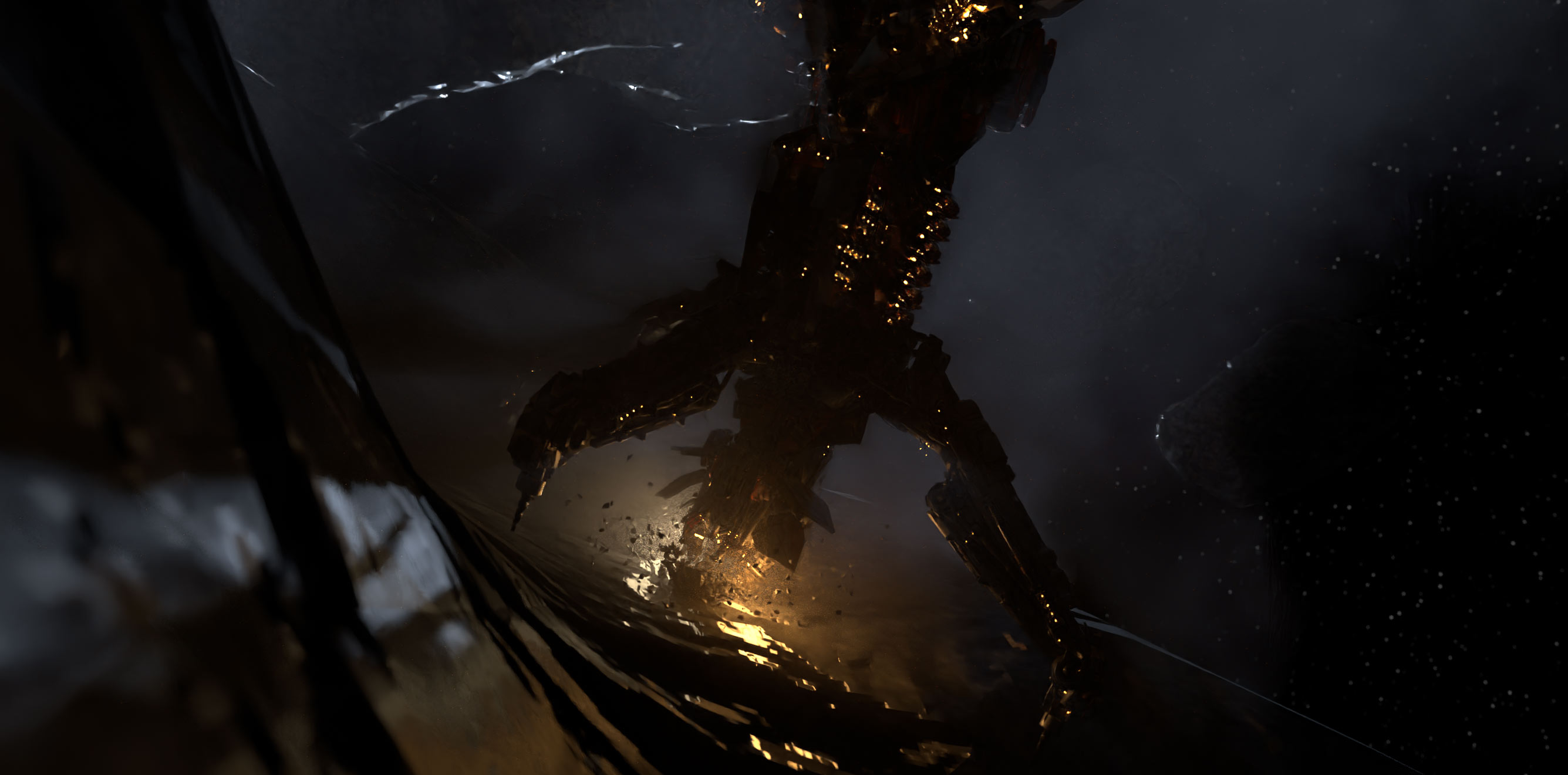
Another scene: Our ship has just cracked open an asteroid to reach its precious resources. For bigger asteroids, it anchors itself using three massive arms and drills with precision.
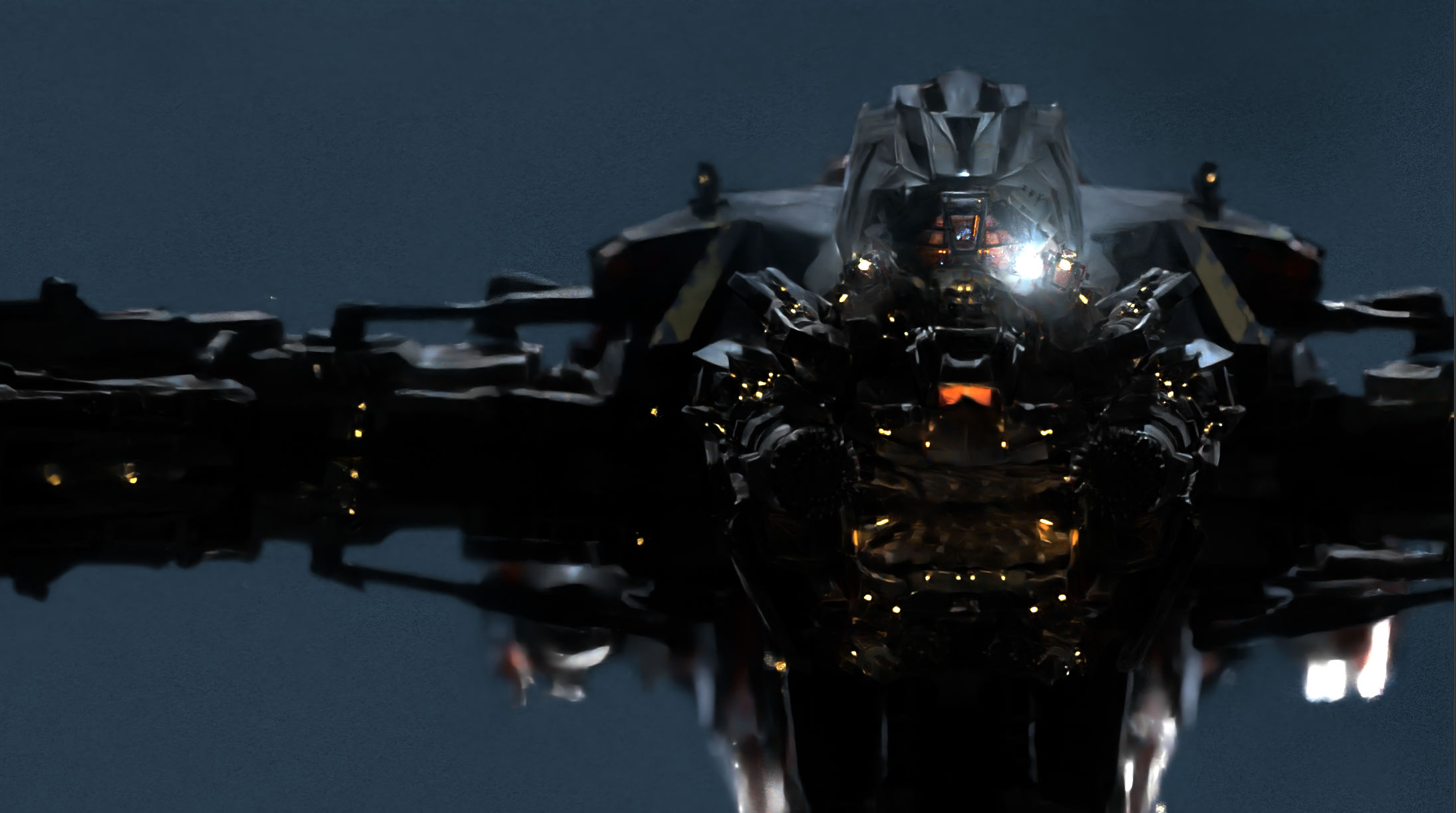
At this stage, the first shot ideas inspired by the automotive world started to come together.
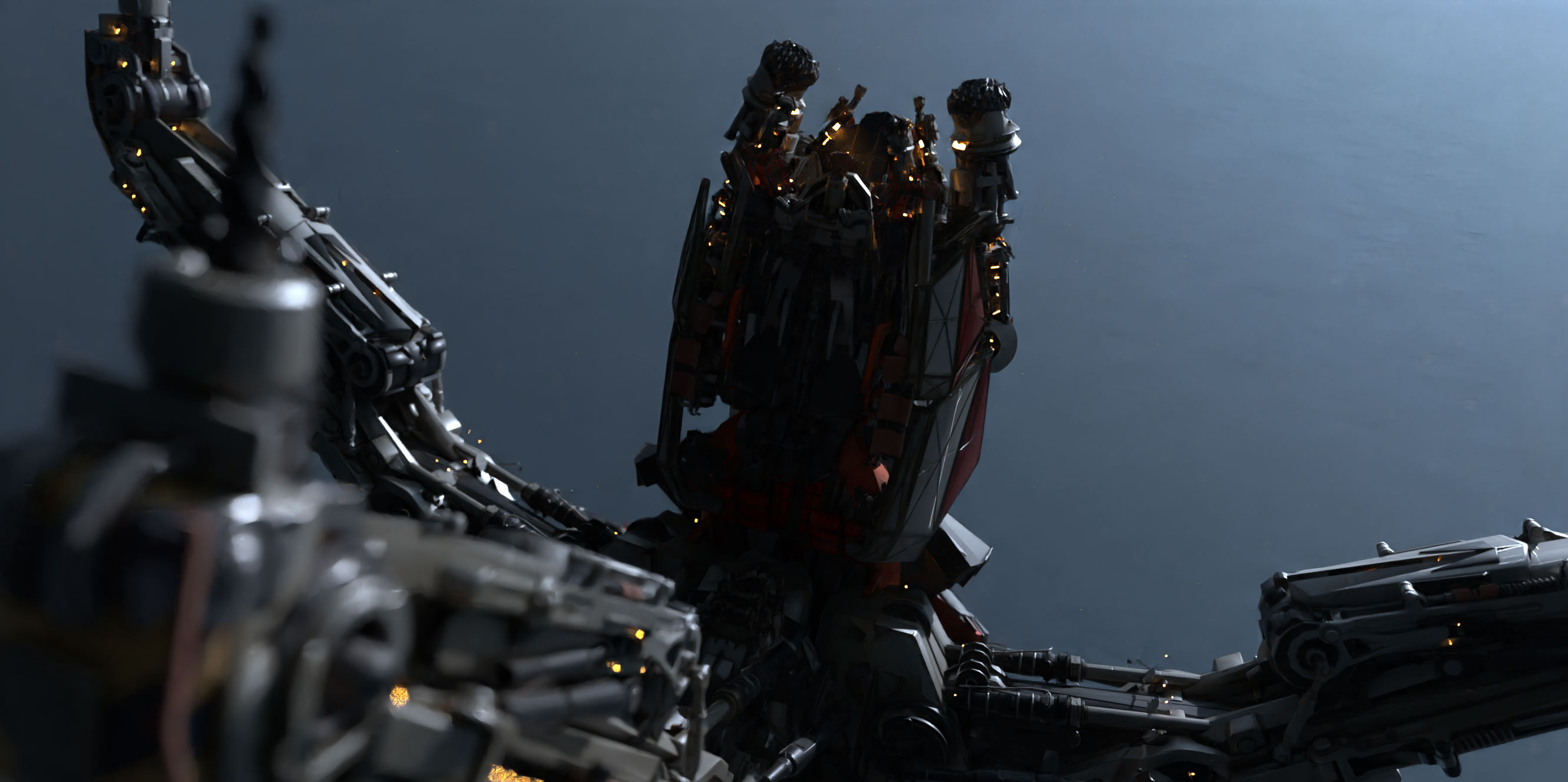
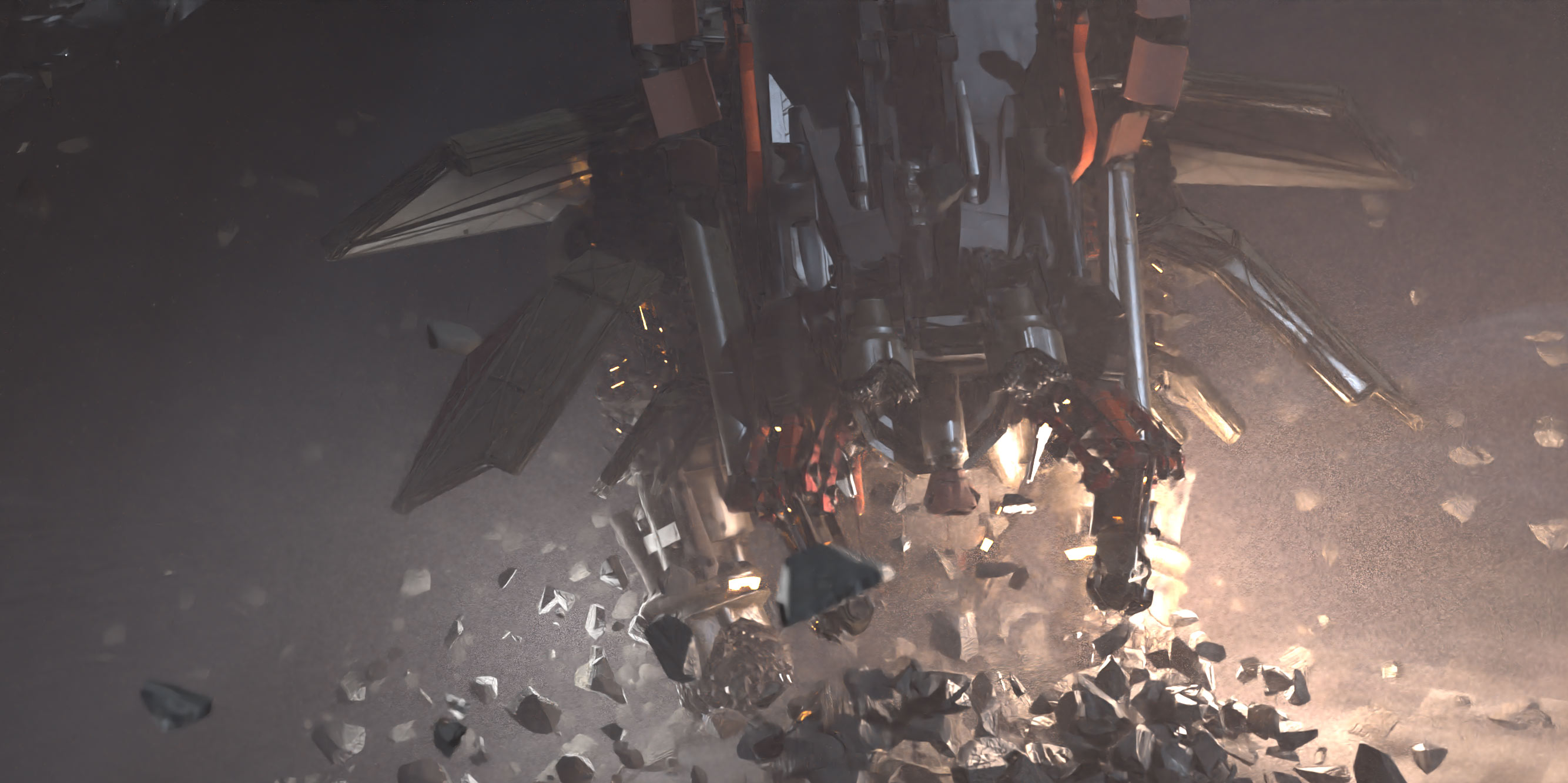
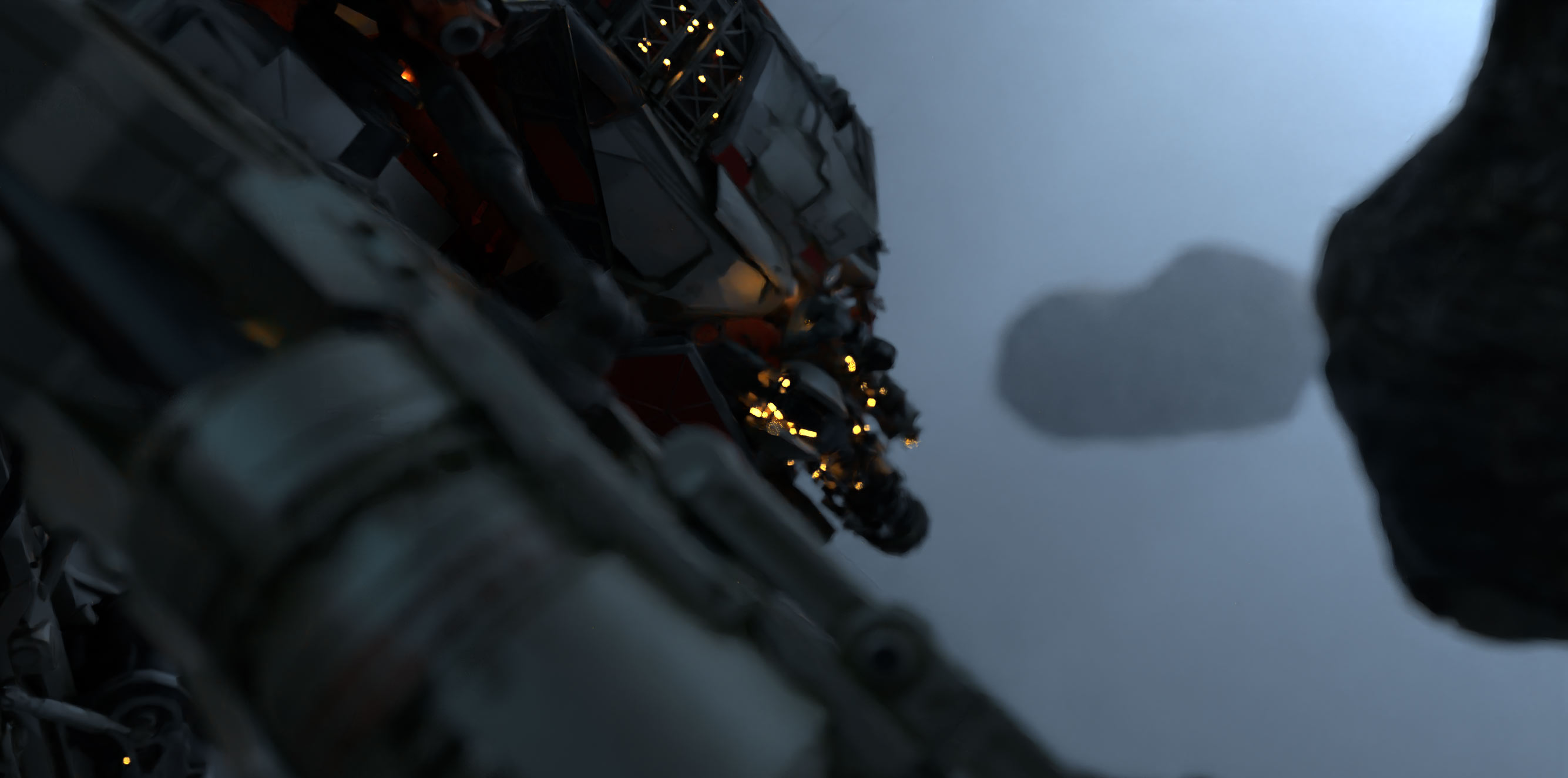
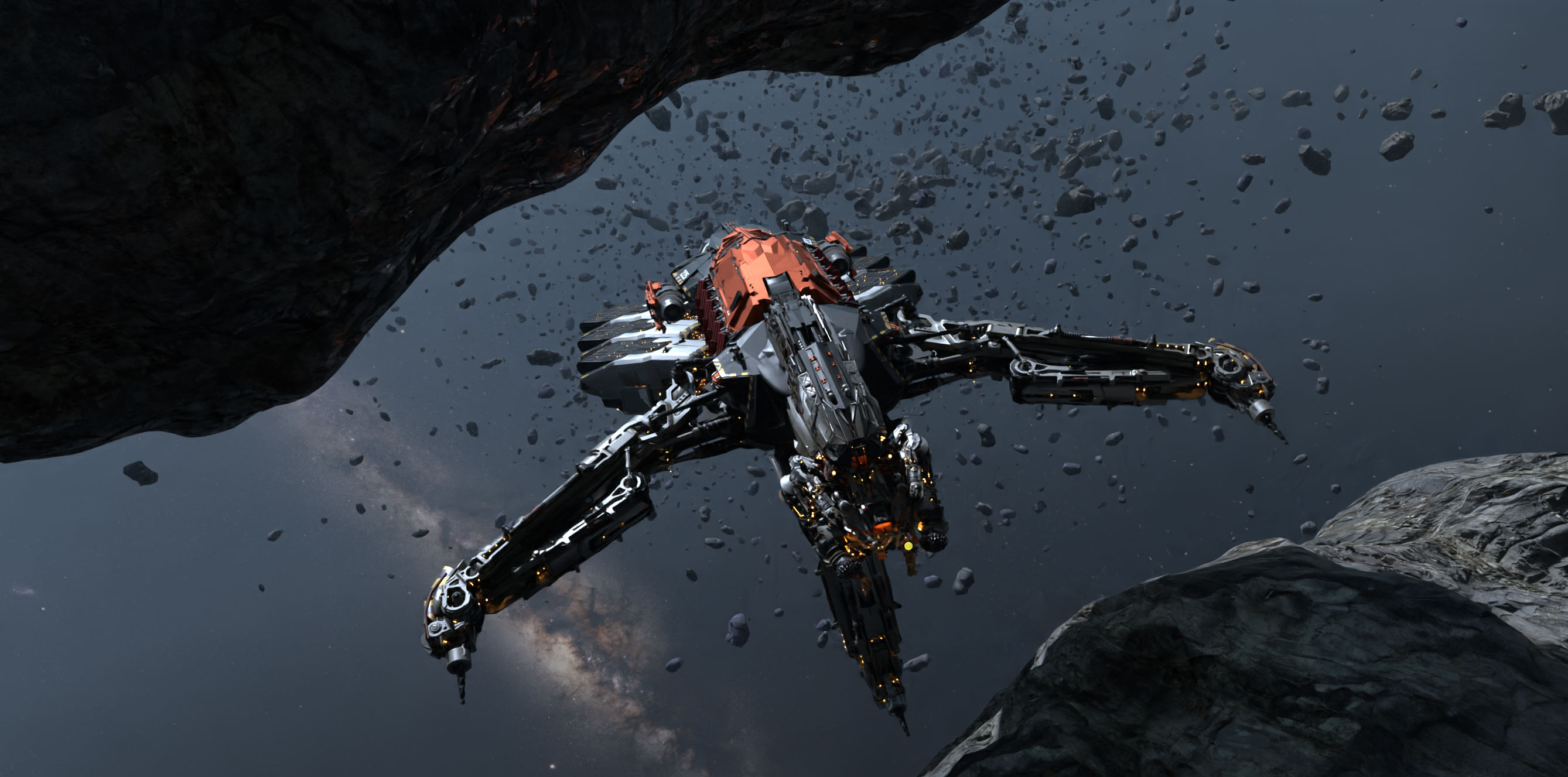
The Bridge: Back to the Start of the Journey
We’ve already come a long way. Before diving into the final artworks, let’s take a look inside the ship.
From the start, I put real thought into planning a meaningful interior layout. One of my goals was to make the captain feel isolated, visually and emotionally, reflecting the solitude of commanding such a massive vessel. Here are some ideas:
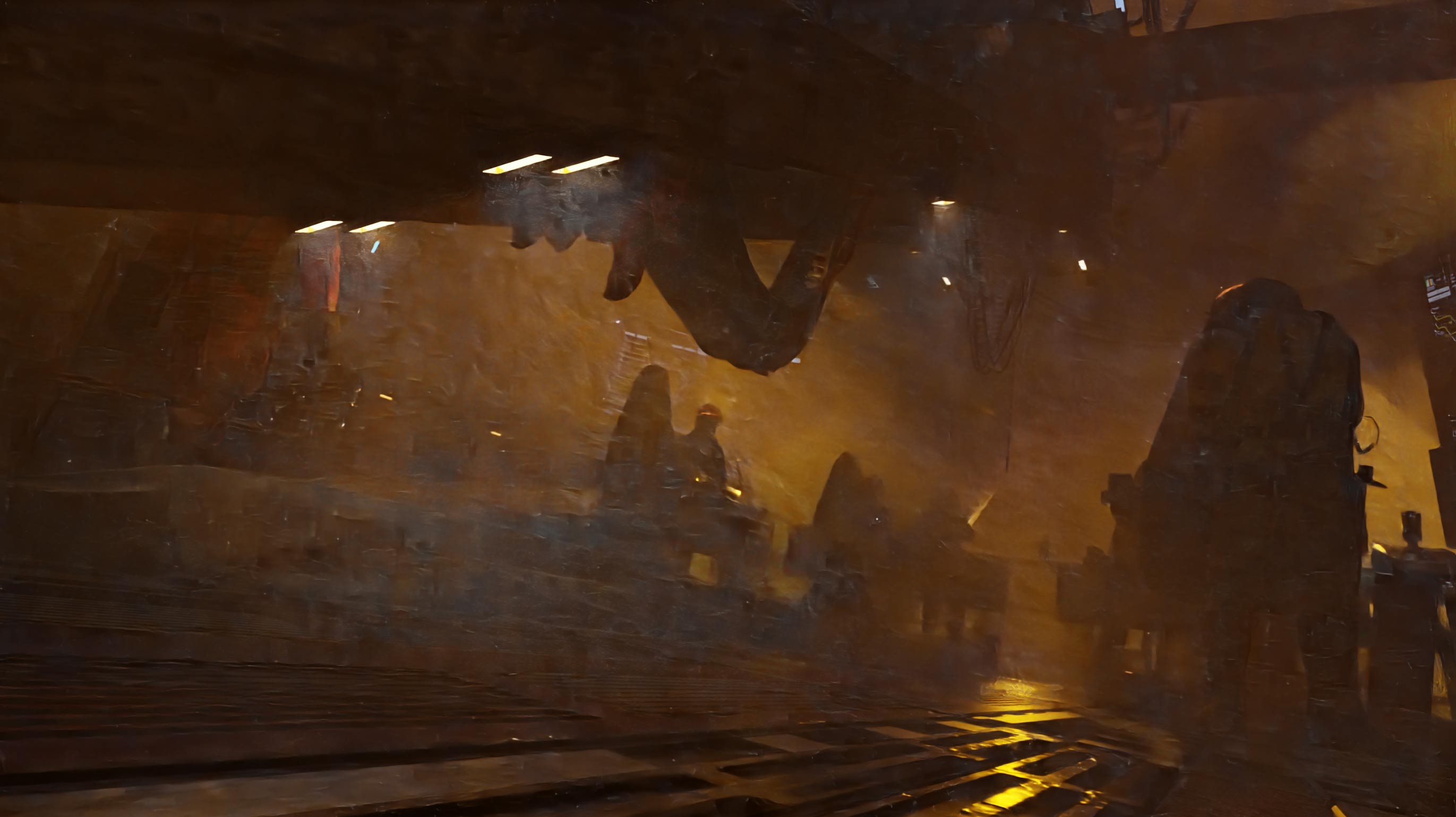
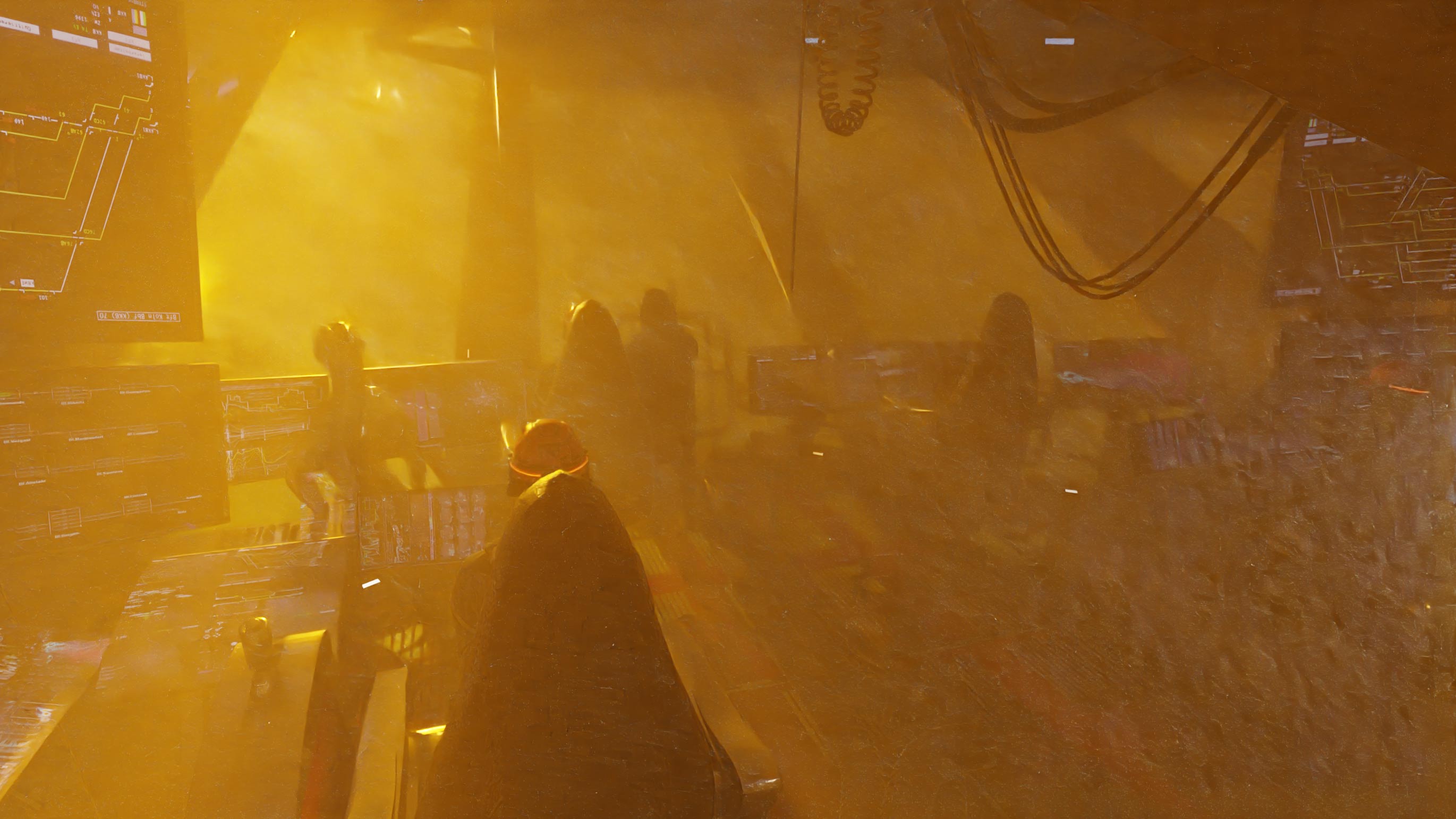
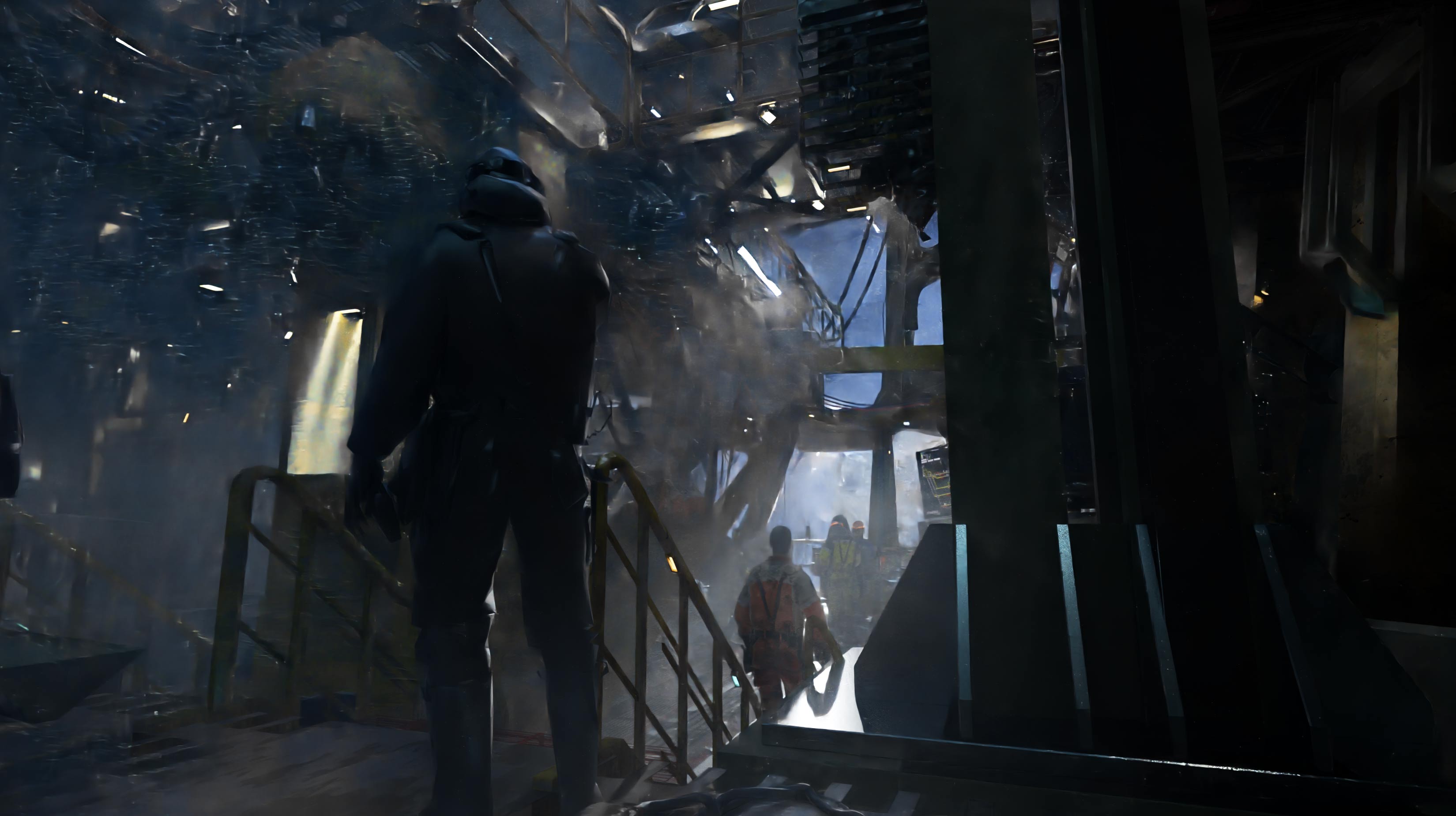
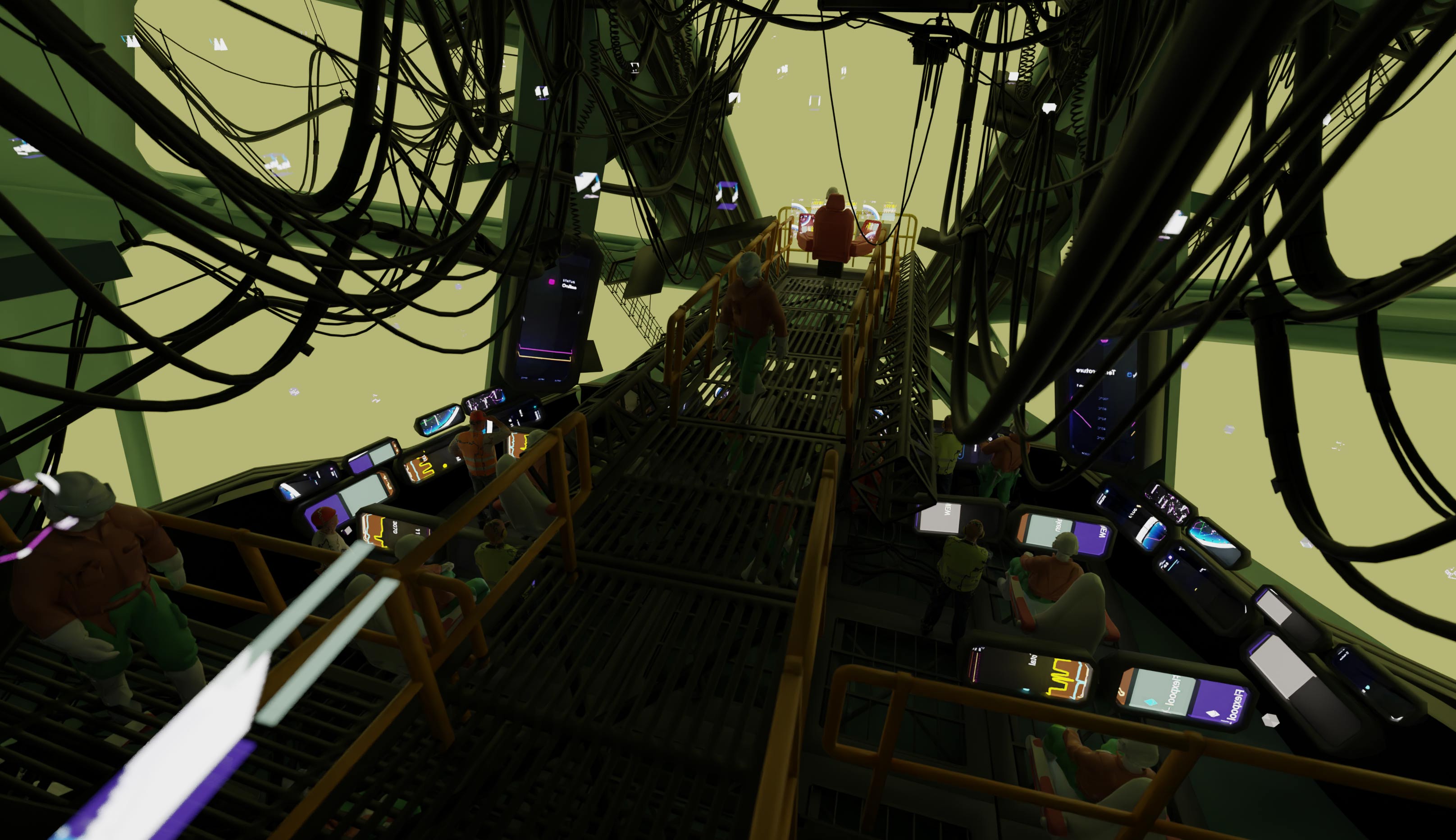
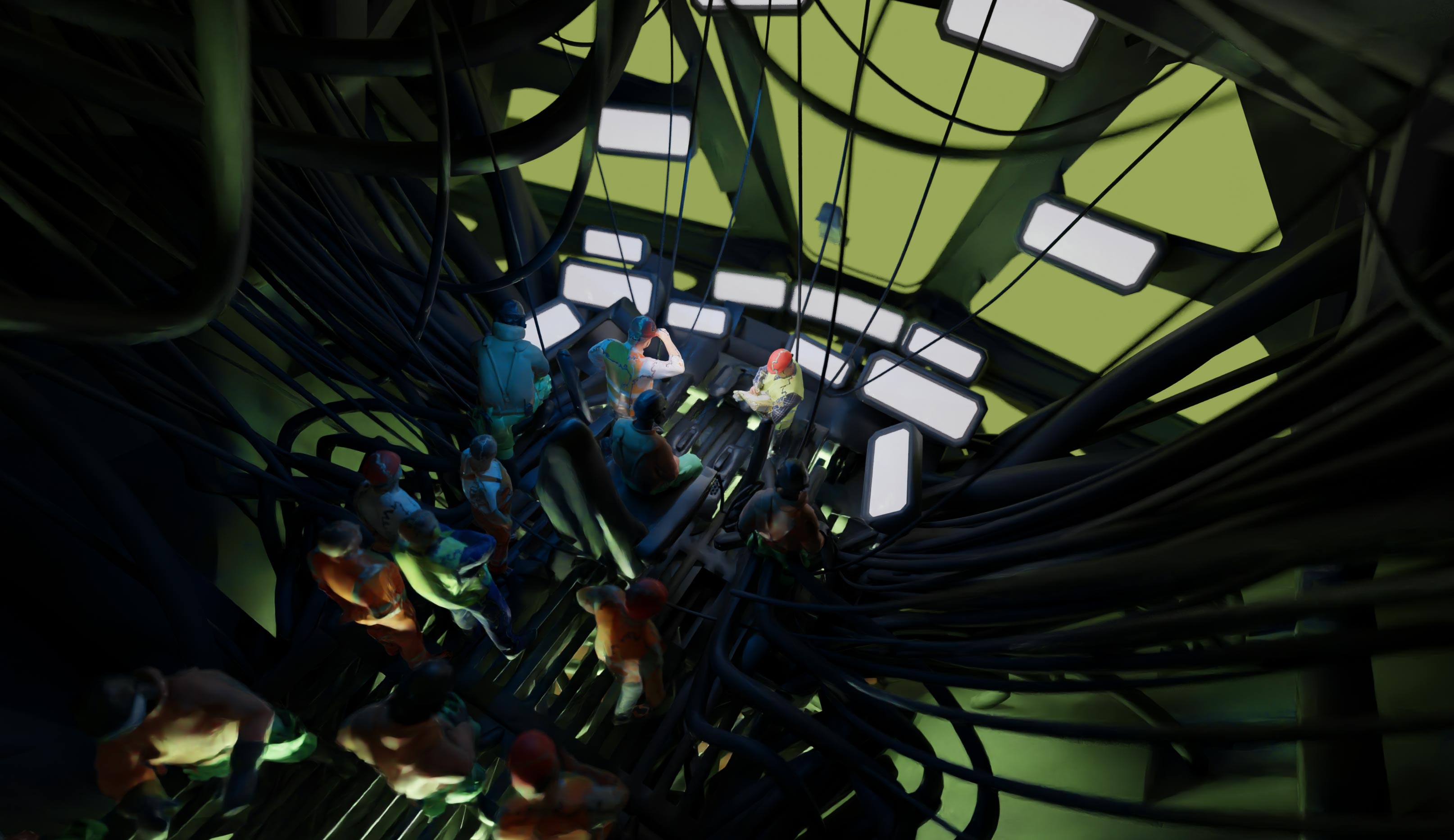
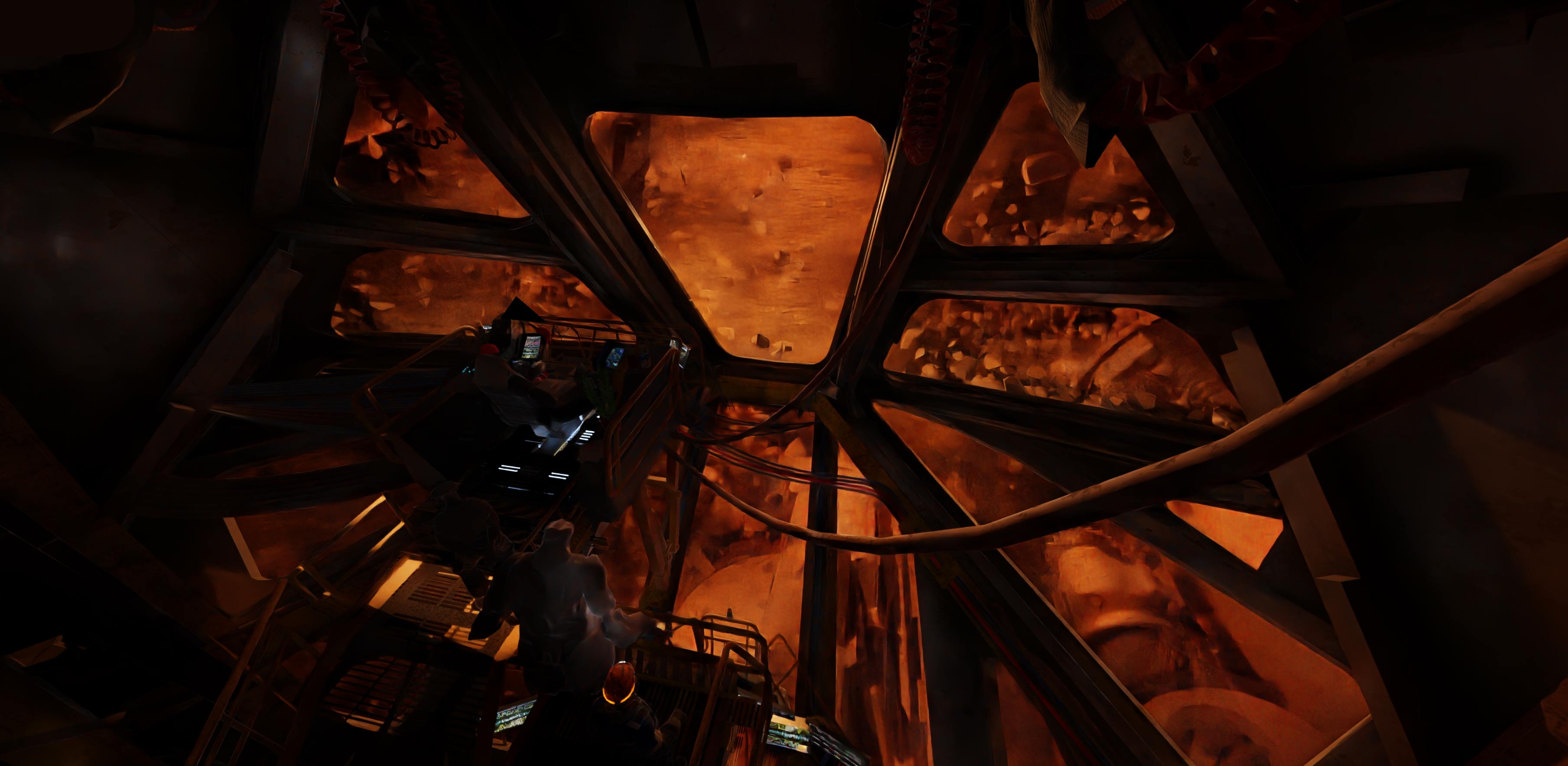
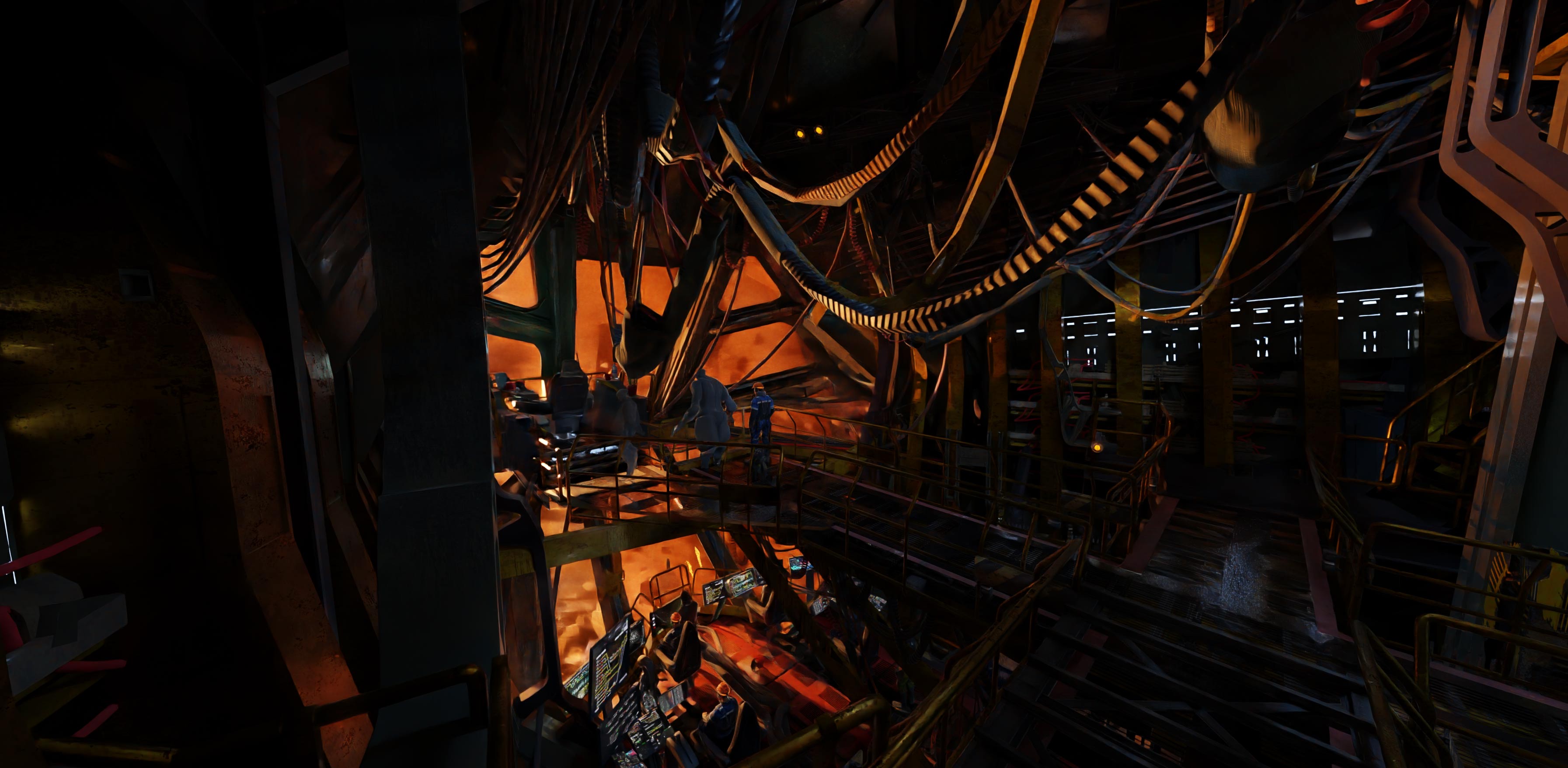
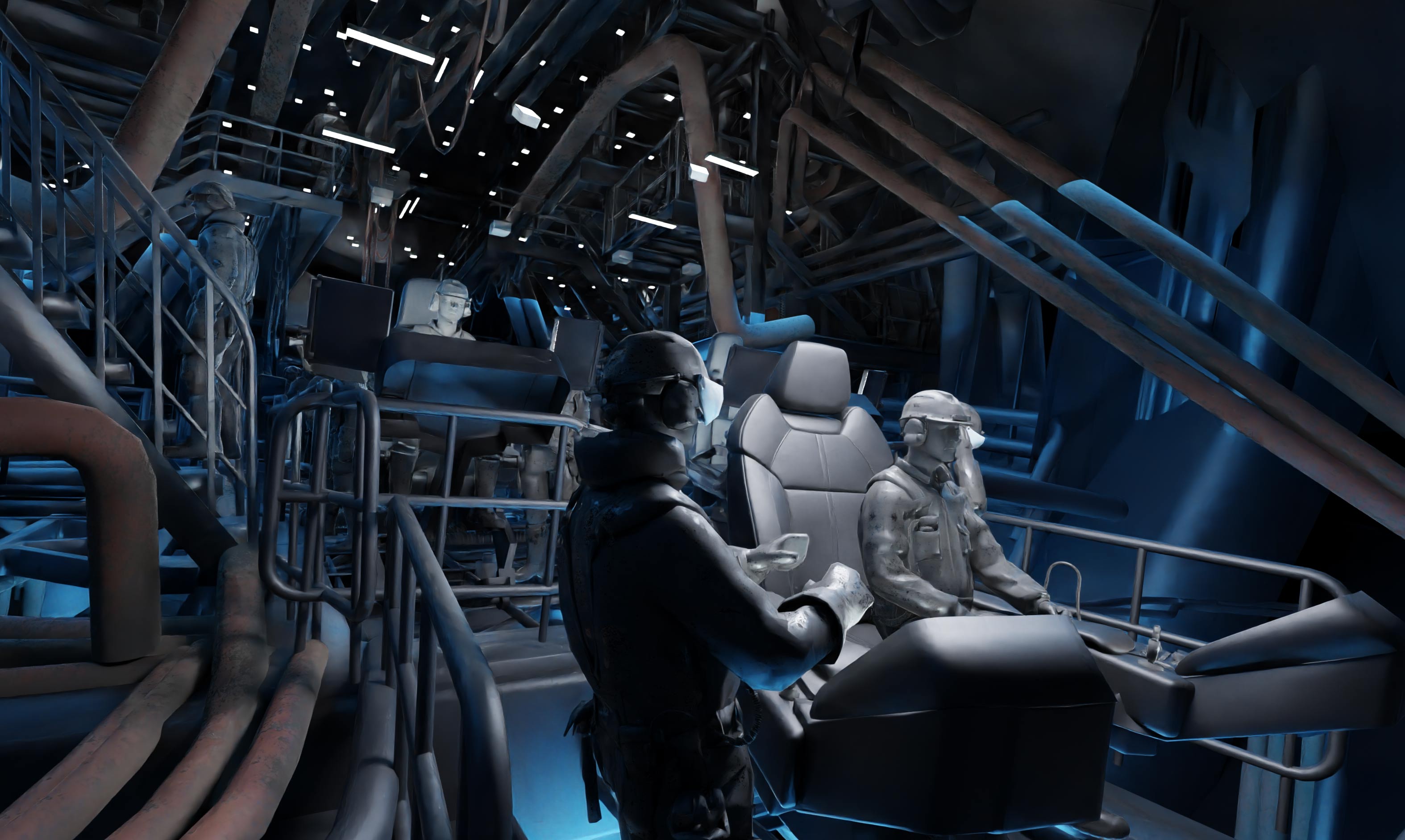
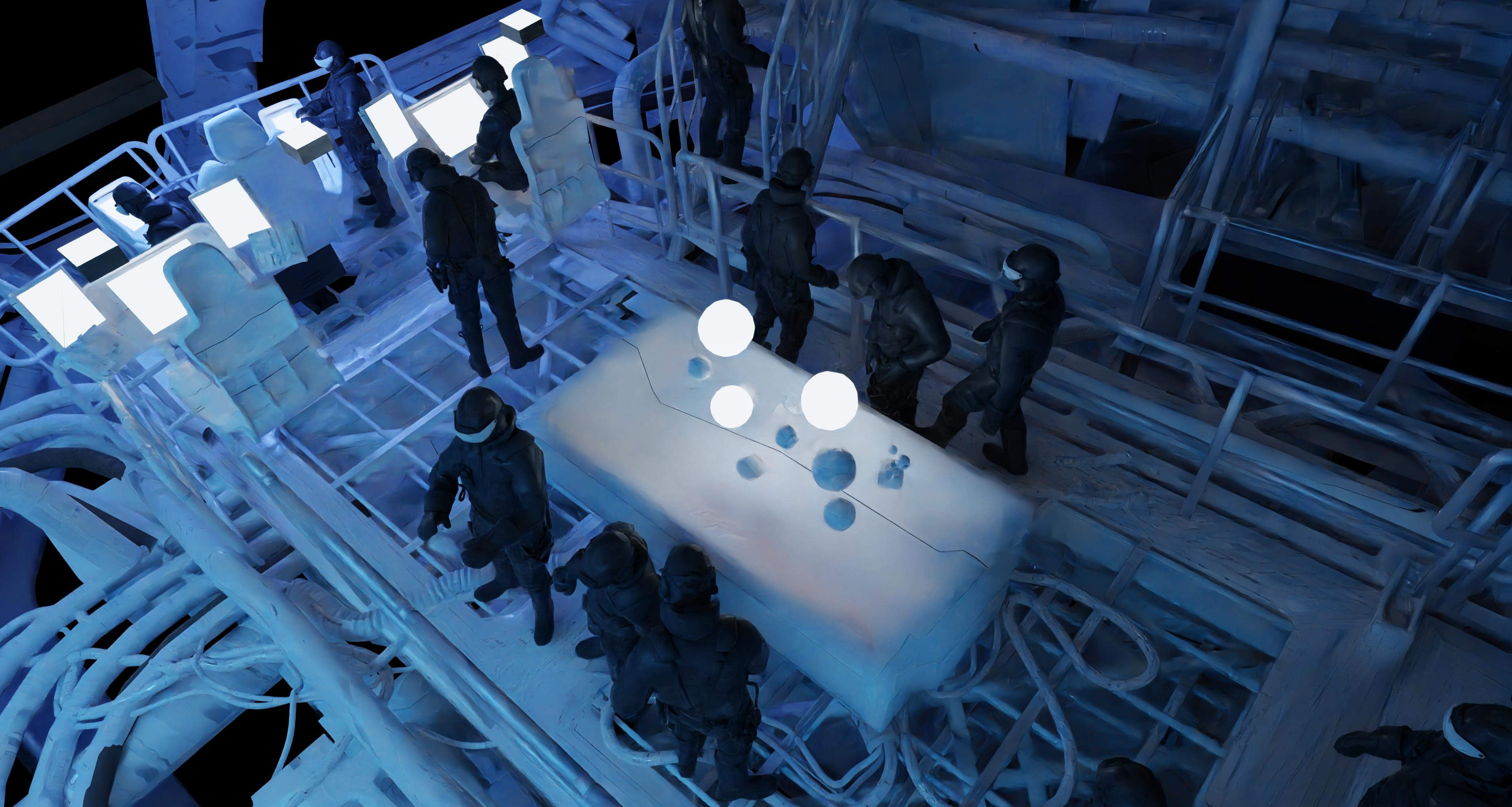
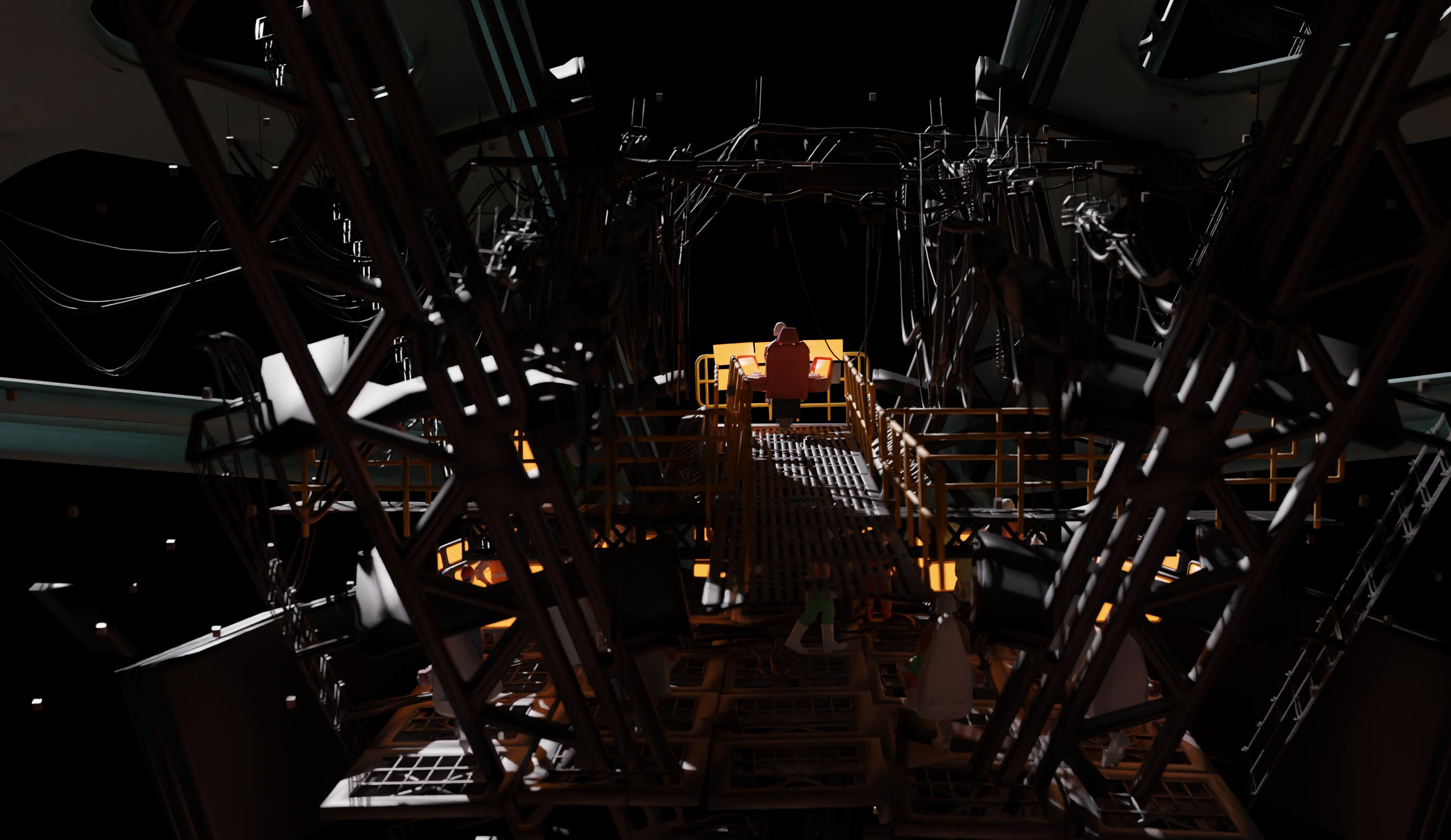
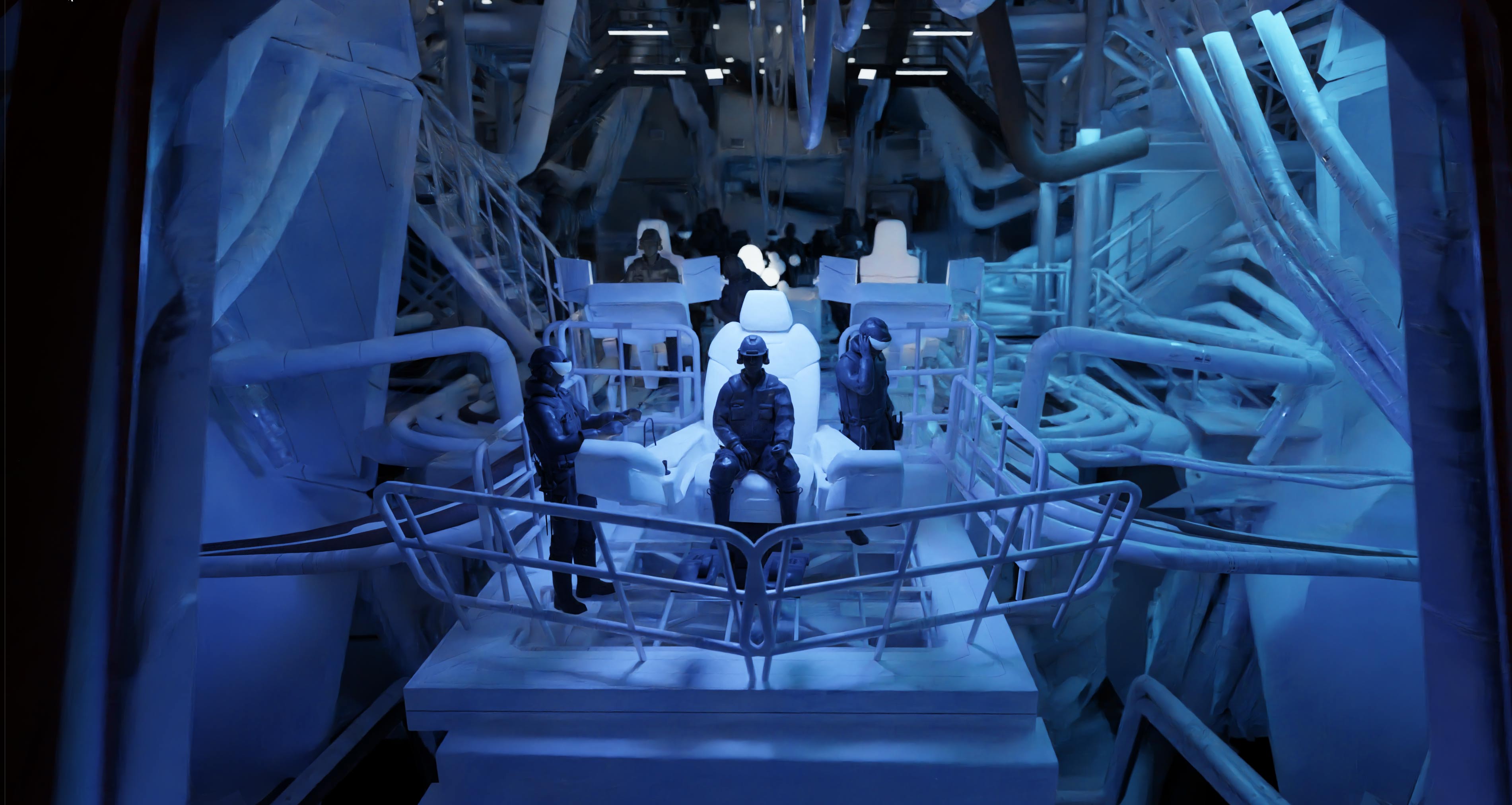
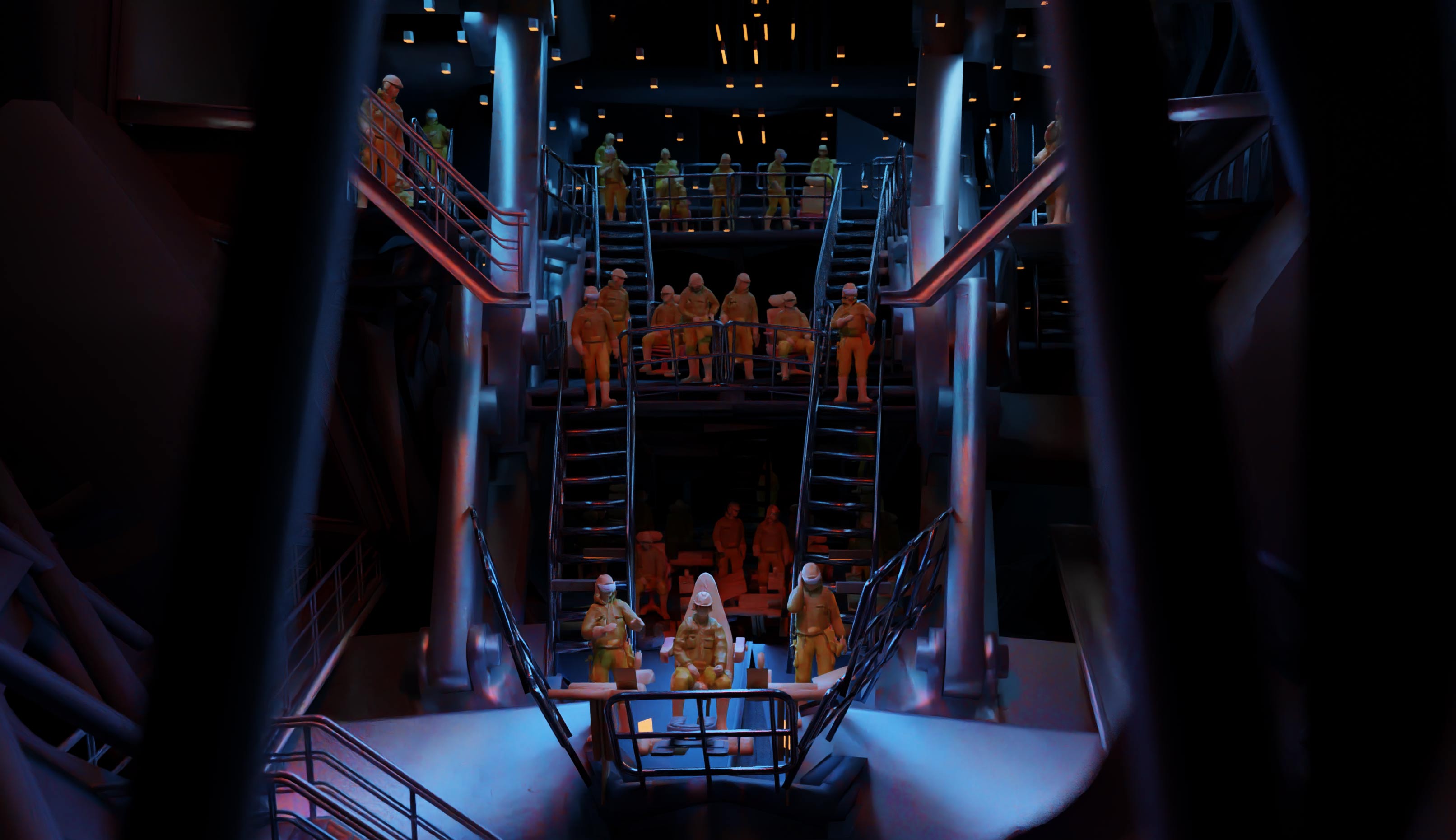
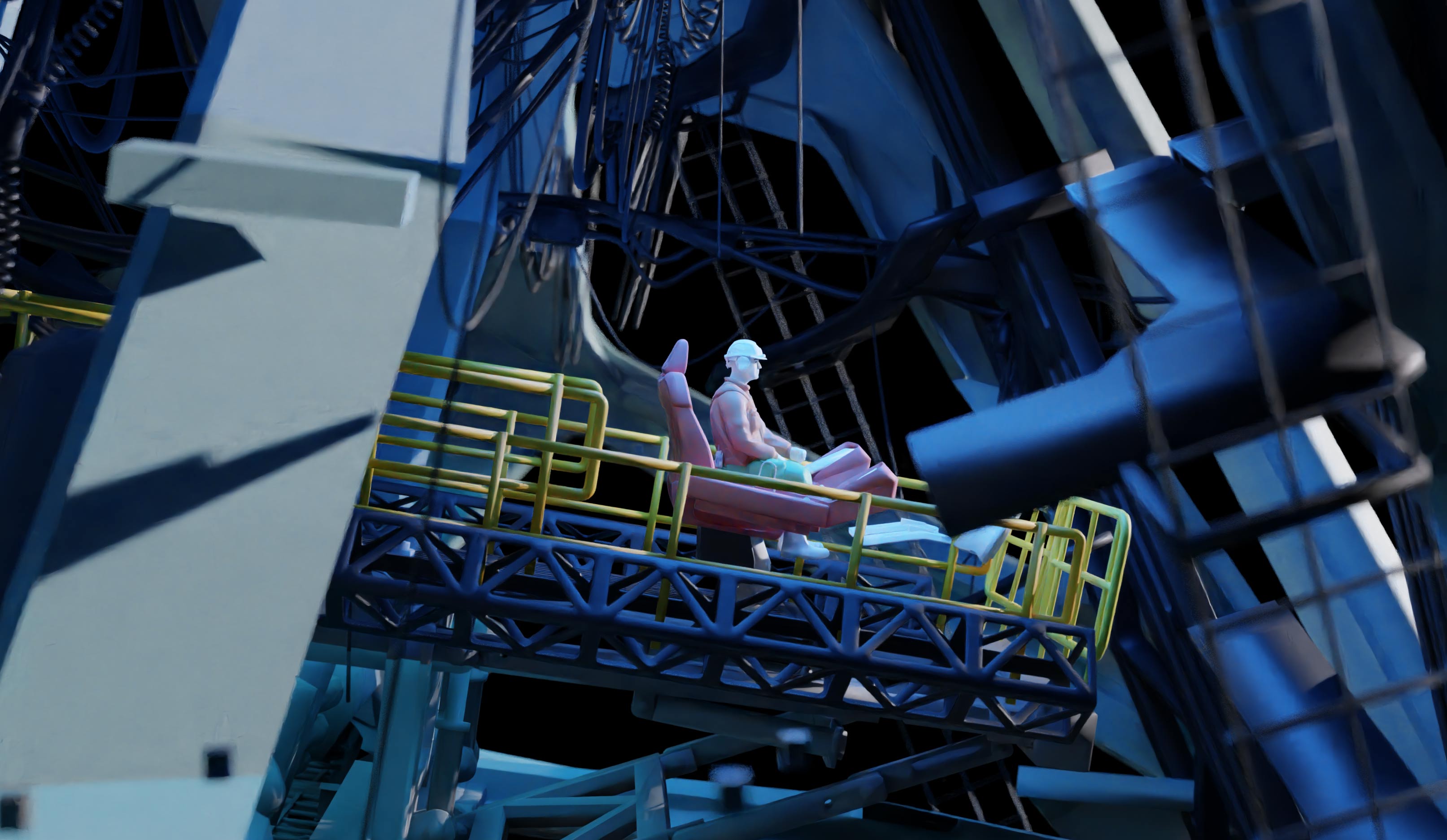
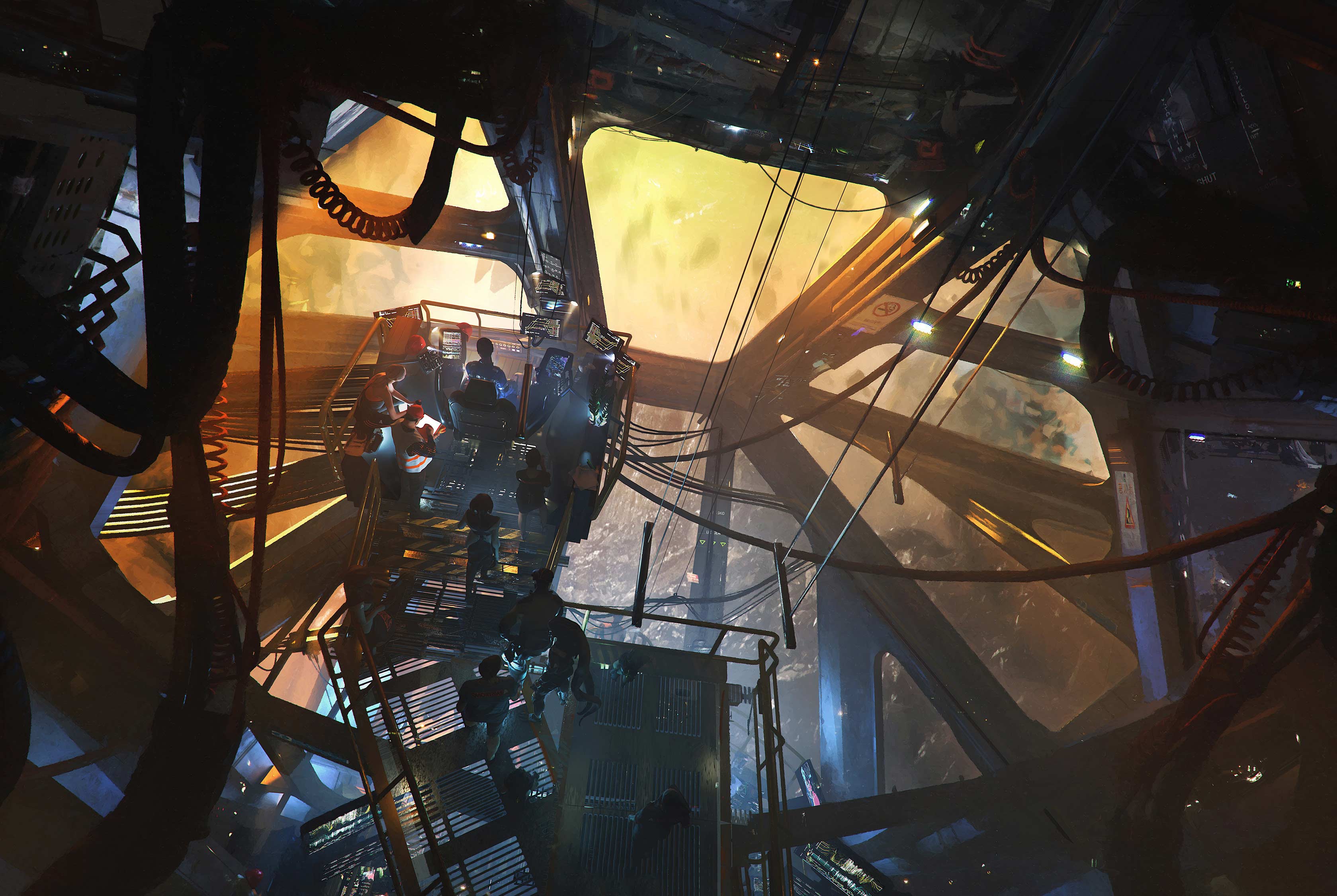
Here you see a different approach. The captain is still somewhat isolated, but the crew hangs out nearby, a tight-knit team, far from home, many kilometers deep into space. Some wear casual gear, others sip coffee or water the potted plant.
Thanks to an advanced shock absorption system, the ship remains steady during extraction, with hardly any disruption inside.
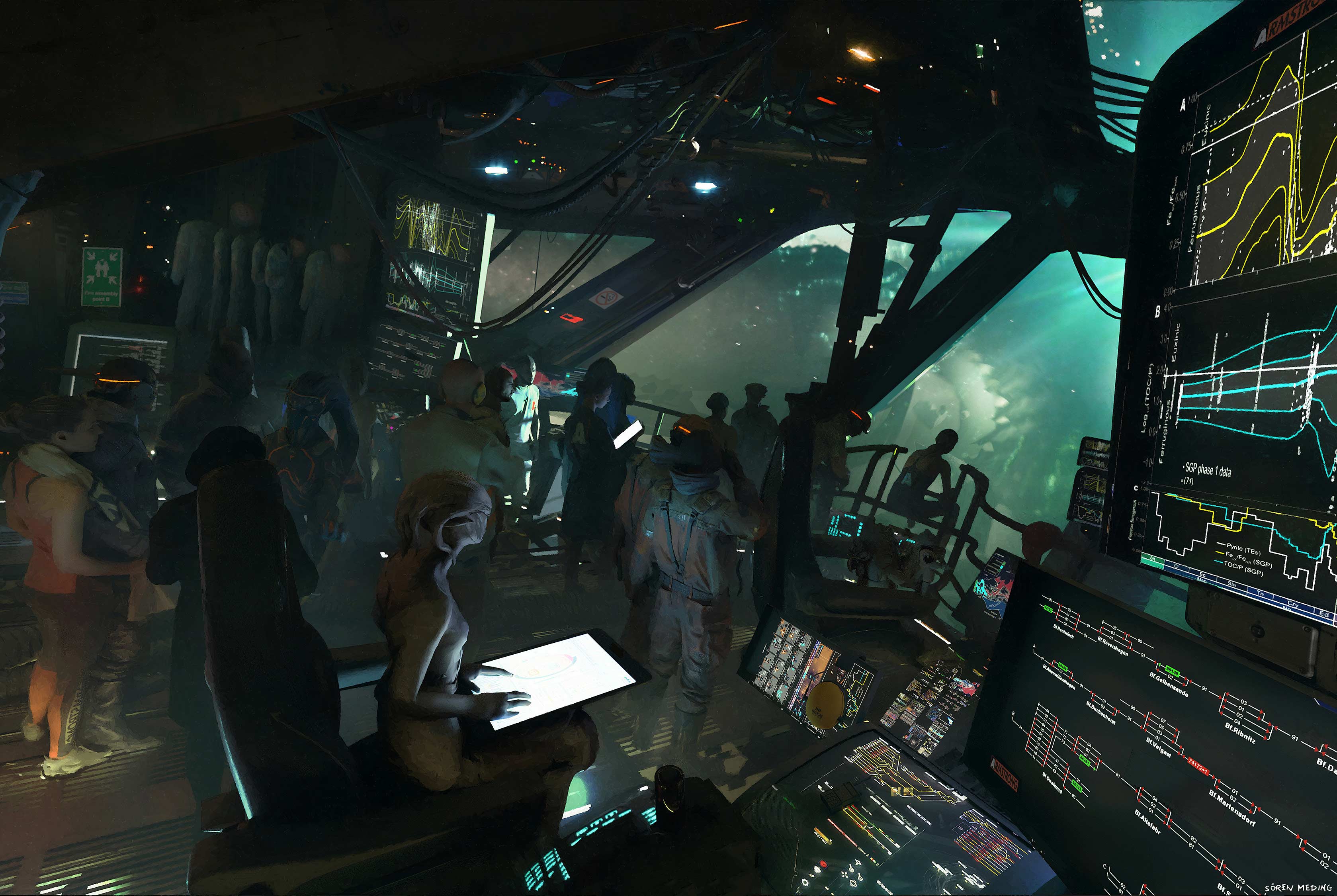
A tense moment, the whole crew gathers, just before breaking through to the long-awaited resource. Everyone stares intently through the reinforced glass, holding their breath in anticipation.
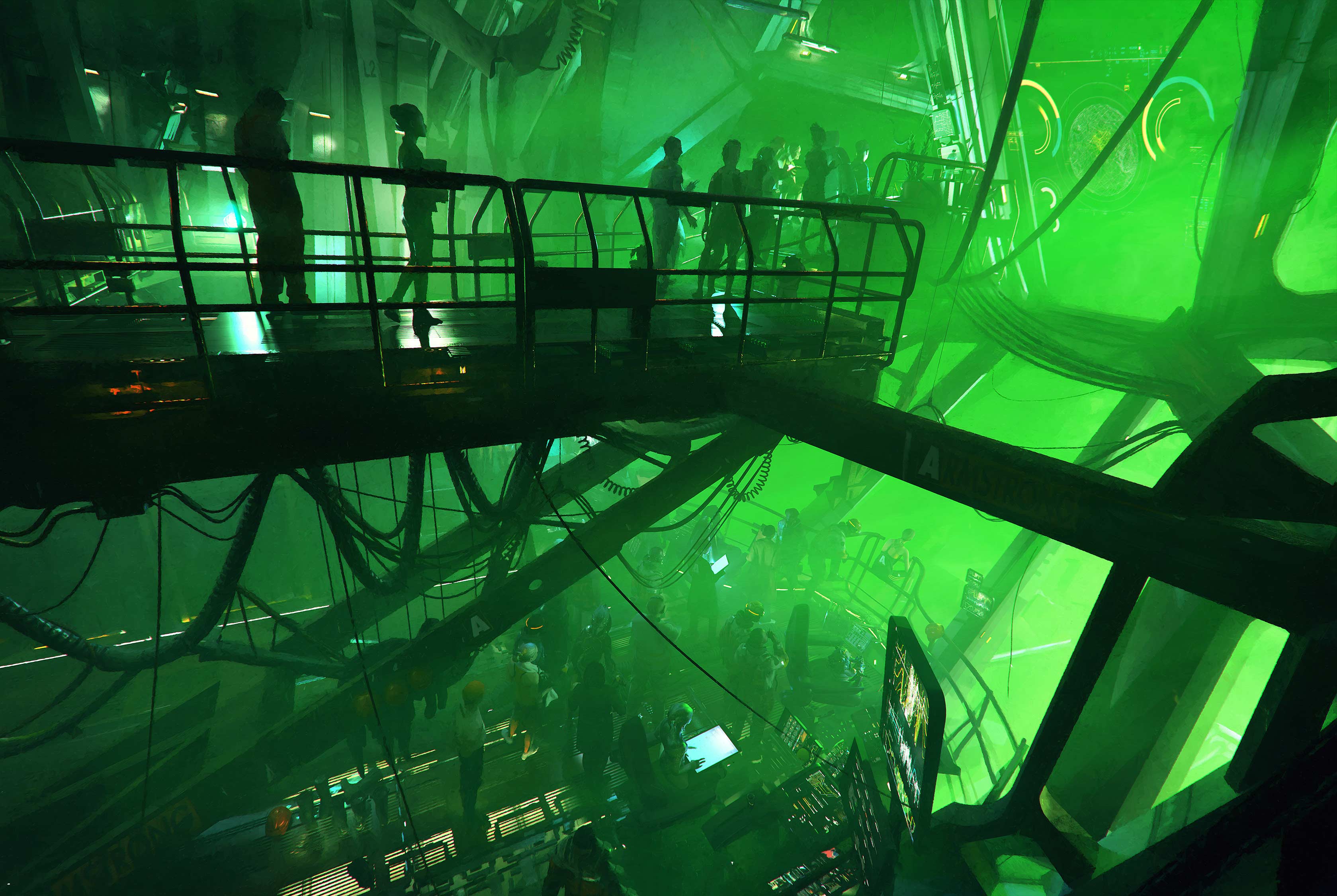
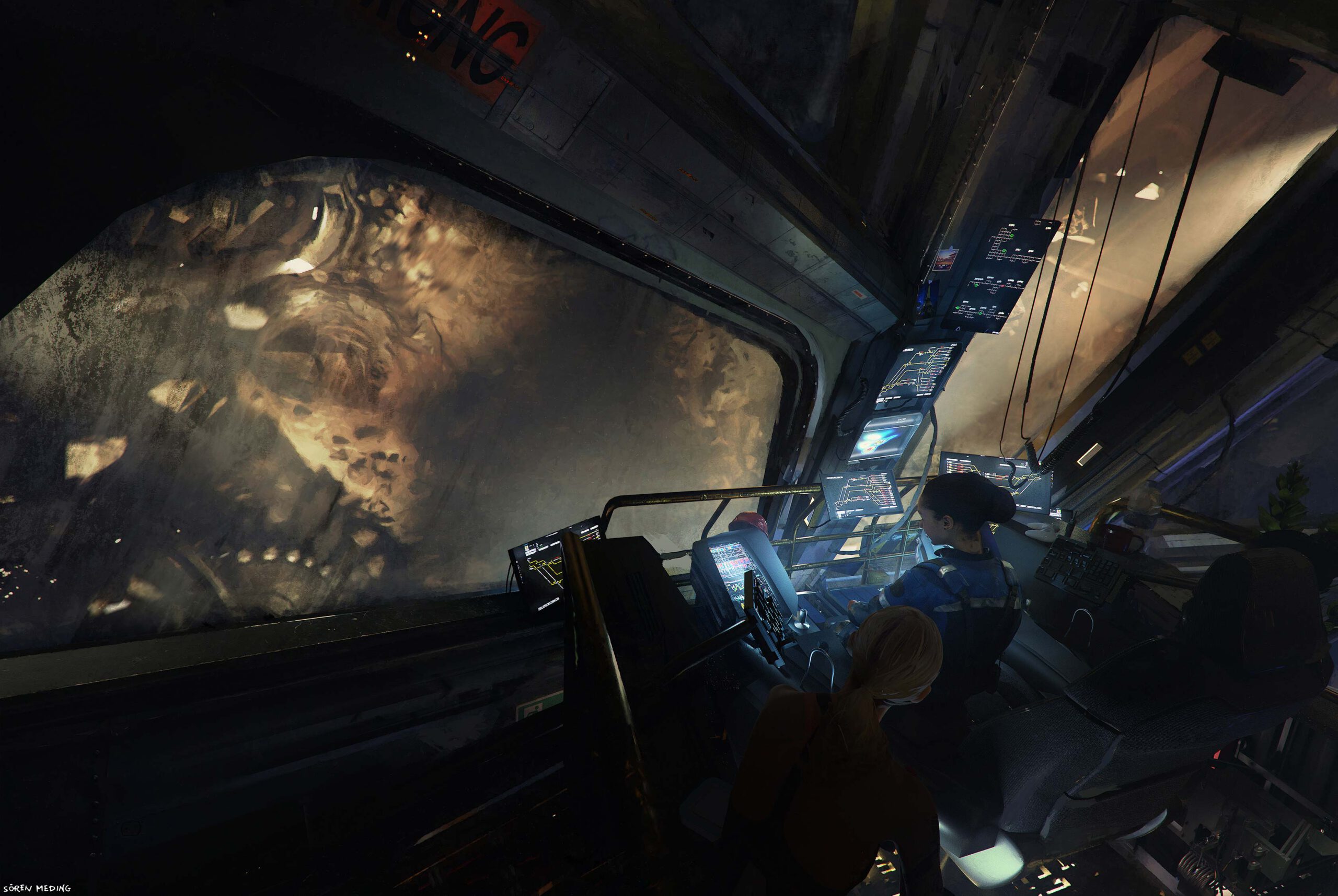
It was important to me to show the crew’s personal belongings. Sci-fi designs often look overly sleek and polished, but this ship needed to feel lived in, like real work happens here. After all, people (and aliens) spend months, maybe even years, on board. Personal mugs, blankets, plants, photos… small touches that bring a sense of home to the far reaches of space.
Engine Room
The final task was to design the interior of the machinery space, not in full detail, but as a rough impression. I wanted to echo the feel of an oil drilling platform: lots of pipes, cables, warning signs, and bold signal colors.
Looking ahead, I imagined modular, flexible conveyor belts that could sort incoming dust or rocks directly into the right containers.
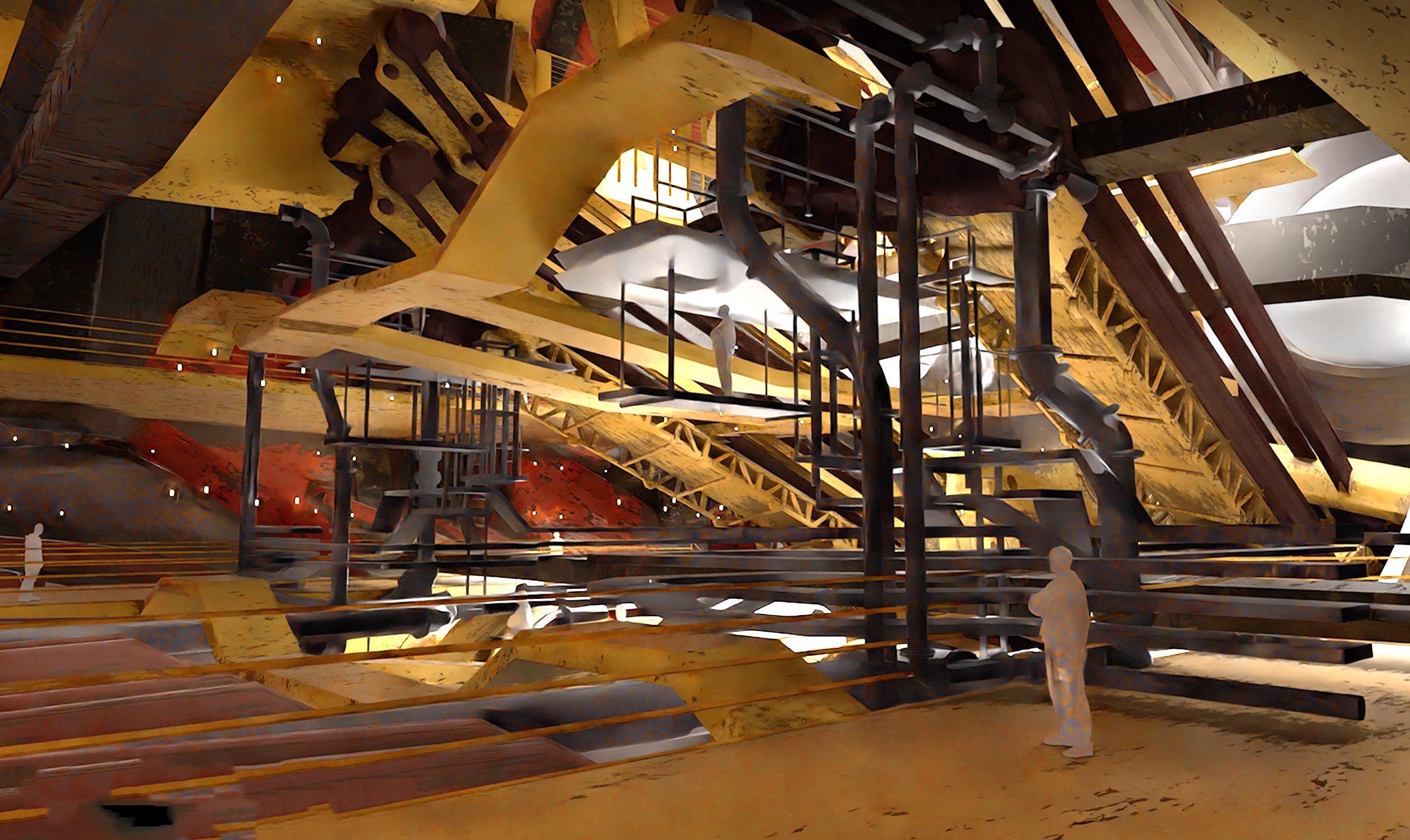
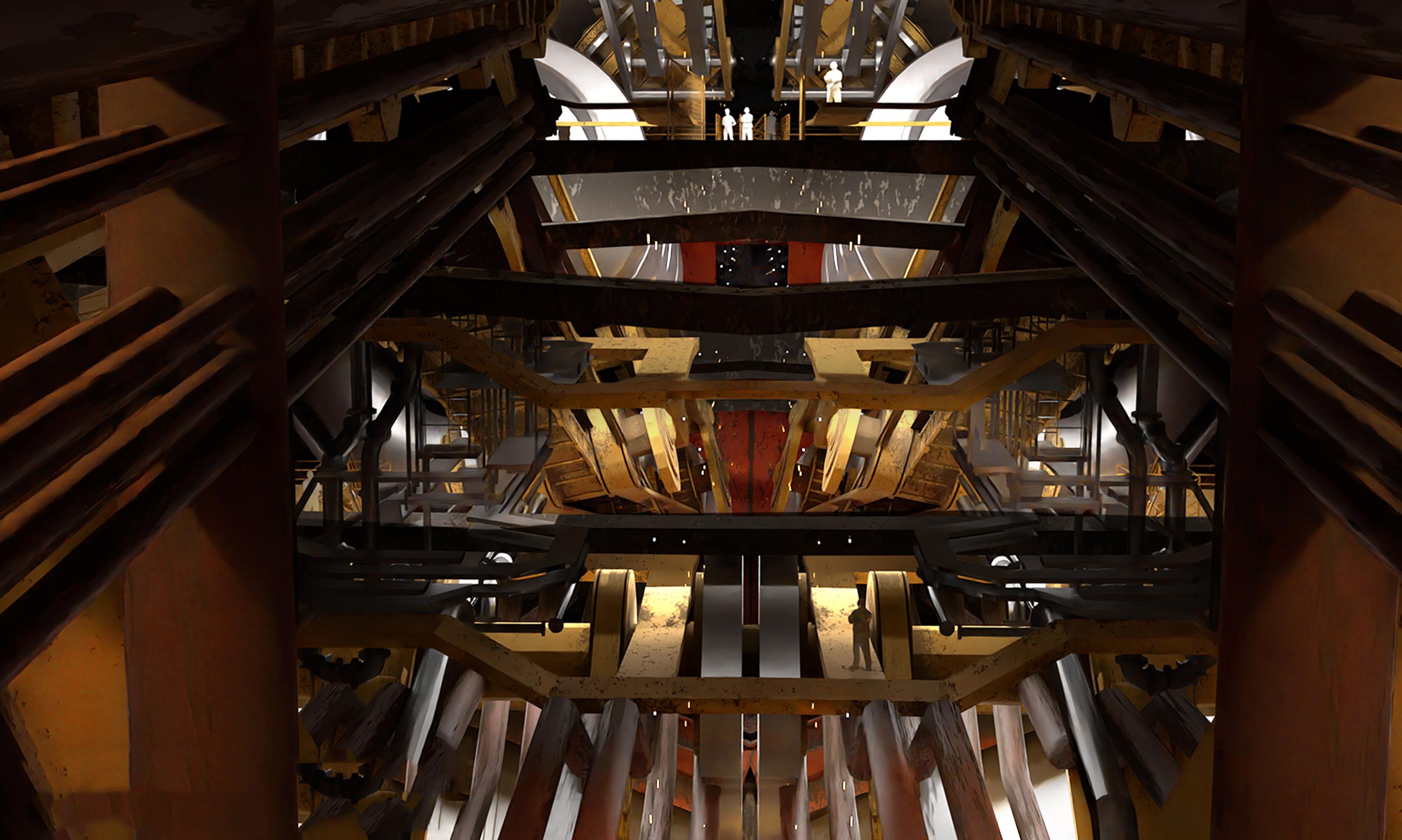
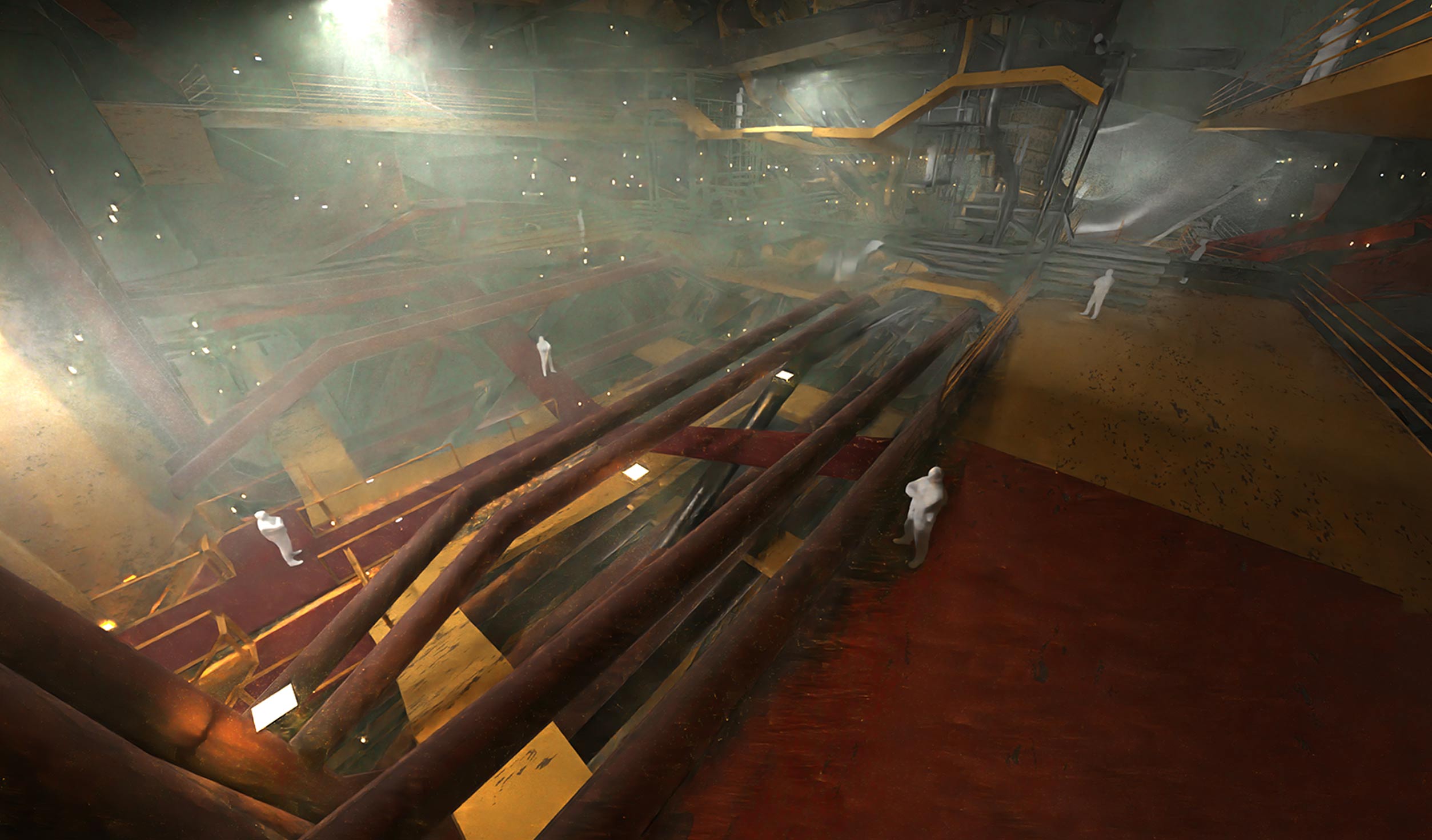
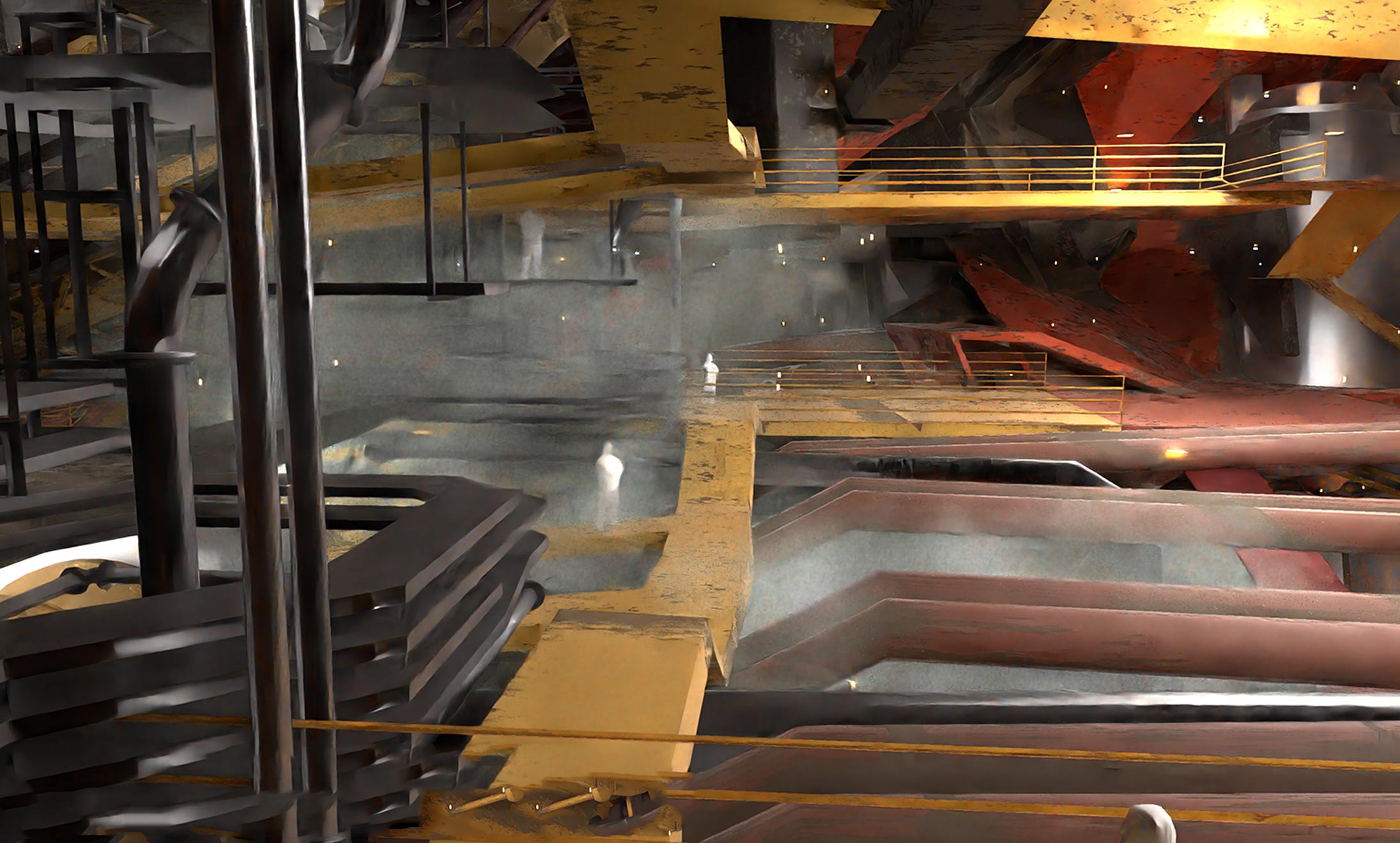
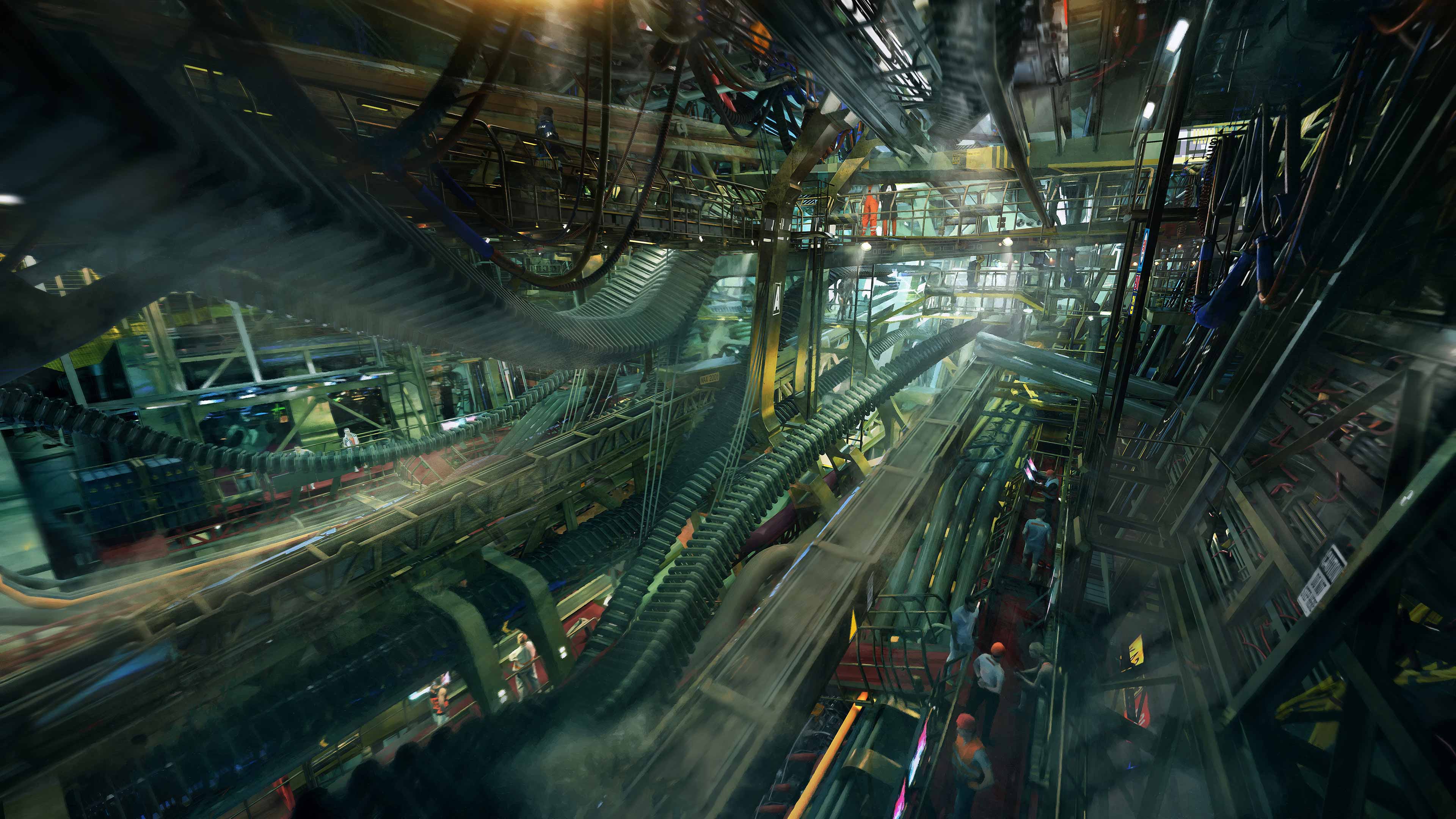
A few more artworks:
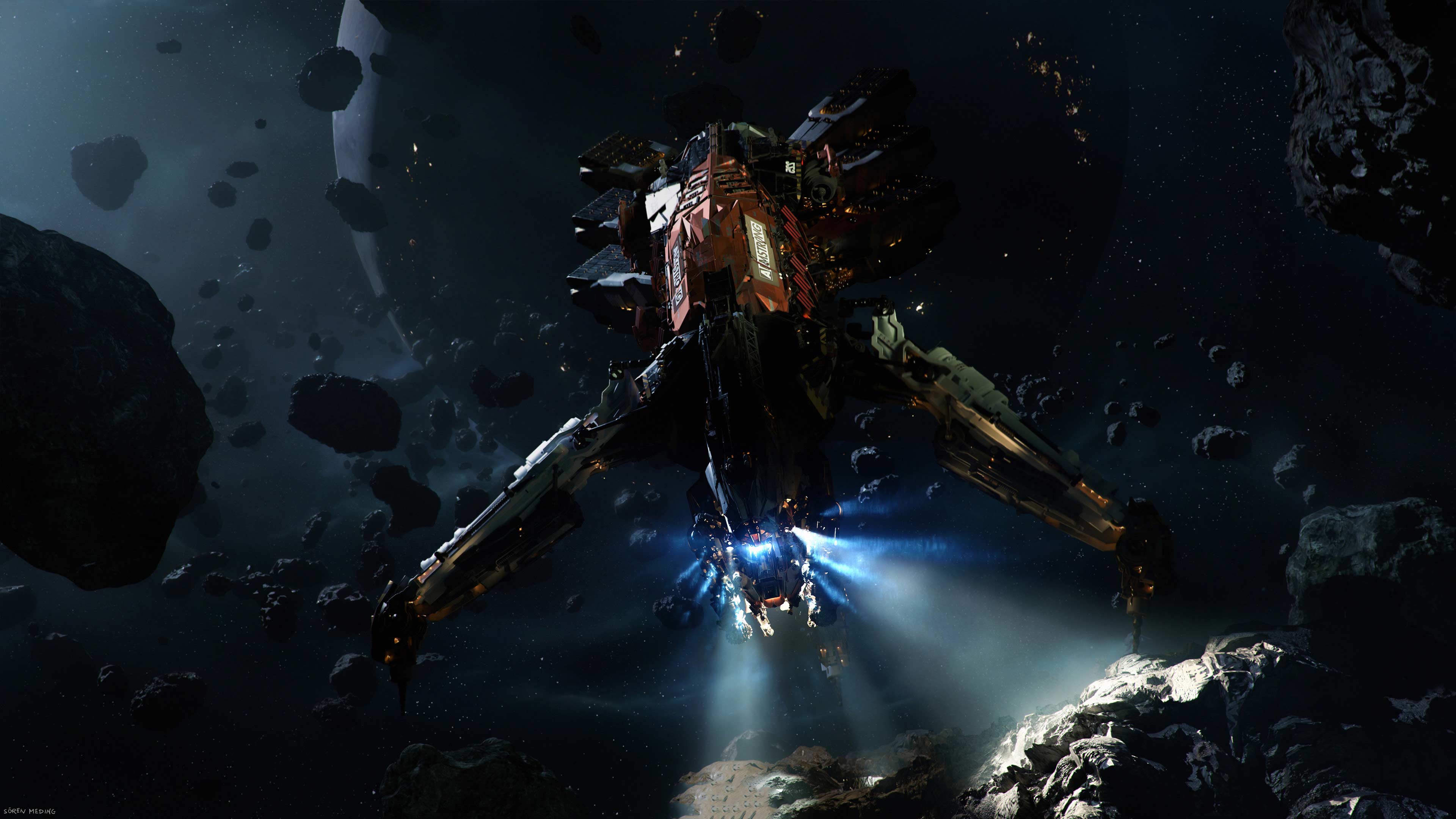
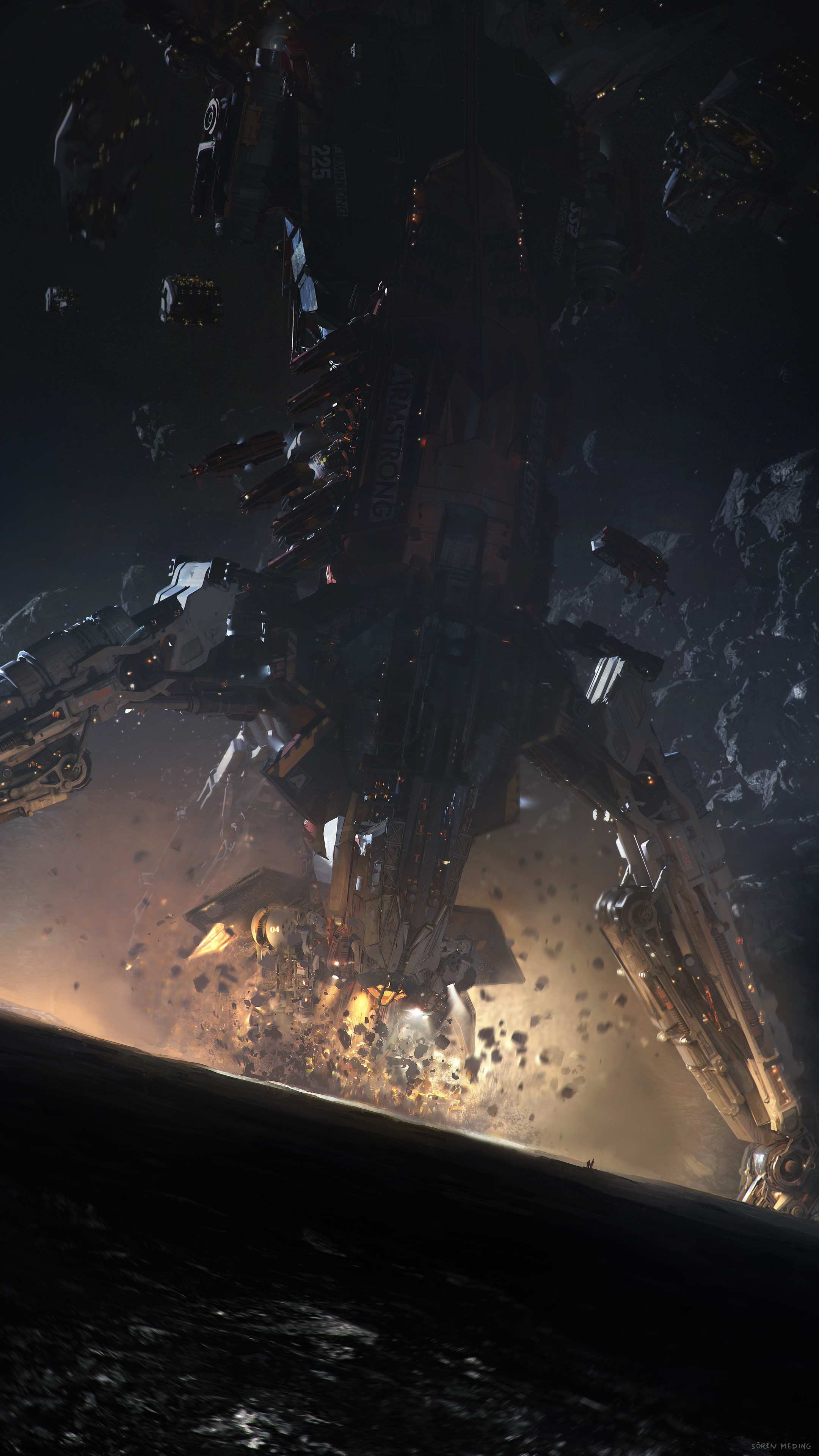
Design Spin-Off: Tip and Tap!
After completing the Armstrong IMP, I was asked to design two additional ships: a medium one (50m) and a small one (30m). Here’s what I came up with. Many of the ideas were inspired by the shapes and textures of the larger vessel.
Once again, I used naming (animal-inspired) as a storytelling tool. Two of the concepts were later selected and finalized by other artists.
